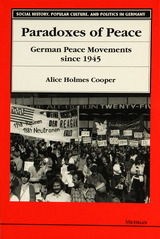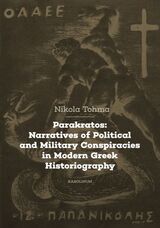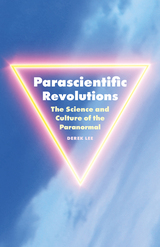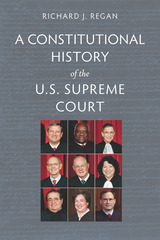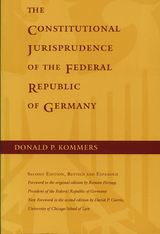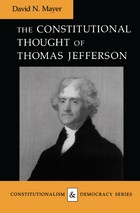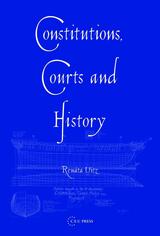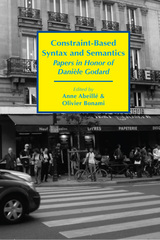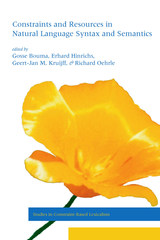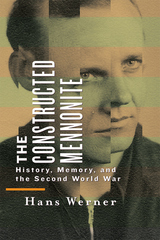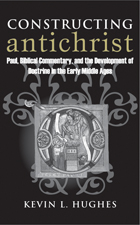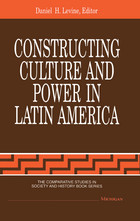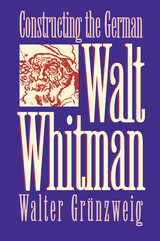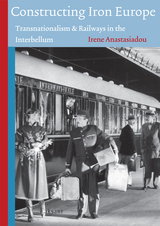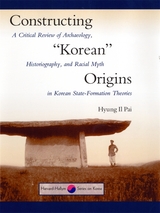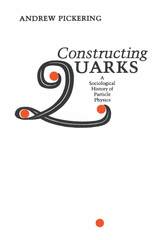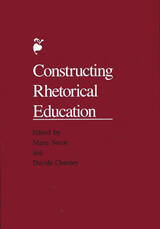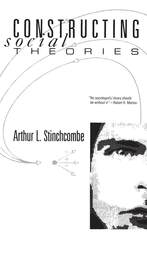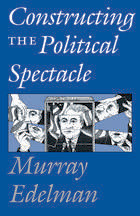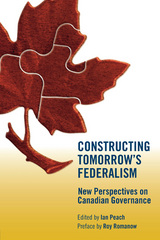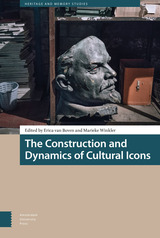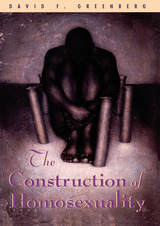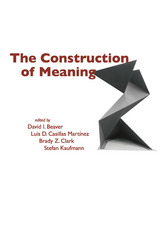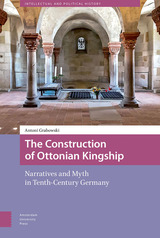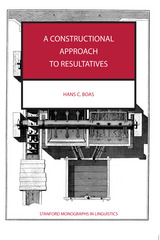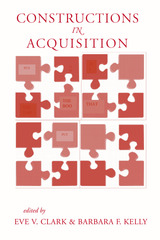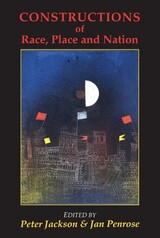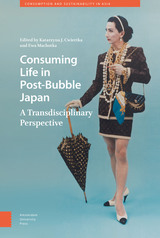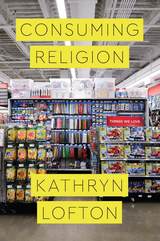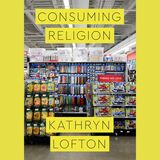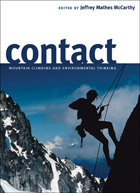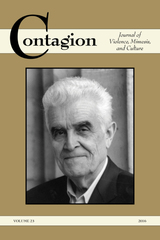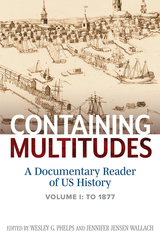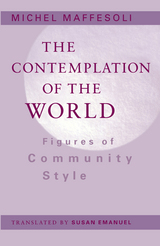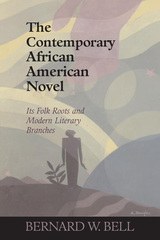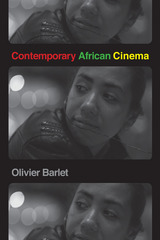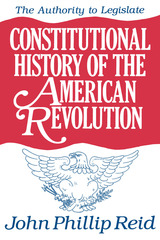 Constitutional History of the American Revolution, Volume III: The Authority to Legislate
John Phillip Reid
University of Wisconsin Press, 1992 This is the first comprehensive study of the constitutionality of the Parliamentary legislation cited by the American Continental Congress as a justification for its rebellion against Great Britain in 1776. The content and purpose of that legislation is well known to historians, but here Reid places it in the context of eighteenth-century constitutional doctrine and discusses its legality in terms of the intellectual premises of eighteenth-century Anglo-American legal values.
The third installment in a planned four-volume work, The Authority to Legislate follows The Authority to Tax and The Authority of Rights. In this volume, Reid shows that the inflexibility of British constitutional principle left no room for settlement or change; Parliament became entrapped by the imperatives of the constitution it was struggling to preserve. He analyzes the legal theories put forward in support of Parliament’s authority to legislate and the specific precedents cited as evidence of that authority.
Reid’s examination of both the debate over the authority to legislate and the constitutional theory underlying the debate shows the extent to which the American Revolution and the Declaration of Independence were actions taken in defense of the rule of law. Considered as a whole, Reid’s Constitutional History of the American Revolution contributes to an understanding of the central role of legal and constitutional standards, especially concern for rule by law, in the development of the American nation.
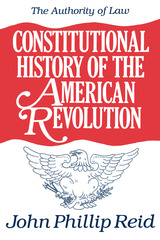 Constitutional History of the American Revolution, Volume IV: The Authority of Law
John Phillip Reid
University of Wisconsin Press, 1993 This is the first comprehensive study of the constitutionality of the Parliamentary legislation cited by the American Continental Congress as a justification for its rebellion against Great Britain in 1776. The content and purpose of that legislation is well known to historians, but here John Phillip Reid places it in the context of eighteenth-century constitutional doctrine and discusses its legality in terms of the intellectual premises of eighteenth-century Anglo-American legal values.
The Authority of Law is the last of a four-volume work, preceded by The Authority to Tax, The Authority of Rights, and The Authority to Legislate. In these previous volumes, Reid argued that there would have been no rebellion had taxation been the only constitutional topic of controversy, that issues of rights actually played a larger role in the drafting of state and federal constitutions than they did in instigating a rebellion, and that the American colonists finally took to the battlefield against the British because of statutes that forced Americans to either concede the authority to legislate or leave the empire.
Expanding on the evidence presented in the first three volumes, The Authority of Law determines the constitutional issues dividing American whigs from British imperialists. Reid summarizes these issues as “the supremacy issue,” “the Glorious Revolution issue,” “the liberty issue,” and the “representation issue.” He then raises a compelling question: why, with so many outstanding lawyers participating in the debate, did no one devise a constitutionally legal way out of the standoff? Reid makes an original suggestion. No constitutional solution was found because the British were more threatened by American legal theory than the Americans were by British theory. British lawyers saw the future of liberty in Great Britain endangered by the American version of constitutional law.
Considered as a whole, Reid’s Constitutional History of the American Revolution contributes to an understanding of the central role of legal and constitutional standards, especially concern for rule by law, in the development of the American nation.
A Constitutional History of the U.S. Supreme Court
Richard Regan
Catholic University of America Press, 2015 The Supreme Courts decisions concerning the first amendment are hotly debated, and the controversy shows no signs of abating as additional cases come before the court. Adding much-needed historical and philosophical background to the discussion, Richard J. Regan reconsiders some of the most important Supreme Court cases regarding the establishment clause and the free exercise of religion.
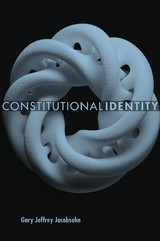 Constitutional Identity
Gary Jeffrey Jacobsohn
Harvard University Press, 2010 In Constitutional Identity, Gary Jeffrey Jacobsohn argues that a constitution acquires an identity through experience—from a mix of the political aspirations and commitments that express a nation’s past and the desire to transcend that past. It is changeable but resistant to its own destruction, and manifests itself in various ways, as Jacobsohn shows in examples as far flung as India, Ireland, Israel, and the United States.
Jacobsohn argues that the presence of disharmony—both the tensions within a constitutional order and those that exist between a constitutional document and the society it seeks to regulate—is critical to understanding the theory and dynamics of constitutional identity. He explores constitutional identity’s great practical importance for some of constitutionalism’s most vexing questions: Is an unconstitutional constitution possible? Is the judicial practice of using foreign sources to resolve domestic legal disputes a threat to vital constitutional interests? How are the competing demands of transformation and preservation in constitutional evolution to be balanced?
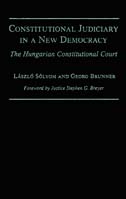 Constitutional Judiciary in a New Democracy: The Hungarian Constitutional Court
Laszlo Solyom and Georg Brunner, Editors
University of Michigan Press, 2000 Two in-depth essays and a selection of twenty-seven of the most important decisions present the Hungarian Constitutional Court as one of the most important actors of the transition into democracy in a post-communist country.
How was it possible that a new Court established in 1990, in a country just released from forty years of Communist rule, was able to enforce a Constitution, maintain the rule of law, and protect the freedom of its citizens in a way comparable to the U.S. Supreme Court? This new Court has issued decisions on topics ranging from the establishment of democracy and a market economy--privatization, compensation for the nationalization of property, and retroactive criminal legislation--as well as such issues as the constitutionality of capital punishment, abortion, freedom of speech and the media, and the separation of powers.
U.S. Supreme Court Justice Stephen Breyer provides the foreword and introduces the two essays that begin the book. In the first essay, Georg Brunner explains how the Court was set up and what its procedures are. In the second, Lázszló Sólyom describes systematically the emergence of the case-law of the Court and its jurisprudence on constitutional rights and on the powers and procedures of the other branches of government. The models followed by the Court are outlined, and its contribution to global constitutionalism explored.
Lázszló Sólyom is President of the Constitutional Court of Hungary and Professor of Law, ELTE University of Budapest. Georg Brunner is Professor of Law, University of Cologne, Germany.
The Constitutional Jurisprudence of the Federal Republic of Germany, 2nd ed.
Donald P. Kommers
Duke University Press Kommers’s comprehensive work surveys the development of German constitutional doctrine between 1949, when the Federal Constitutional Court was founded, and 1996. Extensively revised and expanded to take into account recent developments since German unification, this second edition describes the background, structure, and functions of the Court and provides extensive commentary on German constitutional interpretation, and includes translations of seventy-eight landmark decisions. These cases include the highly controversial religious liberty and free speech cases handed down in 1995.
The Constitutional Jurisprudence of the Federal Republic of Germany, 2nd ed.
Donald P. Kommers
Duke University Press Kommers’s comprehensive work surveys the development of German constitutional doctrine between 1949, when the Federal Constitutional Court was founded, and 1996. Extensively revised and expanded to take into account recent developments since German unification, this second edition describes the background, structure, and functions of the Court and provides extensive commentary on German constitutional interpretation, and includes translations of seventy-eight landmark decisions. These cases include the highly controversial religious liberty and free speech cases handed down in 1995.
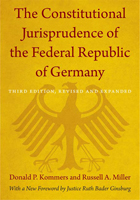 The Constitutional Jurisprudence of the Federal Republic of Germany: Third edition, Revised and Expanded
Donald P. Kommers and Russell A. Miller
Duke University Press, 2012 First published in 1989, The Constitutional Jurisprudence of the Federal Republic of Germany has become an invaluable resource for scholars and practitioners of comparative, international, and constitutional law, as well as of German and European politics. The third edition of this renowned English-language reference has now been fully updated and significantly expanded to incorporate both previously omitted topics and recent decisions of the German Federal Constitutional Court. As in previous editions, Donald P. Kommers and Russell A. Miller's discussions of key developments in German constitutional law are augmented by elegantly translated excerpts from more than one hundred German judicial decisions. Compared to previous editions of The Constitutional Jurisprudence of the Federal Republic of Germany, this third edition more closely tracks Germany's Basic Law and, therefore, the systematic approach reflected in the most-respected German constitutional law commentaries. Entirely new chapters address the relationship between German law and European and international law; social and economic rights, including the property and occupational rights cases that have emerged from Reunification; jurisprudence related to issues of equality, particularly gender equality; and the tension between Germany's counterterrorism efforts and its constitutional guarantees of liberty. Kommers and Miller have also updated existing chapters to address recent decisions involving human rights, federalism, European integration, and religious liberty.
 Constitutional Literacy: A Core Curriculum for a Mulitcultural Nation
Toni Marie Massaro
Duke University Press, 1993 Americans agree that education needs reforming in this country--but after that, agreement ceases. The forces of diversity square off against those pushing cultural unity. The call for a national curriculum clashes with a call to decentralize school authority. This book brings a measured voice and fresh perspective to the educational maelstrom. Considering the debate from the perspective of constitutional law, Toni Marie Massaro offers a remarkably fair and lucid account of both sides, of their historical antagonism, and of what is at stake in the contest over the soul of America's schools. At the same time, she moves to break through the current impasse by offering the first principles of a curriculum mindful of all concerns.
Constitutional Literacy plumbs the most powerful arguments for and against national standards to reveal that these curricular battles reflect a broader, culture-wrenching struggle over whether official recognition of race, ethnicity, gender, religion, or other differences causes more hostility and divisiveness than tolerance. Central to both conflicts is the tension between our desire for a shared national culture--the melting pot ideal--and our fervent belief in our right to dissent. Thus, Massaro shows, the American constitutional commitment to equality, freedom of speech, and freedom of religion is intensely relevant to the curriculum controversy. Constitutional history and practice reveal a crucial paradox: What binds Americans is their common faith in the right to break away from cultural consensus. As such, a call to a national curriculum is inherently a call to conflict and dissent.
Constitutional principles, past education reform efforts, multicultural critiques of American education, modern studies of students' knowledge of American history and government, and ten years of experience teaching law all come into play in Massaro's analysis, and she concludes that shoring up our store of shared knowledge is a proper national objective. But this common store, she insists, must reflect our cultural and ideological differences lest it distort the reality of American life, past and present. Massaro thus proposes that constitutional principles form the basis of a core curriculum for a multicultural nation.
In a debate often characterized by polemics and polls, this eloquent book presses for a different, more nuanced and responsive public vocabulary about race, gender, ethnicity, sexual orientation, and religion. Constitutional literacy, as Massaro defines it here, may be a necessary first step toward this goal.
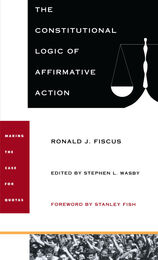 The Constitutional Logic of Affirmative Action
Ronald J. Fiscus
Duke University Press, 1992 Few issues are as mired in rhetoric and controversy as affirmative action. This is certainly no less true now as when Ronald J. Fiscus’s The Constitutional Logic of Affirmative Action was first published in 1992. The controversy has, perhaps, become more charged over the past few years. With this compelling and rigorously reasoned argument for a constitutional rationale of affirmative action, Fiscus clarifies the moral and legal ramifications of this complex subject and presents an important view in the context of the ongoing debate.
Beginning with a distinction drawn between principles of compensatory and distributive justice, Fiscus argues that the former, although often the basis for judgments made in individual discrimination cases, cannot sufficiently justify broad programs of affirmative action. Only a theory of distributive justice, one that assumes minorities have a right to what they would have gained proportionally in a nonracist society, can persuasively provide that justification. On this basis, the author argues in favor of proportional racial quotas—and challenges the charge of “reverse discrimination” raised in protest in the name of the “innocent victims” of affirmative action—as an action necessary to approach the goals of fairness and equality.
The Constitutional Logic of Affirmative Action focuses on Supreme Court affirmative action rulings from Bakke (1976) to Croson (1989) and includes an epilogue by editor Stephen L. Wasby that considers developments through 1995. General readers concerned with racial justice, affirmative action, and public policy, as well as legal specialists and constitutional scholars will find Fiscus’s argument passionate, balanced, and persuasive.
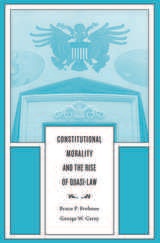 Constitutional Morality and the Rise of Quasi-Law
Bruce P. Frohnen and George W. Carey
Harvard University Press, 2016 Americans are increasingly ruled by an unwritten constitution consisting of executive orders, signing statements, and other forms of quasi-law that lack the predictability and consistency essential for the legal system to function properly. As a result, the U.S. Constitution no longer means what it says to the people it is supposed to govern, and the government no longer acts according to the rule of law. These developments can be traced back to a change in “constitutional morality,” Bruce Frohnen and George Carey argue in this challenging book.
The principle of separation of powers among co-equal branches of government formed the cornerstone of America’s original constitutional morality. But toward the end of the nineteenth century, Progressives began to attack this bedrock principle, believing that it impeded government from “doing the people’s business.” The regime of mixed powers, delegation, and expansive legal interpretation they instituted rejected the ideals of limited government that had given birth to the Constitution. Instead, Progressives promoted a governmental model rooted in French revolutionary claims. They replaced a Constitution designed to mediate among society’s different geographic and socioeconomic groups with a body of quasi-laws commanding the democratic reformation of society.
Pursuit of this Progressive vision has become ingrained in American legal and political culture—at the cost, according to Frohnen and Carey, of the constitutional safeguards that preserve the rule of law.
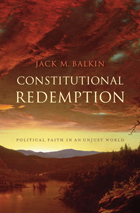 Constitutional Redemption: Political Faith in an Unjust World
Jack M. Balkin
Harvard University Press, 2011 Political constitutions, hammered out by imperfect human beings in periods of intense political controversy, are always compromises with injustice. What makes the U.S. Constitution legitimate, argues this daring book, is Americans’ enduring faith that the Constitution’s promises can someday be redeemed, and the constitutional system be made “a more perfect union.”
A leading constitutional theorist, Balkin argues eloquently that the American constitutional project is based in faith, hope, and a narrative of shared redemption. Our belief that the Constitution will deliver us from evil shows in the stories we tell one another about where our country came from and where it is headed, and in the way we use these historical touchstones to justify our fervent (and opposed) political creeds. Because Americans have believed in a story of constitutional redemption, we have assumed the right to decide for ourselves what the Constitution means, and have worked to persuade others to set it on the right path. As a result, constitutional principles have often shifted dramatically over time. They are, in fact, often political compromises in disguise.
What will such a Constitution become? We cannot know. But our belief in the legitimacy of the Constitution requires a leap of faith—a gamble on the ultimate vindication of a political project that has already survived many follies and near-catastrophes, and whose destiny is still over the horizon.
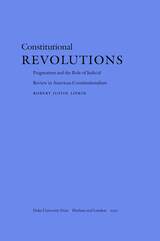 Constitutional Revolutions: Pragmatism and the Role of Judicial Review in American Constitutionalism
Robert Justin Lipkin
Duke University Press, 2000 In Constitutional Revolutions Robert Justin Lipkin radically rethinks modern constitutional jurisprudence, challenging the traditional view of constitutional change as solely an extension or transformation of prior law. He instead argues for the idea of “constitutional revolutions”—landmark decisions that are revolutionary because they are not generated from legal precedent and because they occur when the Constitution fails to provide effective procedures for accommodating a needed change. According to Lipkin, U.S. constitutional law is driven by these revolutionary judgments that translate political and cultural attitudes into formal judicial decisions.
Drawing on ethical theory, philosophy of science, and constitutional theory, Lipkin provides a progressive, postmodern, and pragmatic theory of constitutional law that justifies the critical role played by the judiciary in American democracy. Judicial review, he claims, operates as a mechanism to allow “second thought,” or principled reflection, on the values of the wider culture. Without this revolutionary function, American democracy would be left without an effective institutional means to formulate the community’s considered judgments about good government and individual rights. Although judicial review is not the only forum for protecting this dimension of constitutional democracy, Lipkin maintains that we would be wise not to abandon judicial review unless a viable alternative emerges.
Judges, lawyers, law professors, and constitutional scholars will find this book a valuable resource.
 Constitutional Self-Government
Christopher L. Eisgruber
Harvard University Press, 2001 Most of us regard the Constitution as the foundation of American democracy. How, then, are we to understand the restrictions that it imposes on legislatures and voters? Why, for example, does the Constitution allow unelected judges to exercise so much power? And why is this centuries-old document so difficult to amend? In short, how can we call ourselves a democracy when we are bound by an entrenched, and sometimes counter-majoritarian, constitution?
In Constitutional Self-Government, Christopher Eisgruber focuses directly on the Constitution's seemingly undemocratic features. Whereas other scholars have tried to reconcile these features with majority rule, or simply acknowledged them as necessary limits on democracy, Eisgruber argues that constitutionalism is best regarded not as a constraint upon self-government, but as a crucial ingredient in a complex, non-majoritarian form of democracy. In an original and provocative argument, he contends that legislatures and elections provide only an incomplete representation of the people, and he claims that the Supreme Court should be regarded as another of the institutions able to speak for Americans about justice. At a pivotal moment of worldwide interest in judicial review and renewed national controversy over the Supreme Court's role in politics, Constitutional Self-Government ingeniously locates the Constitution's value in its capacity to sustain an array of institutions that render self-government meaningful for a large and diverse people.
 Constitutional Theocracy
Ran Hirschl
Harvard University Press, 2010 At the intersection of two sweeping global trends—the rise of popular support for principles of theocratic governance and the spread of constitutionalism and judicial review—a new legal order has emerged: constitutional theocracy. It enshrines religion and its interlocutors as “a” or “the” source of legislation, and at the same time adheres to core ideals and practices of modern constitutionalism. A unique hybrid of apparently conflicting worldviews, values, and interests, constitutional theocracies thus offer an ideal setting—a “living laboratory” as it were—for studying constitutional law as a form of politics by other means. In this book, Ran Hirschl undertakes a rigorous comparative analysis of religion-and-state jurisprudence from dozens of countries worldwide to explore the evolving role of constitutional law and courts in a non-secularist world.
Counterintuitively, Hirschl argues that the constitutional enshrinement of religion is a rational, prudent strategy that allows opponents of theocratic governance to talk the religious talk without walking most of what they regard as theocracy’s unappealing, costly walk. Many of the jurisdictional, enforcement, and cooptation advantages that gave religious legal regimes an edge in the pre-modern era, are now aiding the modern state and its laws in its effort to contain religion. The “constitutional” in a constitutional theocracy thus fulfills the same restricting function it carries out in a constitutional democracy: it brings theocratic governance under check and assigns to constitutional law and courts the task of a bulwark against the threat of radical religion.
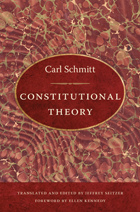 Constitutional Theory
Carl Schmitt
Duke University Press, 2008 Carl Schmitt’s magnum opus, Constitutional Theory, was originally published in 1928 and has been in print in German ever since. This volume makes Schmitt’s masterpiece of comparative constitutionalism available to English-language readers for the first time. Schmitt is considered by many to be one of the most original—and, because of his collaboration with the Nazi party, controversial—political thinkers of the twentieth century. In Constitutional Theory, Schmitt provides a highly distinctive and provocative interpretation of the Weimar Constitution. At the center of this interpretation lies his famous argument that the legitimacy of a constitution depends on a sovereign decision of the people. In addition to being subject to long-standing debate among legal and political theorists in Western Europe and the United States, this theory of constitution-making as decision has profoundly influenced constitutional theorists and designers in Asia, Latin America, and Eastern Europe. Constitutional Theory is a significant departure from Schmitt’s more polemical Weimar-era works not just in terms of its moderate tone. Through a comparative history of constitutional government in Europe and the United States, Schmitt develops an understanding of liberal constitutionalism that makes room for a strong, independent state. This edition includes an introduction by Jeffrey Seitzer and Christopher Thornhill outlining the cultural, intellectual, and political contexts in which Schmitt wrote Constitutional Theory; they point out what is distinctive about the work, examine its reception in the postwar era, and consider its larger theoretical ramifications. This volume also contains extensive editorial notes and a translation of the Weimar Constitution.
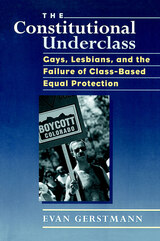 The Constitutional Underclass: Gays, Lesbians, and the Failure of Class-Based Equal Protection
Evan Gerstmann
University of Chicago Press, 1999 When the Supreme Court struck down Colorado's Amendment 2—which would have nullified all state and local laws protecting gays and lesbians from discrimination—it was widely regarded as a victory for gay rights. Yet many gays and lesbians still risk losing their jobs, custody of their children, and even their liberty under the law. Using the Colorado initiative as his focus, Gerstmann untangles the complex standards and subtle rhetoric the Supreme Court uses to apply the equal protection clause.
The Court divides people into legal classes that receive varying levels of protection; gays and lesbians and other groups, such as the elderly and the poor, receive the least. Gerstmann reveals how these standards are used to favor certain groups over others, and also how Amendment 2 advocates used the Court's doctrine to convince voters that gays and lesbians were seeking "special rights" in Colorado.
Concluding with a call for wholesale reform of equal-protection jurisprudence, this book is essential reading for anyone interested in fair, coherent, and truly equal protection under the law.
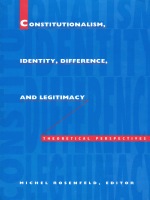 Constitutionalism, Identity, Difference, and Legitimacy: Theoretical Perspectives
Michel Rosenfeld
Duke University Press, 1994 Interest in constitutionalism and in the relationship among constitutions, national identity, and ethnic, religious, and cultural diversity has soared since the collapse of socialist regimes in Eastern Europe and the former Soviet Union. Since World War II there has also been a proliferation of new constitutions that differ in several essential respects from the American constitution. These two developments raise many important questions concerning the nature and scope of constitutionalism. The essays in this volume—written by an international group of prominent legal scholars, philosophers, political scientists, and social theorists—investigate the theoretical implications of recent constitutional developments and bring useful new perspectives to bear on some of the longest enduring questions confronting constitutionalism and constitutional theory. Sharing a common focus on the interplay between constitutional identity and individual or group diversity, these essays offer challenging new insights on subjects ranging from universal constitutional norms and whether constitutional norms can be successfully transplanted between cultures to a consideration of whether constitutionalism affords the means to reconcile a diverse society’s quest for identity with its need to properly account for its differences; from the relation between constitution-making and revolution to that between collective interests and constitutional liberty and equality. This collection’s broad scope and nontechnical style will engage scholars from the fields of political theory, social theory, international studies, and law. Contributors. Andrew Arato, Aharon Barak, Jon Elster, George P. Fletcher, Louis Henkin, Arthur J. Jacobson, Carlos Santiago Nino, Ulrich K. Preuss, David A. J. Richards, Michel Rosenfeld, Dominique Rousseau, András Sajó, Frederick Schauer, Bernhard Schlink, M. M. Slaughter, Cass R. Sunstein, Ruti G. Teitel, Robin West
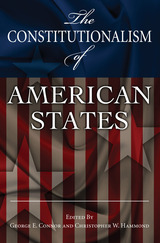 The Constitutionalism of American States
Edited by George E. Connor & Christopher W. Hammons
University of Missouri Press, 2008
This comparative study of American state constitutions offers insightful overviews of the general and specific problems that have confronted America’s constitution writers since the founding. Each chapter reflects the constitutional history and theory of a single state, encompassing each document’s structure, content, and evolution.
The text is grounded in the model presented by constitutional scholar Donald S. Lutz in The Origins of American Constitutionalism so that even when a state has a relatively stable constitutional history, Lutz’s framework can be used to measure the evolving meaning of the document. With contributors drawn from state governments as well as academia, this is the first work to offer a framework by which state constitutions can be analyzed in relation to one another and to the federal Constitution.
The volume begins with chapters on the New England, Mid-Atlantic, Border, and Southern states. While regional similarities within and between the New England and Mid-Atlantic states are noteworthy, the colonial aspect of their history laid the foundation for national constitution-making. And while North and South moved in distinct directions, the Border states wrestled with conflicting constitutional traditions in the same way that they wrestled with their place in the Union.
Southern states that seceded are shown to have had a common set of problems in their constitutions, and the post–Civil War South emerged from that conflict with a constitutionalism that was defined for it by the war’s victors. These chapters reveal that constitutional self-definition, while not evident in all of the former Confederate states, has redeveloped in the South in the intervening 140 years.
Sections devoted to the Midwest, the Plains, the Mountain West, the Southwest, and the West reflect the special circumstances of states that arose from American expansion. Chapters describe how states of the Midwest, united by common roots in the Northwest Ordinance, wrote constitutions that were defined by that act’s parameters while reflecting the unique cultural and political realities of each state. Meanwhile, the Plains states developed a constitutionalism that was historically rooted in progressivism and populism, sometimes in the clash between these two ideologies.
Perhaps more than any other region, the Mountain West was defined by the physical landscape, and these chapters relate how those states were able to define their individual constitutional identities in spite of geography rather than because of it. And although western states borrowed heavily from those with much older constitutional traditions, the contributors reveal that they borrowed differently—and in different proportions—in order to craft constitutions that were uniquely adapted to their historical situation and peoples.
This work demonstrates the diversity of our governmental arrangements and provides a virtual introduction to the political culture of each—many offering stories of constitutional foundings that are rich with meaning. Although these fifty documents are defined in a federal context, state constitutions are necessary to complete the constitutionalism of the United States.
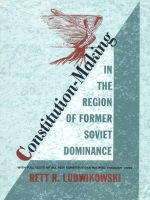 Constitution-Making in the Region of Former Soviet Dominance
Rett R. Ludwikowski
Duke University Press, 1996 With the end of the Cold War and the disintegration of the Soviet Union, newly formed governments throughout Eastern Europe and the former Soviet states have created constitutions that provide legal frameworks for the transition to free markets and democracy. In Constitution-Making in the Region of Former Soviet Dominance, Rett R. Ludwikowski offers a comparative study of constitution-making in progress and provides insight into the complex political and social circumstances that are shaping its present and future. The first study of these recent constitutional developments, this book also provides an appendix of all newly ratified constitutions in the region, an essential new reference source for scholars, students, and professionals.
Beginning with a review of the constitutional traditions of Eastern and Central Europe, Ludwikowski goes on to offer analysis of the recent process of political change in the region. A second section focuses specifically on the the new constitutions and such issues as the selection of the form of government, concepts of divisions of power, unicameralism vs. bicameralism, the flexibility or rigidity of constitutions as working documents, and the process of reviewing the constitutionality of laws. Individual states as framed in these documents are analyzed in economic, political, and cultural terms. Although it is too soon to fully consider the implementation of these constitutions, special attention is devoted to the effect of reform on human rights protection, a notorious problem of continuing concern in the region. A final section offers an insightful comparative study of constitutional law by reviewing the post-Soviet process of constitution-making against the backdrop of Western constitutional traditions.
Constitution-Making in the Region of Former Soviet Dominance is both a comprehensive study of constitutional developments in the former Soviet bloc and a primary reference tool for scholars of constitutional law, and Eastern European and post-Soviet studies.
Constitutions, Courts, and History: Historical Narratives in Constitutional Adjudication
Renata Uitz
Central European University Press, 2005 Emphasizes the role history and historical narratives play in constitutional adjudication. Uitz provocatively draws attention to the often-tense relationship between the constitution and historical precedence highlighting the interpretive and normative nature of the law. Her work seeks to understand the conditions under which references to the past, history and traditions are attractive to lawyers, even when they have the potential of perpetuating indeterminacy in constitutional reasoning. Uitz conclusively argues that this constitutional indeterminacy is obscured by 'judicial rhetorical toolkits' of continuity and reconciliation that allow the court's reliance on the past to be unaccounted for. Uitz' rigorous analysis and extensive research makes this work an asset to legal scholars and practitioners alike.
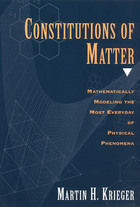 Constitutions of Matter: Mathematically Modeling the Most Everyday of Physical Phenomena
Martin H. Krieger
University of Chicago Press, 1996 In this insightful work, Martin H. Krieger shows what physicists are really doing when they employ mathematical models as research tools. He argues that the technical details of these complex calculations serve not only as a means to an end, but also reveal key aspects of the physical properties they model.
Krieger's lucid discussions will help readers to appreciate the larger physical issues behind the mathematical detail of modern physics and gain deeper insights into how theoretical physicists work. Constitutions of Matter is a rare, behind-the-scenes glimpse into the world of modern physics.
"[Krieger] provides students of physics and applied mathematics with a view of the physical forest behind the mathematical trees, historians and philosophers of science with insights into how theoretical physicists go about their work, and technically advanced general readers with a glimpse into the discipline."—Scitech Book News
 The Constitution’s Text in Foreign Affairs
Michael D. Ramsey
Harvard University Press, 2007 This book describes the constitutional law of foreign affairs, derived from the historical understanding of the Constitution's text. It examines timeless and recurring foreign affairs controversies--such as the role of the president and Congress, the power to enter armed conflict, and the power to make and break treaties--and shows how the words, structure, and context of the Constitution can resolve pivotal court cases and leading modern disputes. The book provides a counterpoint to much conventional discussion of constitutional foreign affairs law, which tends to assume that the Constitution's text and history cannot give much guidance, and which rests many of its arguments upon modern practice and policy considerations.
Using a close focus on the text and a wide array of historical sources, Michael Ramsey argues that the Constitution's original design gives the president substantial independent powers in foreign affairs. But, contrary to what many presidents and presidential advisors contend, these powers are balanced by the independent powers given to Congress, the Senate, the states, and the courts. The Constitution, Ramsey concludes, does not make any branch of government the ultimate decision maker in foreign affairs, but rather divides authority among multiple independent power centers.
 Constrained Expertise in India and China: Knowledge and Power in Policymaking
Manjari Mahajan
Amsterdam University Press, 2025 Constrained Expertise in India and China explores what kinds of knowledge and knowledge purveyors get mobilized and privileged, and what gets sidelined in policymaking in India and China. Through its detailed empirical studies in both countries, the volume illuminates a trend of increasing concentration of political authority which has frequently demanded that experts be aligned with the central government’s agenda. Spaces are shrinking for divergent and oppositional viewpoints, whether these come from the bureaucracy, academia, think tanks, or NGOs. The declining autonomy of experts has been exacerbated by institutional structures, since knowledge purveyors that directly contribute to policymaking typically have been embedded within bureaucracies or otherwise dependent on the state rather than occupying independent bases. Both countries face the challenge of how to build and sustain ecosystems of heterogeneous experts that are not simply echo chambers of executive authority.
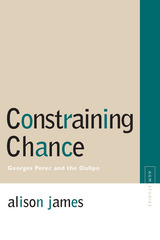 Constraining Chance: Georges Perec and the Oulipo
Alison Sian James
Northwestern University Press, 2008 A token of the world’s instability and of human powerlessness, chance is inevitably a crucial literary theme. It also presents formal problems: Must the artist struggle against chance in pursuit of a flawless work? Or does chance have a place in the artistic process or product? This book examines the representation and staging of chance in literature through the study of a specific case—the work of the twentieth-century French writer Georges Perec (1936–82). In Constraining Chance, James explores the ways in which Perec’s texts exploit the possibilities of chance, by both tapping into its creative potential and controlling its operation. These works, she demonstrates, strive to capture essential aspects of human life: its "considerable energy" (Perec’s phrase), its boundless possibilities, but also the constraints and limitations that bind it. A member of the Ouvroir de littérature potentielle (known as Oulipo), Perec adopted the group’s dictum that the literary work should be "anti-chance"—a product of fully conscious creative processes. James shows how Perec gave this notion a twist, using Oulipian precepts both to explore the role of chance in human existence and to redefine the possibilities of literary form. Thus the investigation of chance links Perec’s writing methods, which harness chance for creative purposes, to the thematic exploration of causality, chance, and fate in his writings. Constraining Chance has received early praise from scholars in the field. Warren F. Motte calls it "an erudite, engaging, intellectually intrepid reflection on the ways in which one of the most powerful authors of the twentieth century grappled with the notion of chance. [James] writes with both elegance and authority, inviting us to see Georges Perec's work through a new lens, one where chance may be viewed as a positive potential, fully enlisted in the service of ‘intentional’ literature."
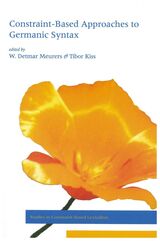 Constraint-Based Approaches to Germanic Syntax
Edited by W. Detmar Meurers and Tibor Kiss
CSLI, 2001 A wealth of research has been conducted on the various linguistic phenomena found in Germanic languages. But these studies were restricted by their use of only one theoretical perspective to analyze one particular language. Inspired by the need to expand the research base of Germanic languages while broadening the empirical coverage of constraint-based linguistic approaches, a handful of researchers are employing various constraint-based theoretical perspectives to study multiple Germanic languages.
This volume begins with an introduction to the recent research performed on Germanic syntax using constraint-based frameworks. It then goes on to investigate the linguistic phenomena found in the grammar of the German and Danish languages. Using such approaches as Lexical-Functional Grammar and Head-Driven Phrase Structure Grammar, contributors shed a different light on theoretical issues addressed by past studies, including semi-free word order, partial front phenomena, and complex predicate formation. While alternative approaches have assumed that meaning (semantics) is dependent on form (syntax), various analyses presented in this volume explore the idea that both form and meaning are equally constitutive for grammatical descriptions.
Constraint-Based Syntax and Semantics: Papers in Honor of Danièle Godard
Edited by Anne Abeille and Olivier Bonami
CSLI, 2018 This volume is devoted to the syntax and semantics of various languages, studied with models based on constraints. Both French and international linguists present their work in tribute to Danièle Godard, emeritus research director at the Centre national de la recherche scientifique in France, a member of the Laboratoire de Linguistique Formelle at Université Paris Diderot, and a specialist in the syntax and semantics of French and Romance languages.
Constraints and Resources in Natural Language Syntax and Semantics
Edited by Gosse Bouma, Erhard Hinrichs, Geert-Jan M. Kruijff, and Richard Oehrle
CSLI, 1999 This collection draws together recent work on constraint-based and resource-sensitive approaches to the grammar of natural languages. Some of the issues addressed are: extraction phenomena in a range of languages, the syntax of nominal phrases, the role of argument structure, defining the interface between syntax and morphology and between semantics and prosody, quantifier scope, remnant movement, construction grammar, and formal and computational aspects of grammar formalisms. This volume brings together the leading linguists, logicians, and computer scientists working on Head-driven Phrase Structure Grammar and Categorial Grammar. Derived from two recent conferences on Formal Grammar and Head-driven Phrase Structure Grammar in Aix (1997) and Saarbrücken (1998), this volume represents the most current work in these frameworks.
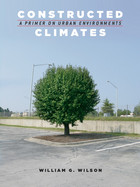 Constructed Climates: A Primer on Urban Environments
William G. Wilson
University of Chicago Press, 2011 As our world becomes increasingly urbanized, an understanding of the context, mechanisms, and consequences of city and suburban environments becomes more critical. Without a sense of what open spaces such as parks and gardens contribute, it’s difficult to argue for their creation and maintenance: in the face of schools needing resources, roads and sewers needing maintenance, and people suffering at the hands of others, why should cities and counties spend scarce dollars planting trees and preserving parks? In Constructed Climates, ecologist William G. Wilson demonstrates the value of urban green. Focusing specifically on the role of vegetation and trees, Wilson shows the costs and benefits reaped from urban open spaces, from cooler temperatures to better quality ground water—and why it all matters. While Constructed Climates is a work of science, it does not ignore the social component. Wilson looks at low-income areas that have poor vegetation, and shows how enhancing these areas through the planting of community gardens and trees can alleviate social ills. This book will be essential reading for environmentalists and anyone making decisions for the nature and well-being of our cities and citizens.
 Constructed Latinx(s) Identities: Racialized Bodies in Visual and Textual Culture
Edited by José I. Lara
Amherst College Press, 2025 Constructed Latinx(s) Identities: Racialized Bodies in Visual and Textual Culture consists of ten interdisciplinary essays that discuss recent forms and interpretations of the histories and traditions of the Latinx communities present in film, literature, television, and other cultural expressions. Using specific case studies, the authors of this collection delve into the intersections of identity in Latinx production and representation and challenge the colonial and modern power structures that have continuously racialized and gendered Latinx bodies. In addition to deconstructing these power structures, the chapters attempt to recover knowledge buried or shunned by colonialism and modernity, as well as offer alternative and nonhierarchical forms of defining Latinx and forming pluri-identitary and multivoiced communities. The concept of Latinx continues to evolve, to be renegotiated, and to be embedded with new meanings and subjectivities. As such, all chapters not only encourage further debate about racialization and the interaction of the various historical, political, and social contexts in identity formation but also propel all scholars to question their positionality when approaching the concept of Latinx.
 Constructed Situations: A New History of the Situationist International
Frances Stracey
Pluto Press, 2014 The Situationist International were a group of anti-authoritarian, highly cultured, revolutionary artists whose energy and enragement fundamentally shaped the revolutions of the late 1960’s, most famously in Paris in May ‘68. They took on their shoulders the history of the workers’ struggle, saw that it had been corrupted by authoritarianism and transformed it, with influences incorporating the avant-garde via Dada and Surrealism. They were not Marxologists, defenders of the faith. Marxism came back to life in their raging analyses, the use of the ‘spectacle’ and at the heart of the project was the idea of the constructed situation.
This book by Frances Stracey offers itself up as the ‘first historiography of constructed situations’. Within it are new insights into the movement, and with them, a sense of relevance to political situations and practice today. As an archivist, Stracey uncovered new documents which, amongst other things, revealed how the SI related to representations of sexuality; and is able to discuss whether they could be considered as feminists or not. She also looked at their famous motto ‘Never Work’ and again shows how alienated labour is even more relevant to us today.
Constructed Situations is not a history of celebrated personalities, or cultural influences, or political circumstances. It is instead an open door to one of the most influential art movements in modern history, and an invitation for us to reclaim inspiration from this ubiquitous movement.
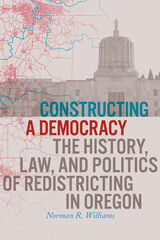 Constructing a Democracy: The History, Law, and Politics of Redistricting in Oregon
Norman R. Williams
Oregon State University Press, 2023 Every ten years, states go through the process of redistricting: choosing how to divide up and apportion their state and federal legislative districts. How the districts are drawn can determine which party wins the district and therefore controls the legislature or Congress. Although the process may be different in every state, the questions are the same: Who draws the maps? Who can prevent gerrymandering? What power do legislatures, governors, courts, and political parties have to influence the process and the outcomes?
In Constructing a Democracy, legal scholar Norman Williams presents a comprehensive history of legislative and congressional redistricting in Oregon. Because redistricting impacts the representativeness of the ensuing legislative body, Oregon’s constitutional framers, legislators, and courts alike have understandably focused on developing legal rules to constrain the redistricting process. Williams is primarily interested in identifying and understanding the scope of those rules: What legal constraints have existed over time? How aggressively have the courts enforced those restraints? How have political actors undertaken the redistricting task in light of the various rules and the judicial pronouncements regarding those constraints?
The redistricting process in Oregon has not drawn national attention the way it has in states like North Carolina and Pennsylvania. But the process in Oregon is notable in several ways, including an early attention to malapportionment, the use of the initiative to reform the process, and and the impact of women leaders on the redistricting process. The Oregon process, however, has also notably lagged behind other states, particularly in considering issues of race and minority representation and preventing gerrymandering.
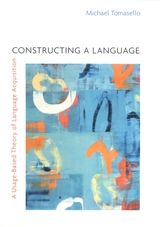 Constructing a Language: A Usage-Based Theory of Language Acquisition
Michael Tomasello
Harvard University Press, 2003 In this groundbreaking book, Michael Tomasello presents a comprehensive usage-based theory of language acquisition. Drawing together a vast body of empirical research in cognitive science, linguistics, and developmental psychology, Tomasello demonstrates that we don’t need a self-contained “language instinct” to explain how children learn language. Their linguistic ability is interwoven with other cognitive abilities.
Tomasello argues that the essence of language is its symbolic dimension, which rests on the uniquely human ability to comprehend intention. Grammar emerges as the speakers of a language create linguistic constructions out of recurring sequences of symbols; children pick up these patterns in the buzz of words they hear around them.
All theories of language acquisition assume these fundamental skills of intention-reading and pattern-finding. Some formal linguistic theories posit a second set of acquisition processes to connect somehow with an innate universal grammar. But these extra processes, Tomasello argues, are completely unnecessary—important to save a theory but not to explain the phenomenon.
For all its empirical weaknesses, Chomskian generative grammar has ruled the linguistic world for forty years. Constructing a Language offers a compellingly argued, psychologically sound new vision for the study of language acquisition.
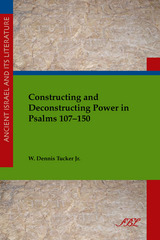 Constructing and Deconstructing Power in Psalms 107-150
W. Dennis Tucker Jr.
SBL Press, 2014 Essential research on the relationship between the Persian empire and the the formation of the book of Psalms
In this latest entry in the Ancient Israel and Its Literature series, W. Dennis Tucker, Jr. examines the role of Persian imperial ideology in the creation of psalms in Book 5 of the Psalter and in the shaping of the book of Psalms as a whole. Although much research has been conducted on the relationship between the Persian empire and the creation of biblical texts, the book of Psalms has been largely absent from this discussion. Tucker seeks to rectify this omission by illustrating that Book 5 constructed a subtle anti-imperial ideology in response to the threats imposed from all empires both past and present.
Features:
- Close study of the psalms portrayal of human power to that of Yahweh
- Comparison of Achaemenid propaganda to the ideology found in the psalms
- Evidence drawn from Persian iconography and inscriptions
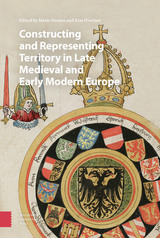 Constructing and Representing Territory in Late Medieval and Early Modern Europe
Mario Damen
Amsterdam University Press, 2022 In recent political and legal history, scholars seldom specify how and why they use the concept of territory. In research on state-formation processes and nation building, for instance, the term mostly designates an enclosed geographical area ruled by a central government. Inspired by ideas from political geographers, this book explores the layered and constantly changing meanings of territory in late medieval and early modern Europe before cartography and state formation turned boundaries and territories into more fixed (but still changeable) geographical entities. Its central thesis is that assessing the notion of territory in a pre-modern setting involves analysing territorial practices: practices that relate people and power to space(s). The essays in this book not only examine the construction and spatial structure of pre-modern territories but also explore their perception and representation through the use of a broad range of sources: from administrative texts to maps, from stained-glass windows to chronicles.
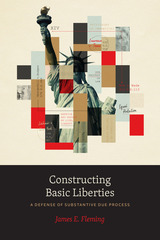 Constructing Basic Liberties: A Defense of Substantive Due Process
James E. Fleming
University of Chicago Press, 2022 A strong and lively defense of substantive due process.
From reproductive rights to marriage for same-sex couples, many of our basic liberties owe their protection to landmark Supreme Court decisions that have hinged on the doctrine of substantive due process. This doctrine is controversial—a battleground for opposing views around the relationship between law and morality in circumstances of moral pluralism—and is deeply vulnerable today.
Against recurring charges that the practice of substantive due process is dangerously indeterminate and irredeemably undemocratic, Constructing Basic Liberties reveals the underlying coherence and structure of substantive due process and defends it as integral to our constitutional democracy. Reviewing the development of the doctrine over the last half-century, James E. Fleming rebuts popular arguments against substantive due process and shows that the Supreme Court has constructed basic liberties through common law constitutional interpretation: reasoning by analogy from one case to the next and making complex normative judgments about what basic liberties are significant for personal self-government.
Elaborating key distinctions and tools for interpretation, Fleming makes a powerful case that substantive due process is a worthy practice that is based on the best understanding of our constitutional commitments to protecting ordered liberty and securing the status and benefits of equal citizenship for all.
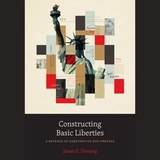 Constructing Basic Liberties: A Defense of Substantive Due Process
James E. Fleming
University of Chicago Press, 2022 This is an auto-narrated audiobook edition of this book.
A strong and lively defense of substantive due process.
From reproductive rights to marriage for same-sex couples, many of our basic liberties owe their protection to landmark Supreme Court decisions that have hinged on the doctrine of substantive due process. This doctrine is controversial—a battleground for opposing views around the relationship between law and morality in circumstances of moral pluralism—and is deeply vulnerable today.
Against recurring charges that the practice of substantive due process is dangerously indeterminate and irredeemably undemocratic, Constructing Basic Liberties reveals the underlying coherence and structure of substantive due process and defends it as integral to our constitutional democracy. Reviewing the development of the doctrine over the last half-century, James E. Fleming rebuts popular arguments against substantive due process and shows that the Supreme Court has constructed basic liberties through common law constitutional interpretation: reasoning by analogy from one case to the next and making complex normative judgments about what basic liberties are significant for personal self-government.
Elaborating key distinctions and tools for interpretation, Fleming makes a powerful case that substantive due process is a worthy practice that is based on the best understanding of our constitutional commitments to protecting ordered liberty and securing the status and benefits of equal citizenship for all.
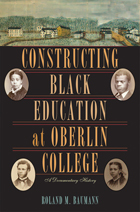 Constructing Black Education at Oberlin College: A Documentary History
Roland M. Baumann
Ohio University Press, 2010 In 1835 Oberlin became the first institute of higher education to make a cause of racial egalitarianism when it decided to educate students “irrespective of color.” Yet the visionary college’s implementation of this admissions policy was uneven. In Constructing Black Education at Oberlin College: A Documentary History, Roland M. Baumann presents a comprehensive documentary history of the education of African American students at Oberlin College. Following the Reconstruction era, Oberlin College mirrored the rest of society as it reduced its commitment to black students by treating them as less than equals of their white counterparts. By the middle of the twentieth century, black and white student activists partially reclaimed the Oberlin legacy by refusing to be defined by race. Generations of Oberlin students, plus a minority of faculty and staff, rekindled the college’s commitment to racial equality by 1970. In time, black separatism in its many forms replaced the integrationist ethic on campus as African Americans sought to chart their own destiny and advance curricular change. Oberlin’s is not a story of unbroken progress, but rather of irony, of contradictions and integrity, of myth and reality, and of imperfections. Baumann takes readers directly to the original sources by including thirty complete documents from the Oberlin College Archives. This richly illustrated volume is an important contribution to the college’s 175th anniversary celebration of its distinguished history, for it convincinglydocuments how Oberlin wrestled over the meaning of race and the destiny of black people in American society.
Constructing China: Clashing Views of the People's Republic
Mobo Gao
Pluto Press, 2018 For years now, China’s economic and political rise has provoked fear—even paranoia—around the world. But how do we get our information about China, and how are our understandings of it actually produced?
Constructing China presents a detailed examination of the means through which our knowledge of China is created. Rejecting the supposed objectivity of empirical statistics and challenging the assumption of a dichotomy between Western liberal democracy and Chinese authoritarianism, Mobo Gao dissects the political agenda and conceptual framework of commentators on China and urges those on the right and the left alike to be carefully critical of their own views on the nation’s politics, economics, and history.
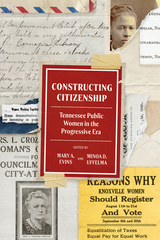 Constructing Citizenship: Tennessee Public Women in the Progressive Era
Mary A. Evins
University of Tennessee Press, 2025 Amid the rapid industrialization and urbanization of the early twentieth century, Progressive Era activists across the United States fought for social, political, and economic change. Tennessee women were no exception. In Constructing Citizenship: Tennessee Public Women in the Progressive Era, Mary A. Evins and Minoa D. Uffelman present a collection of essays that explore the contributions and civic engagement of women in Tennessee during this transformative period.
Building upon their first volume, Tennessee Women in the Progressive Era, the contributors examine a variety of themes, organizationally structured in four parts: education, associations, service, and suffrage. Across seventeen chapters, the collection covers women's roles in higher education, medicine, and public health; the women's relief corps and patriotic outreach in Tennessee; the women's club movement on the road to suffrage; the power of feminist leadership; women of color leading the national fight for African American reparations and benevolence; philanthropy and community care; rural Tennessee women's support of suffrage; and more.
Drawing on a wealth of archival materials, including personal letters, newspaper editorials, and meeting minutes, each contributor foregrounds long-overlooked stories about Tennessee women's public work during the first half of the twentieth century. Covering a period largely missing from the history of Tennessee women, this anthology fills a critical gap in scholarship. Women's history scholars, Tennessee history specialists, and students of US history more broadly will all find it to be a valuable resource both for self-study and the classroom.
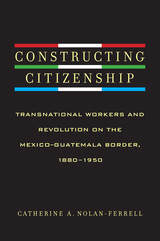 Constructing Citizenship: Transnational Workers and Revolution on the Mexico-Guatemala Border, 1880--1950
Catherine A. Nolan-Ferrell
University of Arizona Press, 2012 During the late nineteenth and early twentieth centuries, people living in the coffee-producing region of the Sierra Madre mountains along the Pacific Coast of Mexico and Guatemala paid little attention to national borders. The Mexican Revolution,—particularly during the 1930s reconstruction phase—ruptured economic and social continuity because access to revolutionary reforms depended on claiming Mexican national identity. Impoverished, often indigenous rural workers on both sides of the border used shifting ideas of citizenship and cultural belonging to gain power and protect their economic and social interests.
With this book Catherine Nolan-Ferrell builds on recent theoretical approaches to state formation and transnationalism to explore the ways that governments, elites, and marginalized laborers claimed and contested national borders. By investigating how various groups along the Mexico-Guatemala border negotiated nationality, Constructing Citizenship offers insights into the complex development of transnational communities, the links between identity and citizenship, and the challenges of integrating disparate groups into a cohesive nation. Entwined with a labor history of rural workers, Nolan-Ferrell also shows how labor struggles were a way for poor Mexicans and migrant Guatemalans to assert claims to national political power and social inclusion.
Combining oral histories with documentary research from local, regional, and national archives to provide a complete picture of how rural laborers along Mexico's southern border experienced the years before, during, and after the Mexican Revolution, this book will appeal not only to Mexicanists but also to scholars interested in transnational identity, border studies, social justice, and labor history.
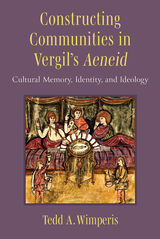 Constructing Communities in Vergil's Aeneid: Cultural Memory, Identity, and Ideology
Tedd A. Wimperis
University of Michigan Press, 2024 Constructing Communities in Vergil's Aeneid: Cultural Memory, Identity, and Ideology presents a new examination of memory, ethnic identity, and politics within the fictional world of this Roman epic, drawing previously unexplored connections between Vergil’s characters, settings, and narrative and the political context of the early Roman Empire. This book investigates how the Aeneid’s fictive ethnic communities—the Trojans, Carthaginians, Latins, and Arcadians who populate its poetic world—are shown to have identities, myths, and cultural memories of their own. And much like their real-life Roman counterparts, they engage in the politics of the past in such contexts as royal iconography, diplomacy, public displays, and incitements to war.
Where previous studies of identity and memory in the Aeneid have focused on the poem’s constructions of Roman identity, Constructing Communities turns the spotlight onto the characters themselves to show how the world inside the poem is replicating, as if in miniature, real forms of contemporary political and cultural discourse, reflecting an historical milieu where appeals to Roman identity were vigorously asserted in political rhetoric. The book applies this evidence to a broad literary analysis of the Aeneid, as well as a reevaluation of its engagement with Roman imperial ideology in the Age of Augustus.
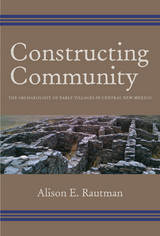 Constructing Community: The Archaeology of Early Villages in Central New Mexico
Alison E. Rautman
University of Arizona Press, 2014 In central New Mexico, tourists admire the majestic ruins of old Spanish churches and historic pueblos at Abo, Quarai, and Gran Quivira in Salinas Pueblo Missions National Monument. The less-imposing remains of the earliest Indian farming settlements, however, have not attracted nearly as much notice from visitors or from professional archaeologists. In Constructing Community, Alison E. Rautman synthesizes over twenty years of research about this little-known period of early sedentary villages in the Salinas region.
Rautman tackles a very broad topic: how archaeologists use material evidence to infer and imagine how people lived in the past, how they coped with everyday decisions and tensions, and how they created a sense of themselves and their place in the world. Using several different lines of evidence, she reconstructs what life was like for the Ancestral Pueblo people of Salinas, and identifies some of the specific strategies that they used to develop and sustain their villages over time.
Examining evidence of each site’s construction and developing spatial layout, Rautman traces changes in community organization across the architectural transitions from pithouses to jacal structures to unit pueblos, and finally to plaza-oriented pueblos. She finds that, in contrast to some other areas of the American Southwest, early villagers in Salinas repeatedly managed their built environment to emphasize the coherence and unity of the village as a whole. In this way, she argues, people in early farming villages across the Salinas region actively constructed and sustained a sense of social community.
 Constructing Cooperation: The Evolution of Institutions of Comanagement
Sara Singleton
University of Michigan Press, 1999 In a pathbreaking analysis, Sara Singleton explores the development of schemes for the management of fisheries in the northwestern United States in which native American tribes, and state, federal, and local governments cooperate to manage limited fishing resources. In the policy dispute over the apportionment of scarce resources, some argue that only government control or private ownership will prevent the destruction of limited common resources. The author shows how cooperation among interested parties can produce a workable system for self-management of common resources. Through the detailed study of the management of fisheries in the Northwest the author tests theories explaining the basis of collective action and social cooperation, an area of rich theoretical speculation in political science, law, economics and sociology. At the same time, her findings have important implications for policy makers who are interested in efficient and effective schemes of resource control that avoid the problems caused by regulation by remote government officials or private control.
This book will appeal to policy makers concerned with the management of natural resources as well as to economists, political scientists, and sociologists concerned with collective action problems.
Sara Singleton is Assistant Professor of Political Science, Tulane University.
 Constructing Cuban America: Race and Identity in Florida's Caribbean South, 1868–1945
Andrew Gomez
University of Texas Press, 2024 How Black and white Cubans navigated issues of race, politics, and identity during the post-Civil War and early Jim Crow eras in South Florida. On July 4, 1876, during the centennial celebration of US independence, the city of Key West was different from other cities. In some of post–Civil War Florida, Black residents were hindered from participating in 4th of July festivities, but Key West's celebration, “led by a Cuban revolutionary mayor working in concert with a city council composed of Afro-Bahamians, Cubans, African Americans, and Anglos,” represented a profound exercise in interracial democracy amid the Radical Reconstruction era. Constructing Cuban America examines the first Cuban American communities in South Florida—Key West and Tampa—and how race played a central role in shaping the experiences of white and Black Cubans. Andrew Gomez argues that factors such as the Cuban independence movement and Radical Reconstruction produced interracial communities of Cubans that worked alongside African Americans and Afro-Bahamians in Florida, yielding several successes in interracial democratic representation, even as they continued to wrestle with elements of racial separatism within the Cuban community. But the conclusion of the Cuban War of Independence and early Jim Crow laws led to a fracture in the Cuban-American community. In the process, both Black and white Cubans posited distinct visions of Cuban-American identity.
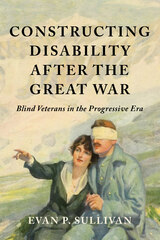 Constructing Disability after the Great War: Blind Veterans in the Progressive Era
Evan P. Sullivan
University of Illinois Press, 2024 As Americans--both civilians and veterans--worked to determine the meanings of identity for blind veterans of World War I, they bound cultural constructs of blindness to all the emotions and contingencies of mobilizing and fighting the war, and healing from its traumas. Sighted Americans’ wartime rehabilitation culture centered blind soldiers and veterans in a mix of inspirational stories. Veterans worked to become productive members of society even as ableism confined their unique life experiences to a collection of cultural tropes that suggested they were either downcast wrecks of their former selves or were morally superior and relatively flawless as they overcame their disabilities and triumphantly journeyed toward successful citizenship. Sullivan investigates the rich lives of blind soldiers and veterans and their families to reveal how they confronted barriers, gained an education, earned a living, and managed their self-image while continually exposed to the public’s scrutiny of their success and failures.
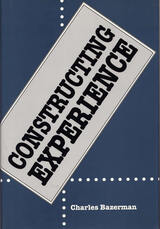 A Constructing Experience
Charles Bazerman
Southern Illinois University Press, 1994 Charles Bazerman’s newest book, a selection of both his published and unpublished essays from recent years, ranges from pedagogy to research to theory, exploring how all three levels are motivated by common concerns and how they are integrated through similar concepts and approaches. From this integrative perspective, Bazerman reveals his life-long inquiry into the nature of language—why it exists and what place it holds in the social world. Presenting a powerful, action-oriented view of language that finds meaning in local circumstances and local uses, Bazerman divides his essays into four parts, beginning with an examination of the classroom experience. In describing the dynamics of the classroom and the relationship of the classroom to surrounding social arrangements, Bazerman notes how reading relates to writing, how interpersonal relations influence and structure acts of reading and writing, and how reading and writing are themselves forms of social action. Bazerman, in parts 2 and 3, explains how larger forms of social structure are in dialectic with local acts of literacy, how experience of the world influences both everyday writing and empirically driven research, and how individuals conceive of social situations and actions to think about and plan activities. As he admittedly puzzles through conceptual obstacles, Bazerman explores many of the terms and theories evoked in rhetorical studies and provides a critical examination of the theories of James Kinneavy as well as more general thoughts on the nature of rhetorical study. In part 4, Bazerman reinterprets the classical rhetorical concept of kairos in the light of theory and research in the social sciences, analyzes intertextuality in a scientific text, and offers a rereading of the writings of Adam Smith. Throughout this book, Bazerman maintains that research into writing is the examination of what people do and have done, what influences what they do, and what texts do to people who write and read them. In addition, he reiterates the importance of literacy as a connecting device, essential to survival, growth, and change. Lack of literacy cuts people off from the institutions and means of life in a society.
Constructing German Walt Whitman
Walter Grunzweig
University of Iowa Press, 1994 In this first comprehensive study in English of Walt Whitman's reception in the German-speaking countries, Walter Grünzweig posits a very broadly based notion of culture, embodying a wide variety of elements such as high literature, politics, youth movements, sexuality, and other subcultures.
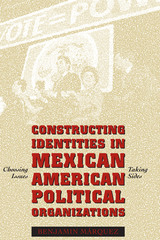 Constructing Identities in Mexican-American Political Organizations: Choosing Issues, Taking Sides
By Benjamin Márquez
University of Texas Press, 2003 A Choice Outstanding Academic Book, 2002 The formation of a group identity has always been a major preoccupation of Mexican American political organizations, whether they seek to assimilate into the dominant Anglo society or to remain separate from it. Yet organizations that sought to represent a broad cross section of the Mexican American population, such as LULAC and the American G.I. Forum, have dwindled in membership and influence, while newer, more targeted political organizations are prospering—clearly suggesting that successful political organizing requires more than shared ethnicity and the experience of discrimination. This book sheds new light on the process of political identity formation through a study of the identity politics practiced by four major Mexican American political organizations—the Southwest Network for Environmental and Economic Justice, the Southwest Industrial Areas Foundation, the Texas Association of Mexican American Chambers of Commerce, and the Mexican American Women's National Association (now known as MANA—A National Latina Organization). Through interviews with activists in each organization and research into their records, Benjamin Marquez clarifies the racial, class-based, and cultural factors that have caused these organizations to create widely differing political identities. He likewise demonstrates why their specific goals resonate only with particular segments of the Mexican American community.
 Constructing Identities over Time: “Bad Gypsies” and “Good Roma” in Russia and Hungary
Jekatyerina Dunajeva
Central European University Press, 2022 Jekatyerina Dunajeva explores how two dominant stereotypes—“bad Gypsies” and “good Roma”—took hold in formal and informal educational institutions in Russia and Hungary. She shows that over centuries “Gypsies” came to be associated with criminality, lack of education, and backwardness. The second notion, of proud, empowered, and educated “Roma,” is a more recent development. By identifying five historical phases—pre-modern, early-modern, early and “ripe” communism, and neomodern nation-building—the book captures crucial legacies that deepen social divisions and normalize the constructed group images. The analysis of the state-managed Roma identity project in the brief korenizatsija program for the integration of non-Russian nationalities into the Soviet civil service in the 1920s is particularly revealing, while the critique of contemporary endeavors is a valuable resource for policy makers and civic activists alike. The top-down view is complemented with the bottom-up attention to everyday Roma voices. Personal stories reveal how identities operate in daily life, as Dunajeva brings out hidden narratives and subaltern discourse. Her handling of fieldwork and self-reflexivity is a model of sensitive research with vulnerable groups.
Constructing Iron Europe: Transnationalism and Railways in the Interbellum
Irene Anastasiadou
Amsterdam University Press, 2012 Although the years between the world wars were ones of diplomatic tension in Europe, they also saw the construction of countless miles of international railroads on the continent. In Constructing Iron Europe, Irene Anastasiadou examines this era of railroad building and argues that, contrary to most conventional histories—which view railroad building as an aspect of nation- or empire-building—the construction in this era was deliberately transnational, and ultimately aimed at tightening links between nations and constructing a closer-knit European community.
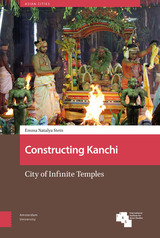 Constructing Kanchi: City of Infinite Temples
Emma Natalya Stein
Amsterdam University Press, 2021 Constructing Kanchi: City of Infinite Temples traces the emergence of the South Indian city of Kanchi as a major royal capital and multireligious pilgrimage destination during the era of the Pallava and Chola dynasties (ca. seventh through thirteenth centuries). The book presents the first-ever comprehensive picture of historical Kanchi, locating the city and its more than 100 spectacular Hindu temples at the heart of commercial and artistic exchange that spanned India, Southeast Asia, and China. The author demonstrates that Kanchi was structured with a hidden urban plan, which determined the placement and orientation of temples around a central thoroughfare that was also a burgeoning pilgrimage route. Moving outwards from the city, she shows how the transportation networks, river systems, residential enclaves, and agrarian estates all contributed to the vibrancy of Kanchi’s temple life. The construction and ongoing renovation of temples in and around the city, she concludes, has enabled Kanchi to thrive continuously from at least the eighth century, through the colonial period, and up until the present.
Constructing “Korean” Origins: A Critical Review of Archaeology, Historiography, and Racial Myth in Korean State-Formation Theories
Hyung Il Pai
Harvard University Press, 2000 In this wide-ranging study, Hyung Il Pai examines how archaeological finds from throughout Northeast Asia have been used in Korea to construct a myth of state formation. This myth emphasizes the ancient development of a pure Korean race that created a civilization rivaling those of China and Japan and a unified state controlling a wide area in Asia.
Through a new analysis of the archaeological data, Pai shows that the Korean state was in fact formed much later and that it reflected diverse influences from throughout Northern Asia, particularly the material culture of Han China. Her deconstruction of the uses of the archaeological finds by nationalistic historians reveals how they have been utilized to legitimate Korean nationalism and a particular form of national identity.
 Constructing Library Buildings That Work
Fred Schlipf
American Library Association, 2020 When it’s time to start planning for a renovation or construction project, you don’t need a book that covers everything from A to Z. Instead you need a concentrated set of tools and techniques that will guide you and your team to find the best solutions for your specific project. That’s exactly what library building expert Schlipf provides in his new book, which will be a key resource for library directors, administrators, board members, trustees, and planning professionals. Pinpointing the elements that make library buildings functional, in this book readers will find - a streamlined organization of the text that enables quick consultation and facilitates collaboration;
- concise coverage of the essentials of the library construction process, including who does what, how things work, and how to stay out of trouble along the way;
- advice on important planning and workflow considerations such as site selection, schematic design, funding, design development, the bidding process, construction, and post-construction occupancy;
- discussion of the characteristics of successful library buildings—buildings that are easy to maintain, welcoming to people with disabilities, have less trouble-prone restrooms, and provide security for users, staff, and collections; and
- an overview of bad ideas in library architecture, with pointed guidance on how to steer clear of them from the very beginning of your project.
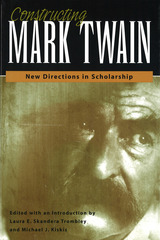 Constructing Mark Twain: New Directions in Scholarship
Edited with an introduction by Laura E. Skandera-Trombley and Michael J. Kiskis
University of Missouri Press, 2001 The thirteen essays in this collection combine to offer a complex and deeply nuanced picture of Samuel Clemens. With the purpose of straying from the usual notions of Clemens (most notably the Clemens/Twain split that has ruled Twain scholarship for over thirty years), the editors have assembled contributions from a wide range of Twain scholars. As a whole, the collection argues that it is time we approach Clemens not as a shadow behind the literary persona but as a complex and intricate creator of stories, a creator who is deeply embedded in the political events of his time and who used a mix of literary, social, and personal experience to fuel the movements of his pen. The essays illuminate Clemens's connections with people and events not usually given the spotlight and introduce us to Clemens as a man deeply embroiled in the process of making literary gold out of everyday experiences. From Clemens's wonderings on race and identity to his looking to family and domesticity as defining experiences, from musings on the language that Clemens used so effectively to consideration of the images and processes of composition, these essays challenge long-held notions of why Clemens was so successful and so influential a writer. While that search itself is not new, the varied approaches within this collection highlight markedly inventive ways of reading the life and work of Samuel Clemens.
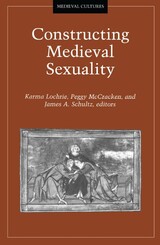 Constructing Medieval Sexuality
Karma Lochrie
University of Minnesota Press, 1997 A groundbreaking examination of sexuality in the Middle Ages. This collection is the first to be devoted entirely to medieval sexuality informed by current theories of sexuality and gender. It brings together essays from various disciplinary perspectives-literary, theological, philosophical, medical, historical, and art historical-to consider how the Middle Ages defined, regulated, and represented sexual practices and desires. Always considering sexuality in relation to gender, the body, and identity, the essays explore medieval sexuality as a historical construction produced by and embedded in the cultures and institutions of that period. Examining a range of medieval texts and images, the contributors explore the medieval understanding of sodomy, the historical construction of heterosexuality, the polymorphous erotics of female mysticism, and the intersections of sexuality with race, gender, and religion. This work not only offers new perspectives on the ways in which queer theory might inform our views of sexuality in medieval Europe, but also suggests that medieval constructions of sexuality may offer important contributions to both queer theory and the history of sexuality.These essays, situated in the context of current debates, linger over various definitions of medieval sexuality; they speak to each other in their differences and their similarities to further productive thinking about the sometimes conflicting and always fascinating ways in which the Middle Ages regarded sex and sexuality. Contributors: E. Jane Burns, U of North Carolina; Joan Cadden, U of California, Davis; Michael Camille, U of Chicago; Dyan Elliott, Indiana U; Louise O. Fradenburg, U of California, Santa Barbara; Mark D. Jordan, U of Notre Dame; Steven F. Kruger, CUNY.
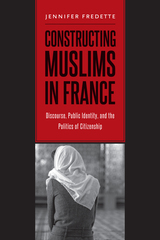 Constructing Muslims in France: Discourse, Public Identity, and the Politics of Citizenship
Jennifer Fredette
Temple University Press, 2014 The standing of French Muslims is undercut by a predominant and persistent elite public discourse that frames Muslims as failed and incomplete French citizens. This situation fosters the very separations, exclusions, and hierarchies it claims to deplore as Muslims face discrimination in education, housing, and employment. In Constructing Muslims in France, Jennifer Fredette provides a deft empirical analysis to show the political diversity and complicated identity politics of this relatively new population. She examines the public identity of French Muslims and evaluates images in popular media to show how stereotyped notions of racial and religious differences pervade French public discourse. While rights may be a sine qua non for fighting legal and political inequality, Fredette shows that additional tools such as media access are needed to combat social inequality, particularly when it comes in the form of unfavorable discursive frames and public disrespect. Presenting the conflicting views of French national identity, Fredette shows how Muslims strive to gain recognition of their diverse views and backgrounds and find full equality as French citizens.
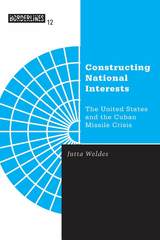 Constructing National Interests: The United States and the Cuban Missile Crisis
Jutta Weldes
University of Minnesota Press, 1999 Not simply an “event” or merely an “incident,” the 1962 standoff between the U. S. and the Soviet Union over missiles in Cuba was a crisis, which subsequently has achieved almost mythic significance in the annals of United States foreign policy. Jutta Weldes asks why this occurrence in particular should be cast as a crisis, and how this so significantly affected “the national interest.” Here, Weldes analyzes the so-called Cuban missile crisis as a means to rethink the idea of national interest, a notion central to both the study and practice of international relations. Why did the presence of Soviet missiles in Cuba constitute a crisis for U.S. state officials and thus a dire threat to U.S. national interests? It was, Weldes suggests, more a matter of discursive construction than of objective facts or circumstances. Drawing on social theory and on concepts from cultural studies, she exposes the “realities” of the crisis as social creations in the service of a particular and precarious U.S. state identity defined within the Cold War U.S. “security imaginary.” Constructing National Interests shows how this process allowed for a redefining of the identities, interests, and likely actions of various states, so that it seemed to logically serve the U.S. national interest in removing the missiles from Cuba.
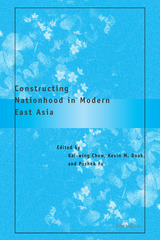 Constructing Nationhood in Modern East Asia
Kai-wing Chow, Kevin M. Doak, and Poshek Fu, Editors
University of Michigan Press, 2001 A cutting-edge collection exploring identity-making in East Asia
This is an interdisciplinary study of the cultural politics of nationalism and national identities in modern East Asia. Combining theoretical insights with empirical research, it explores the cultural dimensions of nationhood and identity-making in China, Japan, Korea, Hong Kong, and Taiwan. The essays address issues ranging from the complex relations between popular culture and national consciousness to the representation of ethnic/racial identity and gendered discourse on nationalism. The cutting-edge research on the diverse forms of cultural preacceptance and the various ways in which this participates in the construction and projection of national and ethnic identities in East Asia illuminates several understudied issues in Asian studies, including the ambiguity of Hong Kong identity during World War II and the intricate politics of the post-war Taiwanese trial of collaboration.
Addressing a wide range of theoretical and historical issues regarding cultural dimensions of nationalism and national identities all over East Asia, these essays draw insights from such recent theories as cultural studies, postcolonial theories, and archival-researched cultural anthropology. The book will be important reading for students of Asian studies as well as for serious readers interested in issues of nationalism and culture.
Kai-wing Chow is Associate Professor of East Asian Languages and Cultures. Kevin Doak is Associate Professor of History. Poshek Fu is Associate Professor of History and Cinema Studies. All three teach at University of Illinois, Urbana-Champaign.
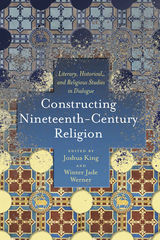 Constructing Nineteenth-Century Religion: Literary, Historical, and Religious Studies in Dialogue
Edited by Joshua King and Winter Jade Werner
Ohio State University Press, 2019 Bringing together scholars from literary, historical, and religious studies,Constructing Nineteenth-Century Religioninterrogates the seemingly obvious category of “religion.” This collection argues that any application of religion engages in complex and relatively modern historical processes. In considering the various ways that nineteenth-century religion was constructed, commodified, and practiced, contributors to this volume “speak” to each other, finding interdisciplinary links and resonances across a range of texts and contexts.
The participle in its title—Constructing—acknowledges that any articulation of nineteenth-century religion is never just a work of the past: scholars also actively construct religion as their disciplinary assumptions (and indeed personal and lived investments) shape their research and findings. Constructing NineteenthCentury Religion newly analyzes the diverse ways in which religion was debated and deployed in a wide range of nineteenthcentury texts and contexts. While focusing primarily on nineteenthcentury Britain, the collection also contributes to the increasingly transnational and transcultural outlook of postsecular studies, drawing connections between Britain and the United States, continental Europe, and colonial India.
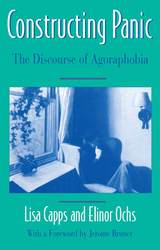 Constructing Panic: The Discourse of Agoraphobia
Lisa Capps and Elinor Ochs
Harvard University Press, 1997 Meg Logan has not been farther than two miles from home in six years. She has agoraphobia, a debilitating anxiety disorder that entraps its sufferers in the fear of leaving safe havens such as home. Paradoxically, while at this safe haven, agoraphobics spend much of their time ruminating over past panic experiences and imagining similar hypothetical situations. In doing so, they create a narrative that both describes their experience and locks them into it.
Constructing Panic offers an unprecedented analysis of one patient's experience of agoraphobia. In this novel interdisciplinary collaboration between a clinical psychologist and a linguist, the authors probe Meg's stories for constructions of emotions, actions, and events. They illustrate how Meg uses grammar and narrative structure to create and recreate emotional experiences that maintain her agoraphobic identity.
In this work Capps and Ochs propose a startling new view of agoraphobia as a communicative disorder. Constructing Panic opens up the largely overlooked potential for linguistic and narrative analysis by revealing the roots of panic and by offering a unique framework for therapeutic intervention. Readers will find in these pages hope for managing panic through careful attention to how we tell the story of our lives.
Constructing Quarks: A Sociological History of Particle Physics
Andrew Pickering
University of Chicago Press, 1984 Widely regarded as a classic in its field, Constructing Quarks recounts the history of the post-war conceptual development of elementary-particle physics. Inviting a reappraisal of the status of scientific knowledge, Andrew Pickering suggests that scientists are not mere passive observers and reporters of nature. Rather they are social beings as well as active constructors of natural phenomena who engage in both experimental and theoretical practice.
"A prodigious piece of scholarship that I can heartily recommend."—Michael Riordan, New Scientist
"An admirable history. . . . Detailed and so accurate."—Hugh N. Pendleton, Physics Today
Constructing Rhetorical Education
Edited by Marie Secor and Davida Charney
Southern Illinois University Press, 1992 In nineteen essays illustrating its many aspects, this book offers an argument for what it takes to construct a complete rhetorical education. The editors take an approach that is pragmatic and pluralistic, based as it is on the assumptions that a rhetorical education is not limited to teaching freshman composition (or any specific writing course) and that the contexts in which such an education occurs are not limited to classrooms. This thought-provoking volume stresses that while a rhetorical education results in the growth of writing skills, its larger goal is to foster critical thinking.
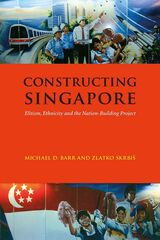 Constructing Singapore: Elitism, Ethnicity and the Nation-building Project
Michael D. Barr and Zlatko Skrbis
National University of Singapore Press, 2008 Singapore has few natural resources but, in a relatively short history, its economic and social development and transformation are nothing short of remarkable. Today Singapore is by far the most successful exemplar of material development in Southeast Asia and it often finds itself the envy of developed countries. Furthermore over the last three and a half decades the ruling party has presided over the formation of a thriving community of Singaporeans who love and are proud of their country. Nothing about these processes has been ‘natural’ in any sense of the word. Much of the country’s investment in nation building has in fact gone into the selection, training and formation of a ruling and administrative elite that reflects and will perpetuate its vision of the nation. The government ownership of the nation-building project, its micromanagement of everyday life and the role played by the elite are three fundamental elements in this complex and continuing process of construction of a nation. The intense triangulation of these elements and the pace of change they produce make Singapore one of the most intriguing specimens of nation building in the region. In a critical study of the politics of ethnicity and elitism in Singapore, Constructing Singapore looks inside the supposedly ‘meritocratic’ system, from nursery school to university and beyond, that produces Singapore’s political and administrative elite. Focusing on two processes – elite formation and elite selection – it gives primary attention to the role that ethno-racial ascription plays in these processes but also considers the input of personal connections, personal power, class and gender. The result is a study revealing much about how Singapore’s elite-led nationbuilding project has reached its current state whereby a Singaporean version of Chinese ethno-nationalism has overwhelmed the discourse on national and Singaporean identity.
Constructing Social Theories
Arthur L. Stinchcombe
University of Chicago Press, 1987 Constructing Social Theories presents to the reader a range of strategies for constructing theories, and in a clear, rigorous, and imaginative manner, illustrates how they can be applied. Arthur L. Stinchcombe argues that theories should not be invented in the abstract—or applied a priori to a problem—but should be dictated by the nature of the data to be explained. This work was awarded the Sorokin prize by the American Sociological Association as the book that made an outstanding contribution to the progress of sociology in 1970.
 Constructing Space: Six Communal Religious Groups and Their Spatial Worlds
Martha Bradley Evans
University of Utah Press, 2025 Worldviews and experiences of place among noted religious communities
Religion transforms and inspires specific ways of living in the world. Through architecture and the built environment, members of religious communities communicate intangible beliefs about God, gender and family, the sacred and profane, and more. This captivating volume explores the spatial worlds of six different religious communities— the Latter-day Saints, the Oneida Colony, the Shakers, the Branch Davidians, the FLDS, and Adidam—through the architecture and cultural landscapes they built.
What does the strict order and regularity of a Shaker village tell us about the community’s hierarchies and relationships? How might a temple building site affect an LDS Church member’s daily life? Constructing Space reveals the hidden language of meaning, association, and identity that religious persons speak as they mold their faith into concrete forms, and how they interpret the meanings of those spaces within their practices.
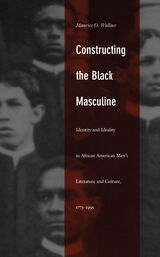 Constructing the Black Masculine: Identity and Ideality in African American Men’s Literature and Culture, 1775–1995
Maurice O. Wallace
Duke University Press, 2002 In seven representative episodes of black masculine literary and cultural history—from the founding of the first African American Masonic lodge in 1775 to the 1990s choreographies of modern dance genius Bill T. Jones—Constructing the Black Masculine maps black men’s historical efforts to negotiate the frequently discordant relationship between blackness and maleness in the cultural logic of American identity. Maurice O. Wallace draws on an impressive variety of material to investigate the survivalist strategies employed by black men who have had to endure the disjunction between race and masculinity in American culture.
Highlighting their chronic objectification under the gaze of white eyes, Wallace argues that black men suffer a social and representational crisis in being at once seen and unseen, fetish and phantasm, spectacle and shadow in the American racial imagination. Invisible and disregarded on one hand, black men, perceived as potential threats to society, simultaneously face the reality of hypervisibility and perpetual surveillance. Paying significant attention to the sociotechnologies of vision and image production over two centuries, Wallace shows how African American men—as soldiers, Freemasons, and romantic heroes—have sought both to realize the ideal image of the American masculine subject and to deconstruct it in expressive mediums like modern dance, photography, and theatre. Throughout, he draws on the experiences and theories of such notable figures as Frederick Douglass, W. E. B. Du Bois, Booker T. Washington, and James Baldwin.
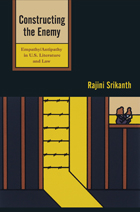 Constructing the Enemy: Empathy/Antipathy in U.S. Literature and Law
Rajini Srikanth
Temple University Press, 2011 In her engaging book, Constructing the Enemy, Rajini Srikanth probes the concept of empathy, attempting to understand its different types and how it is—or isn't—generated and maintained in specific circumstances. Using literary texts to illuminate issues of power and discussions of law, Srikanth focuses on two case studies— the internment of Japanese citizens and Japanese Americans in World War II, after the bombing of Pearl Harbor, and the detainment of Muslim Americans and individuals from various nations in the U.S. prison at Guantanamo Bay. Through primary documents and interviews that reveal why and how lawyers become involved in defending those who have been designated “enemies,” Srikanth explores the complex conditions under which engaged citizenship emerges. Constructing the Enemy probes the seductive promise of legal discourse and analyzes the emergence and manifestation of empathy in lawyers and other concerned citizens and the wider consequences of this empathy on the institutions that regulate our lives.
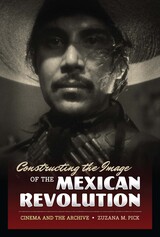 Constructing the Image of the Mexican Revolution: Cinema and the Archive
By Zuzana M. Pick
University of Texas Press, 2009 Katherine Singer Kovács Book Award, Society for Cinema and Media Studies, 2011 With a cast ranging from Pancho Villa to Dolores del Río and Tina Modotti, Constructing the Image of the Mexican Revolution demonstrates the crucial role played by Mexican and foreign visual artists in revolutionizing Mexico's twentieth-century national iconography. Investigating the convergence of cinema, photography, painting, and other graphic arts in this process, Zuzana Pick illuminates how the Mexican Revolution's timeline (1910–1917) corresponds with the emergence of media culture and modernity. Drawing on twelve foundational films from Que Viva Mexico! (1931–1932) to And Starring Pancho Villa as Himself (2003), Pick proposes that cinematic images reflect the image repertoire produced during the revolution, often playing on existing nationalist themes or on folkloric motifs designed for export. Ultimately illustrating the ways in which modernism reinvented existing signifiers of national identity, Constructing the Image of the Mexican Revolution unites historicity, aesthetics, and narrative to enrich our understanding of Mexicanidad.
 Constructing the Little House: Gender, Culture, and Laura Ingalls Wilder
Ann Romines
University of Massachusetts Press, 1997 With more than thirty-five million copies in print, the Little House series, written in the 1930s and 1940s by Laura Ingalls Wilder and her daughter, Rose Wilder Lane, has been a spectacular commercial success. What is it about this eight-volume serial novel for children that accounts for its enduring power? And what does the popularity of these books tell us about the currents of American culture?
Ann Romines interweaves personal observation with scholarly analysis to address these questions. Writing from a feminist perspective and drawing on resources of gender studies, cultural studies, and new historicist reading, she examines both the content of the novels and the process of their creation. She explores the relationship between mother and daughter working as collaborative authors and calls into question our assumptions about plot, juvenile fiction, and constructions of gender on the nineteenth-century frontier and in the Depression years when the Little House books were written.
This is a book that will appeal both to scholars and to general readers who might welcome an engaging and accessible companion volume to the Little House novels.
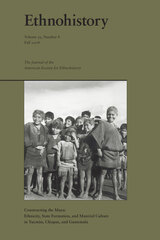 Constructing the Maya: Ethnicity, State Formation, and Material Culture in Yucatán, Chiapas, and Guatemala, Volume 55
Paul K. Eiss, special issue editor
Duke University Press This special issue of Ethnohistory is a significant contribution to the history and anthropology of the Maya in both Mexico and Guatemala. Utilizing a comparative analytic framework, these essays explore the ethnic dimensions—indigeneity, indigenismo, mestizaje, racial subjugation—of state formation as well as state practice in indigenous regions. The contributors emphasize how the material aspects of state formation—roads and infrastructure; model villages; restored ruins; portrait photography; highland marketplaces; modern improvements; traditional cultural performances, artifacts, and dress—become theaters for the construction and reconstruction of ethnic and political entities and relationships. Taken as a whole, the collection challenges a tendency toward the segmentation of the discussion of the Maya into distinct disciplines (anthropology and history), national historiographies (Mexican and Guatemalan), and, within Mexico, distinct regional historiographies (Yucatán and Chiapas). Contributors: David Carey Jr., Paul K. Eiss, Ben Fallaw, Stephen E. Lewis, Walter E. Little, John M. Watanabe
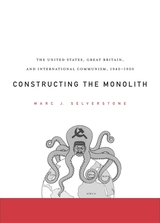 Constructing the Monolith: The United States, Great Britain, and International Communism, 1945–1950
Marc J. Selverstone
Harvard University Press, 2009 As the Cold War took shape during the late 1940s, policymakers in the United States and Great Britain displayed a marked tendency to regard international communism as a “monolithic” conspiratorial movement. The image of a “Communist monolith” distilled the messy realities of international relations into a neat, comprehensible formula. Its lesson was that all communists, regardless of their native land or political program, were essentially tools of the Kremlin.
Marc Selverstone recreates the manner in which the “monolith” emerged as a perpetual framework on both sides of the Atlantic. Though more pervasive and millennial in its American guise, this understanding also informed conceptions of international communism in its close ally Great Britain, casting the Kremlin’s challenge as but one more in a long line of threats to freedom.
This illuminating and important book not only explains the Cold War mindset that determined global policy for much of the twentieth century, but also reveals how the search to define a foreign threat can shape the ways in which that threat is actually met.
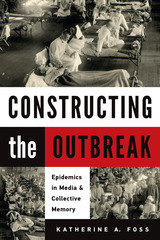 Constructing the Outbreak: Epidemics in Media and Collective Memory
Katherine A. Foss
University of Massachusetts Press, 2020 When an epidemic strikes, media outlets are central to how an outbreak is framed and understood. While reporters construct stories intended to inform the public and convey essential information from doctors and politicians, news narratives also serve as historical records, capturing sentiments, responses, and fears throughout the course of the epidemic.
Constructing the Outbreak demonstrates how news reporting on epidemics communicates more than just information about pathogens; rather, prejudices, political agendas, religious beliefs, and theories of disease also shape the message. Analyzing seven epidemics spanning more than two hundred years—from Boston's smallpox epidemic and Philadelphia's yellow fever epidemic in the eighteenth century to outbreaks of diphtheria, influenza, and typhoid in the early twentieth century—Katherine A. Foss discusses how shifts in journalism and medicine influenced the coverage, preservation, and fictionalization of different disease outbreaks. Each case study highlights facets of this interplay, delving into topics such as colonization, tourism, war, and politics. Through this investigation into what has been preserved and forgotten in the collective memory of disease, Foss sheds light on current health care debates, like vaccine hesitancy.
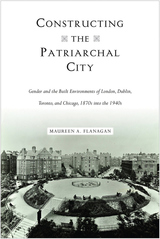 Constructing the Patriarchal City: Gender and the Built Environments of London, Dublin, Toronto, and Chicago, 1870s into the 1940s
Maureen A. Flanagan
Temple University Press, 2018 In the Anglo-Atlantic world of the late nineteenth century, groups of urban residents struggled to reconstruct their cities in the wake of industrialization and to create the modern city. New professional men wanted an orderly city that functioned for economic development. Women’s vision challenged the men’s right to reconstruct the city and resisted the prevailing male idea that women in public caused the city’s disorder. Constructing the Patriarchal City compares the ideas and activities of men and women in four English-speaking cities that shared similar ideological, professional, and political contexts. Historian Maureen Flanagan investigates how ideas about gender shaped the patriarchal city as men used their expertise in architecture, engineering, and planning to fashion a built environment for male economic enterprise and to confine women in the private home. Women consistently challenged men to produce a more equitable social infrastructure that included housing that would keep people inside the city, public toilets for women as well as men, housing for single, working women, and public spaces that were open and safe for all residents.
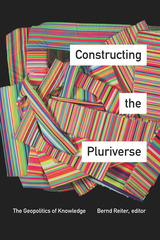 Constructing the Pluriverse: The Geopolitics of Knowledge
Bernd Reiter, editor
Duke University Press, 2018 The contributors to Constructing the Pluriverse critique the hegemony of the postcolonial Western tradition and its claims to universality by offering a set of “pluriversal” approaches to understanding the coexisting epistemologies and practices of the different worlds and problems we inhabit and encounter. Moving beyond critiques of colonialism, the contributors rethink the relationship between knowledge and power, offering new perspectives on development, democracy, and ideology while providing diverse methodologies for non-Western thought and practice that range from feminist approaches to scientific research to ways of knowing expressed through West African oral traditions. In combination, these wide-ranging approaches and understandings form a new analytical toolbox for those seeking creative solutions for dismantling Westernization throughout the world.
Contributors. Zaid Ahmad, Manuela Boatcă, Hans-Jürgen Burchardt, Raewyn Connell, Arturo Escobar, Sandra Harding, Ehsan Kashfi, Venu Mehta, Walter D. Mignolo, Ulrich Oslender, Issiaka Ouattara, Bernd Reiter, Manu Samnotra, Catherine E. Walsh, Aram Ziai
Constructing the Political Spectacle
Murray Edelman
University of Chicago Press, 1988 Thanks to the ready availability of political news today, informed citizens can protect and promote their own interests and the public interest more effectively. Or can they? Murray Edelman argues against this conventional interpretation of politics, one that takes for granted that we live in a world of facts and that people react rationally to the facts they know. In doing so, he explores in detail the ways in which the conspicuous aspects of the political scene are interpretations that systematically buttress established inequalities and interpretations already dominant political ideologies.
Constructing Tomorrow's Federalism: New Perspectives on Canadian Governance
Ian Peach
University of Manitoba Press, 2007 Governance of the federation is more complex today than ever before: perennial issues of federalism remain unresolved, conflicts continue over the legitimacy of federal spending power, and the accommodation of Quebec nationalism and Aboriginal self-government within the federation is a persistent and precarious concern.From discussions on democracy and distinctiveness to explorations of self-governance and power imbalances, Constructing Tomorrow’s Federalism tests assertions from scholars and practitioners on the legitimacy and future of the state of the federation. In this broad collection of essays, fifteen scholars and political leaders identify options for the future governance of Canada and contribute to a renewed civic discourse on what it means to govern ourselves as a liberal democracy and a multinational federation.
The Construction and Dynamics of Cultural Icons
Erica van Boven
Amsterdam University Press, 2021 Departing from the present need for cultural models within the public debate, this volume offers a new contribution to the study of cultural icons. From the traditional religious icon to the modern mass media icon, from the recognizable visual icon to the complex entanglement of image and collective narratives: The Construction and Dynamics of Cultural Icons offers an overview of existing theories, compares different definitions and proposes a comprehensive view on the icon and the iconic. Focusing in particular on the making of iconic representations and their changing social-cultural meanings through time, scholars from cultural memory studies, art history and literary studies present concrete operationalizations of the ways different types of cultural icons can be studied.
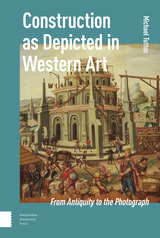 Construction as Depicted in Western Art: From Antiquity to the Photograph
Michael Tutton
Amsterdam University Press, 2021 The Art of Building has captured the interest of artists from the Roman period to today. The process of construction appears in western art in all its details, trades, and operations. Michael Tutton investigates the representation of building processes and materials through an examination of paintings, illuminated manuscripts, watercolours, prints, drawings and sculpture. Technical terms are explained and detailed interpretations of each work are provided, with insights into the artists' inspiration and themes. Even paintings not wholly or principally devoted to construction sites may give tantalising glimpses of building activity. How do these images convey meaning? How much is imagined; how much is authentic? Fully referenced endnotes, bibliography, and glossary complement the text and captions, informing not only the architectural and construction historian, but also those simply interested in art.
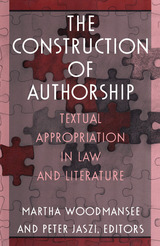 The Construction of Authorship: Textual Appropriation in Law and Literature
Martha Woodmansee and Peter Jaszi, eds.
Duke University Press, 1994 What is an author? What is a text? At a time when the definition of "text" is expanding and the technology whereby texts are produced and disseminated is changing at an explosive rate, the ways "authorship" is defined and rights conferred upon authors must also be reconsidered. This volume argues that contemporary copyright law, rooted as it is in a nineteenth-century Romantic understanding of the author as a solitary creative genius, may be inapposite to the realities of cultural production. Drawing together distinguished scholars from literature, law, and the social sciences, the volume explores the social and cultural construction of authorship as a step toward redefining notions of authorship and copyright for today's world. These essays, illustrating cultural studies in action, are aggressively interdisciplinary and wide-ranging in topic and approach. Questions of collective and collaborative authorship in both contemporary and early modern contexts are addressed. Other topics include moral theory and authorship; copyright and the balance between competing interests of authors and the public; problems of international copyright; musical sampling and its impact on "fair use" doctrine; cinematic authorship; quotation and libel; alternative views of authorship as exemplified by nineteenth-century women's clubs and by the Renaissance commonplace book; authorship in relation to broadcast media and to the teaching of writing; and the material dimension of authorship as demonstrated by Milton's publishing contract. Contributors. Rosemary J. Coombe, Margreta de Grazia, Marvin D'Lugo, John Feather, N. N. Feltes, Ann Ruggles Gere, Peter Jaszi, Gerhard Joseph, Peter Lindenbaum, Andrea A. Lunsford and Lisa Ede, Jeffrey A. Masten, Thomas Pfau, Monroe E. Price and Malla Pollack, Mark Rose, Marlon B. Ross, David Sanjek, Thomas Streeter, Jim Swan, Max W. Thomas, Martha Woodmansee, Alfred C. Yen
The Construction of Children's Character
Edited by Alex Molnar
University of Chicago Press, 1997 The Construction of Children's Character presents a comprehensive and critical assessment of contemporary character education theory and practice from a variety of perspectives—historical, cultural, philosophical, psychological, empirical, political, and ethical.
The idea that character education should be an important element in the curriculum of public schools is controversial. Critics reject the idea that schools should be involved in teaching values. Proponents often disagree among themselves—some detailing the proper values students should be taught, others arguing that character development must be part of a larger process of constructing an ethical community in the schools. The contributors to this volume bring a breadth of perspectives, experience, and approaches to the problem of assessing contemporary character education.
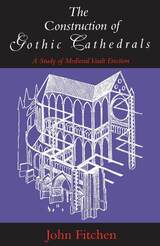 The Construction of Gothic Cathedrals: A Study of Medieval Vault Erection
John Fitchen
University of Chicago Press, 1981 A classic account of the design and building of the great cathedrals of the Gothic era
In The Construction of Gothic Cathedrals, John Fitchen systematically walks readers through the process of erecting the great edifices of the Gothic era. He explains the building equipment and falsework needed, the actual operations undertaken, and the sequence of these operations as specifically as they can be deduced today. In the absence of contemporary accounts of the techniques used by medieval builders, Fitchen's study brilliantly pieces together clues from manuscript illuminations, pictorial representations, and the fabrics of the building themselves. The result is the clearest picture available of the innovations and techniques that enabled these buildings, which still generate awe today, to rise majestically above the low buildings of their surrounding towns. It's a book that will enthrall readers of history, and one that, as Progressive Architecture noted, "no student of architecture should miss."
The Construction of Homosexuality
David F. Greenberg
University of Chicago Press, 1990 "At various times, homosexuality has been considered the noblest of loves, a horrible sin, a psychological condition or grounds for torture and execution. David F. Greenberg's careful, encyclopedic and important new book argues that homosexuality is only deviant because society has constructed, or defined, it as deviant. The book takes us over vast terrains of example and detail in the history of homosexuality."—Nicholas B. Dirks, New York Times Book Review
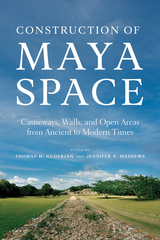 Construction of Maya Space: Causeways, Walls, and Open Areas from Ancient to Modern Times
Thomas H. Guderjan
University of Arizona Press, 2023 Construction of Maya Spaces sheds new light on how Maya society may have shaped—and been shaped by—the constructed environment. Moving beyond the towering pyramids and temples often associated with Maya spaces, this volume focuses on how those in power used features such as walls, roads, rails, and symbolic boundaries to control those without power, and how the powerless pushed back.
Through fifteen engaging chapters, contributors examine the construction of spatial features by ancient, historic, and contemporary Maya elite and nonelite peoples to understand how they used spaces differently. Through cutting-edge methodologies and case studies, chapters consider how and why Maya people connected and divided the spaces they used daily in their homes, in their public centers, in their sacred places such as caves, and across their regions to inform us about the mental constructs they used to create their lives and cultures of the past.
Contributors
Elias Alcocer Puerto
Alejandra Alonso Olvera
Traci Ardren
Jaime J. Awe
Alejandra Badillo Sánchez
Nicolas C. Barth
Grace Lloyd Bascopé
Adolpho Iván Batún-Alpuche
Elizabeth Beckner
M. Kathryn Brown
Bernadette Cap
Miguel Covarrubias Reyna
Juan Fernandez Diaz
Alberto G. Flores Colin
Thomas H. Guderjan
C. Colleen Hanratty
Héctor Hernández Álvarez
Scott R. Hutson
Joshua J. Kwoka
Whitney Lytle
Aline Magnoni
Jennifer P. Mathews
Stephanie J. Miller
Shawn G. Morton
Holley Moyes
Shannon Plank
Dominique Rissolo
Patrick Rohrer
Carmen Rojas Sandoval
Justine M. Shaw
J. Gregory Smith
Travis W. Stanton
Karl A. Taube
Daniel Vallejo-Cáliz
The Construction of Meaning
Edited by David I. Beaver, Luis D. Casillas Martinez, Brady Z. Clark, and Stefan
CSLI, 2002 This volume collects leading-edge work on the semantics and pragmatics of natural language, including contributions from Eve Clark, Paul Kiparsky, Stanley Peters, Dag Westerstahl, and Arnold Zwicky. The research covers a number of languages—English, Mandarin, Japanese, Korean, and Quechua—and phenomena, including adverbial modification, classifiers, constructional meaning, control phenomena, evidentiality, events semantics, focus, presupposition, and quantification. This is an essential volume for anyone interested in the latest developments in the study of meaning.
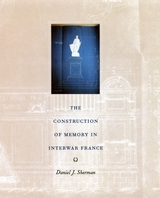 The Construction of Memory in Interwar France
Daniel J. Sherman
University of Chicago Press, 2000 One of the bloodiest conflicts in human history, World War I devastated France, leaving behind battlefields littered with the remains of the dead. Daniel Sherman takes a close look at the human impact of this Great War by examining the ways in which the French remembered their veterans and war dead after the armistice. Arguing that memory is more than just a record of experience, Sherman's cultural history offers a radically new perspective on how commemoration of WWI helped to shape postwar French society and politics.
Sherman shows how a wartime visual culture saturated with images of ordinary foot soldiers, together with contemporary novels, memoirs, and tourist literature, promoted a distinctive notion of combat experience. The contrast between battlefield and home front, soldier and civilian was the basis for memory and collective gratitude. Postwar commemoration, however, also grew directly out of the long and agonized search for the remains of hundreds of thousands of missing soldiers, and the sometimes contentious debates over where to bury them. For this reason, the local monument, with its inscribed list of names and its functional resemblance to tombstones, emerged as the focal point of commemorative practice. Sherman traces every step in the process of monument building as he analyzes commemoration's competing goals—to pay tribute to the dead, to console the bereaved, and to incorporate mourners' individual memories into a larger political discourse.
Extensively illustrated, Sherman's study offers a visual record of a remarkable moment in the history of public art. It is at once a moving account of a culture haunted by war and a sophisticated analysis of the political stakes of memory in the twentieth century.
Winner of the 2000 J. Russell Major Prize of the American Historical Association
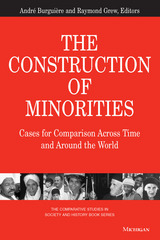 The Construction of Minorities: Cases for Comparison Across Time and Around the World
Andre Burguiere and Raymond Grew, Editors
University of Michigan Press, 2001 How does a minority come to be? In an unusual project, a notable group of French and American scholars take the view that minorities are socially constructed. Their original studies of specific historical examples produce a series of stimulating and provocative essays useful and enjoyable for specialists and the general reader alike.
Spawned from a conference organized by the journals Annales and Comparative Studies in Society and History in concert with the Center for Historical Research at l'EHESS in Paris and the Department of History at the University of Michigan, this collection contrasts studies of Afro-Americans in the United States, French Protestants, notables in Renaissance Florence, religious minorities in the Ottoman Empire, Muslim and Chinese traders in Southeast Asia, the native peoples of Spanish America, lower-caste Indians, ethnic minorities in the Soviet Union, Australian aborigines, and American and French responses to AIDS to reveal valuable information about how minorities come to be constructed within societies. Some of the minorities considered are identified primarily in terms of their ethnicity, some by social class, and some by religion (Protestant, Jewish, and Muslim); a final essay asks whether the victims of AIDS constitute a minority at all.
With its cross-cultural emphasis, this book will be a valuable addition to courses on diversity, ethnicity, and cultural comparison. It is destined to be a useful reference for undergraduate and research libraries and a much-consulted work for specialists on each of the societies considered.
André Burguière is Research Director, l'Ecole des Hautes Etudes en Sciences Sociales (l'EHESS) in Paris. Raymond Grew is Professor of History Emeritus, University of Michigan.
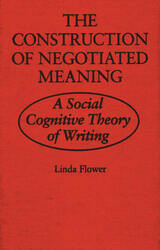 The Construction of Negotiated Meaning: A Social Cognitive Theory of Writing
Linda Flower
Southern Illinois University Press, 1994 Based on five years of close observation of students, writing and collaborative planning—the practice in which student writers take the roles of planner and supporter to help each other develop a more rhetorically sophisticated writing plan—foremost cognitive composition researcher Linda Flower redefines writing in terms of an interactive social and cognitive process and proposes a convincing and compelling theory of the construction of negotiated meaning. Flower seeks to describe how writers construct meaning. Supported by the emerging body of social and cognitive research in rhetoric, education, and psychology, she portrays meaning making as a literate act and a constructive process. She challenges traditional definitions of literacy, adding to that concept the elements of social literate practices and personal literate acts. In Flower’s view, this social cognitive process is a source of tension and conflict among the multiple forces that shape meaning: the social and cultural context, the demands of discourse, and the writer’s own goals and knowledge. Flower outlines a generative theory of conflict. With this conflict central to her theory of the construction of negotiated meaning, she examines negotiation as an alternative to the metaphors of reproduction and conversation. It is through negotiation, Flower argues, that social expectations, discourse conventions, and the writer’s personal goals and knowledge become inner voices. The tension among these forces often creates the hidden logic behind student writing. In response to these conflicting voices, writers sometimes rise to the active negotiation of meaning, creating meaning in the interplay of alternatives, opportunities, and constraints.
The Construction of Ottonian Kingship: Narratives and Myth in Tenth-Century Germany
Antoni Grabowski
Amsterdam University Press, 2018 German historians long assumed that the German Kingdom was created with Henry the Fowler's coronation in 919. The reigns of both Henry the Fowler, and his son Otto the Great, were studied and researched mainly through Widukind of Corvey's chronicle Res Gestae Saxonicae. There was one source on Ottonian times that was curiously absent from most of the serious research: Liudprand of Cremona's Antapodosis. The study of this chronicle leads to a reappraisal of the tenth century in Western Europe showing how mythology of the dynasty was constructed. By looking at the later reception (through later Middle Ages and then on 19th and 20th century historiography) the author showcases the longevity of Ottonian myths and the ideological expressions of the tenth century storytellers.
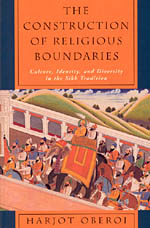 The Construction of Religious Boundaries: Culture, Identity, and Diversity in the Sikh Tradition
Harjot Oberoi
University of Chicago Press, 1994 In this major reinterpretation of religion and society in India, Harjot Oberoi challenges earlier accounts of Sikhism, Hinduism and Islam as historically given categories encompassing well-demarcated units of religious identity. Through a searching examination of Sikh historical materials, he shows that early Sikh tradition was not concerned with establishing distinct religious boundaries. Most Sikhs recognized multiple identities grounded in local, regional, religious, and secular loyalties. Consequently, religious identities were highly blurred and several competing definitions of what constituted a Sikh were possible.
In the closing decades of the nineteenth century, however, the Singh Sabha, a powerful new Sikh movement, began to view the multiplicity in Sikh identity with suspicion and hostility. Aided by social and cultural forces unleashed by the British Raj, the Singh Sabha sought to recast Sikh tradition and purge it of diversity. The ethnocentric logic of a new elite dissolved alternative ideals under the highly codified culture of modern Sikhism.
A study of the process by which a pluralistic religious world view is replaced by a monolithic one, this important book calls into question basic assumptions about the efficacy of fundamentalist claims and the construction of all social and religious identities. An essential book for the field of South Asian religions, this work is also an important contribution to cultural anthropology, postcolonial studies, and the history of religion in general.
A Constructional Approach to Resultatives
Hans C. Boas
CSLI, 2003 Providing a unified solution within the frameworks of Construction Grammar and Frame Semantics, Hans Boas develops an account of resultative constructions in English by grouping them in two classes: conventionalized and non-conventionalized. The usage-based model used here proposes that each particular sense of a verb constitutes a conventionalized mini-construction, which is crucial information for the licensing of arguments. In contrast, verbs in non-conventionalized resultative constructions can acquire a novel meaning and thereby a new syntactic frame. English and German resultatives are compared to illustrate the distinct lexical polysemy networks of English and German verbs.
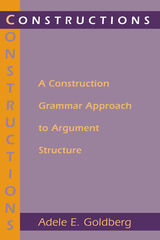 Constructions: A Construction Grammar Approach to Argument Structure
Adele E. Goldberg
University of Chicago Press, 1995 Drawing on work in linguistics, language acquisition, and computer science, Adele E. Goldberg proposes that grammatical constructions play a central role in the relation between the form and meaning of simple sentences. She demonstrates that the syntactic patterns associated with simple sentences are imbued with meaning—that the constructions themselves carry meaning independently of the words in a sentence.
Goldberg provides a comprehensive account of the relation between verbs and constructions, offering ways to relate verb and constructional meaning, and to capture relations among constructions and generalizations over constructions. Prototypes, frame semantics, and metaphor are shown to play crucial roles. In addition, Goldberg presents specific analyses of several constructions, including the ditransitive and the resultative constructions, revealing systematic semantic generalizations.
Through a comparison with other current approaches to argument structure phenomena, this book narrows the gap between generative and cognitive theories of language.
Constructions in Acquisition
Edited by Barb Kelly and Eve V. Clark
CSLI, 2006 The Acquisition of Constructions is the culmination of new research into constructions of grammar in languages as diverse as Cantonese, English, French, German, Mandarin, Thai, and Tzeltal. The contributors, all noted scholars in the field of construction grammar, investigate the acquisition of constructions—that is, the consistent patterns for combining words and phrases within a language—in children, from the first and most rudimentary gesture combinations to the production of larger syntactic constructions and complex clauses. Timely and comprehensive, it will be a superb resource for scholars of syntax.
Constructions of the Real: Intersections of Documentary-based Film Practice and Theory
Edited by Christine Rogers, Kim Munro, Liz Burke, and Catherine Gough-Brady
Intellect Books, 2023 A presentation of nonfiction and documentary filmmaking as a space for formal experimentation and creative interpretation of the world.
Constructions of the Real gathers a wide range of writing from nonfiction and documentary filmmakers from around the world who undertake theoretically informed practice and think through making. The filmmakers and writers featured here explore the rich space between the academy and industry, and they reflect on, interrogate, and explicate their filmmaking practices in relation to questions of form, content, and process. Engaging with current debates about the role of creative scholarship, the contributors make a powerful claim for nonfiction filmmaking as a knowledge-making practice for revealing, critiquing, and interpreting the world.
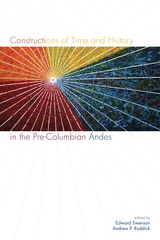 Constructions of Time and History in the Pre-Columbian Andes
Edward Swenson
University Press of Colorado, 2018 Constructions of Time and History in the Pre-Columbian Andes explores archaeological approaches to temporalities, social memory, and constructions of history in the pre-Columbian Andes. The authors examine a range of indigenous temporal experiences and ideologies, including astronomical, cyclical, generational, eschatological, and mythical time. This nuanced, interdisciplinary volume challenges outmoded anthropological theories while building on an emic perspective to gain greater understanding of pre-Columbian Andean cultures. Contributors to the volume rethink the dichotomy of past and present by understanding history as indigenous Andeans perceived it—recognizing the past as a palpable and living presence. We live in history, not apart from it. Within this framework time can be understood as a current rather than as distinct points, moments, periods, or horizons. The Andes offer a rich context by which to evaluate recent philosophical explorations of space and time. Using the varied materializations and ritual emplacements of time in a diverse sampling of landscapes, Constructions of Time and History in the Pre-Columbian Andes serves as a critique of archaeology’s continued and exclusive dependence on linear chronologies that obscure historically specific temporal practices and beliefs. Contributors: Tamara L. Bray, Zachary J. Chase, María José Culquichicón-Venegas, Terence D’Altroy, Giles Spence Morrow, Matthew Sayre, Francisco Seoane, Darryl Wilkinson
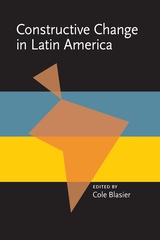 Constructive Change in Latin America
Cole Blasier
University of Pittsburgh Press, 1968 Cole Blasier draws together eight essays from economists, political scientists, anthropologists, and other social scientists to discuss the growth of Latin American economics during the late twentieth-century. Anthropologist John P. Gillin looks at the impact of industrialization on a Guatemalan village, and sociologists Fernando Cardoso and José Luis Reyna present a pioneering analysis of the effect of industrialization on occupational structure and social stratification. Dwight Brothers takes a critical look at the role of private investment, and fellow economist John Powelson proposes that an integrated social science model of economic growth could resolve some of the conflict between North American economic principles and Latin American political interests. Richard S. Thorn, formerly with the IMF, analyzes the achievements and short-comings of the Alliance for Progress. Literary critic Germán Arciniegas probes the traditional interaction between Latin American intellectuals and politics, and political scientist James Malloy describes the revolutionary movement in Bolivia and its inability to reconcile the competing demands of political control and economic development.
Constructivism in Education
Edited by D. C. Phillips
University of Chicago Press, 2000 Constructivism in Education is a lively discussion of the varieties of constructivist thought which have been applied to the teaching of school subjects, especially science and mathematics. Contributors include philosophers of education and specialists in science, mathematics, and childhood education.
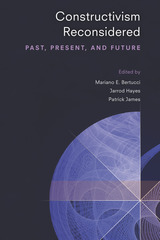 Constructivism Reconsidered: Past, Present, and Future
Mariano E. Bertucci, Jarrod Hayes, and Patrick James, Editors
University of Michigan Press, 2018 In international relations (IR), the theory of constructivism argues that the complicated web of international relations is not the result of basic human nature or some other unchangeable aspect but has been built up over time and through shared assumptions.
Constructivism Reconsidered synthesizes the nature of and debates on constructivism in international relations, providing a systematic assessment of the constructivist research program in IR to answer specific questions: What extent of (dis)agreement exists with regard to the meaning of constructivism? To what extent is constructivism successful as an alternative approach to rationalism in explaining and understanding international affairs? Constructivism Reconsidered explores constructivism’s theoretical, empirical, and methodological strengths and weaknesses, and debates what these say about its past, present, and future to reach a better understanding of IR in general and how constructivism informs IR in particular.
 Constructs of Prophecy in the Former and Latter Prophets and Other Texts
Lester L. Grabbe
SBL Press, 2011 Explore the ancient context of prophecy and prophetic figures
This collection of essays examines the construction of prophecy in the Former and Latter Prophets, Chronicles, Daniel, and even in the Quran. This unique anthology recognizes that these texts do not simply describe the prophetic phenomena but rather depict prophets according to various conventional categories or their own individual points of view. Each essay analyzes how these writings portray prophecy or prophets to better understand how the respective authors structured their writings.
Features
- Introduction and twelve essays cover prophecy in the Hebrew Bible and the Quran
- Essays examine the relationship between the prophets and the cult, oral pronouncements and written collections, and divination, prophecy, and apocalypticism
- Additional essays raise questions about the prophetic persona and examine the prophets in hermeneutical perspective
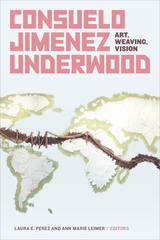 Consuelo Jimenez Underwood: Art, Weaving, Vision
Laura E. Pérez and Ann Marie Leimer, editors
Duke University Press, 2021 Consuelo Jimenez Underwood’s artwork is marked by her compassionate and urgent engagement with a range of pressing contemporary issues, from immigration and environmental precarity to the resilience of Indigenous ancestral values and the necessity of decolonial aesthetics in art making. Drawing on the fiber arts movement of the 1960s and 1970s, Chicana feminist art, and Indigenous fiber- and loom-based traditions, Jimenez Underwood’s art encompasses needlework, weaving, painted and silkscreened pieces, installations, sculptures, and performance. This volume’s contributors write about her place in feminist textile art history, situate her work among that of other Indigenous-identified feminist artists, and explore her signature works, series, techniques, images, and materials. Redefining the practice of weaving, Jimenez Underwood works with repurposed barbed wire, yellow caution tape, safety pins, and plastic bags and crosses Indigenous, Chicana, European, and Euro-American art practices, pushing the arts of the Americas beyond Eurocentric aesthetics toward culturally hybrid and Indigenous understandings of art making. Jimenez Underwood’s redefinition of weaving and painting alongside the socially and environmentally engaged dimensions of her work position her as one of the most vital artists of our time.
Contributors. Constance Cortez, Karen Mary Davalos, Carmen Febles, M. Esther Fernández, Christine Laffer, Ann Marie Leimer, Amalia Mesa-Bains, Robert Milnes, Jenell Navarro, Laura E. Pérez, Marcos Pizarro, Verónica Reyes, Clara Román-Odio, Carol Sauvion, Cristina Serna, Emily Zaiden
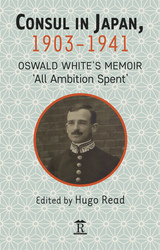 Consul in Japan, 1903-1941: Oswald White’s Memoir ‘All Ambition Spent’
Hugo Read
Amsterdam University Press, 2017 A rare account by a foreigner working in Japan in the 20th century; a unique insight into this important period of Japan's history; complements existing material. First a student interpreter, then an assistant in Korea, Vice-Consul in Yokohama and Osaka, Consul in Nagasaki and Dairen, then Consul-General in Seoul, Osaka, Mukden and Tientsin. Not a contemporary diary as such, but a write-up of notes made towards the end of White's career spanning thirty-eight years. Importantly, it includes reflective passages on the momentous developments of the later 1930s, as Japan moved onto a war-footing in China - and as Consul-General in the Chinese treaty port of Tianjin under Japanese occupation, White was in the middle of the growing tensions between Britain and Japan. His post-war recollections are also valuable. Like others who had lived and worked in Japan, he sought to come to terms with what had happened to the country in which he had spent so much of his adult life. Along the way he provides fascinating vignettes of his colleagues, some well known, others less so, while his service in Seoul, Mukden (now Shenyang) and Tianjin provides fresh material on the Japanese colonial empire.
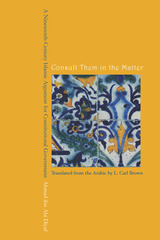 Consult Them in the Matter: A Nineteenth-Century Islamic Argument for Constitutional Government
Ahmad ibn Abi Diyaf
University of Arkansas Press, 2005 The 2005 winner of the The Arkansas Arabic Traslation Award, sponsored by the King Fahd Center for Middle East and Islamic Studies at the University of Arkansas and the University of Arkansas Press, though written in the nineteenth century, is a richly contextualized precursor of modern Muslim wrestlings with notions of democracy and constitutionalism. Translated by the distinguished Middle East historian L. Carl Brown, this important historical work is now available to English language readers for the first time. Toward the end of his long career as an official in the Tunisian government, Ahmad ibn Abi Diyaf (Bin Diyaf) took on the task of writing a history of his country. The result was a multivolume history, concentrating on the period that Bin Diyaf experienced first-hand from within the small circle of Tunisia’s government, where he had served from the 1820s to the 1860s. It was as if a Harry Hopkins, Arthur Schlesinger Jr., or Henry Kissinger had served not just a Roosevelt, Kennedy, or Nixon, but all three presidents for an unbroken forty-year period. Not only the most penetrating and most perceptive study of nineteenth-century Tunisian political life, Bin Diyaf’s history was illustrative of the activities and ideas in play throughout the larger Ottoman world. His work was a history with a thesis. Bin Diyaf sought to show the need for his country, and for that matter the larger Ottoman world, to adopt representative and responsive forms of government as existed in Europe. His purpose was most clearly set out in the Muqaddima or Introduction to his monumental work, which Brown has translated. The ideas produced in this text roughly a century and a half ago were not institutionalized, but they did catch hold as ideas and goals influencing later developments.
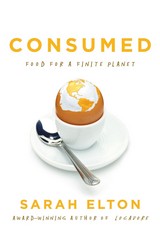 Consumed: Food for a Finite Planet
Sarah Elton
University of Chicago Press, 2013 By 2050, the world population is expected to reach nine billion. And the challenge of feeding this rapidly growing population is being made greater by climate change, which will increasingly wreak havoc on the way we produce our food. At the same time, we have lost touch with the soil—few of us know where our food comes from, let alone how to grow it—and we are at the mercy of multinational corporations who control the crops and give little thought to the damage their methods are inflicting on the planet. Our very future is at risk. In Consumed, Sarah Elton walks fields and farms on three continents, not only investigating the very real threats to our food, but also telling the little-known stories of the people who are working against time to create a new and hopeful future. From the mountains of southern France to the highlands of China, from the crowded streets of Nairobi to the banks of the St. Lawrence River in Quebec, we meet people from all walks of life who are putting together an alternative to the omnipresent industrial food system. In the arid fields of rural India we meet a farmer who has transformed her community by selling organic food directly to her neighbors. We visit a laboratory in Toronto where scientists are breeding a new kind of rice seed that they claim will feed the world. We learn about Italy’s underground food movement; how university grads are returning to the fields in China, Greece, and France; and how in Detroit, plots of vacant land planted with kale and carrots can help us see what’s possible. Food might be the problem, but as Elton shows, it is also the solution. The food system as we know it was assembled in a few decades—and if it can be built that quickly, it can be reassembled and improved in the same amount of time. Elton here lays out the targets we need to meet by the year 2050. The stories she tells give us hope for avoiding a daunting fate and instead help us to believe in a not-too-distant future when we can all sit at the table.
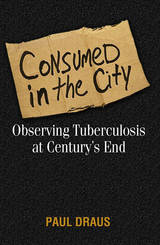 Consumed In The City: Observing Tuberculosis At Century'S End
Paul Draus
Temple University Press, 2004 As a public health field worker assigned to control tuberculosis in New York and Chicago in the 1990s, Paul Draus encountered the horrible effects of tuberculosis resurgence in urban areas, and the intersections of disease, blight, and poverty. Consumed in the City grows out of his experiences and offers a persuasive case for thinking about—and treating—tuberculosis as an inseparable component of the scourges of poverty, homelessness, AIDS, and drug abuse. It is impossible, Draus argues, to treat and eliminate tuberculosis without also treating the social ills that underlie the new epidemic. Paul Draus begins by describing his own on-the-job training as a field worker, then places the resurgence of tuberculosis into historical and sociological perspective. He vividly describes his experiences in hospital rooms, clinics, jails, housing projects, urban streets, and other social settings where tuberculosis is often encountered and treated. Using case studies, he demonstrates how social problems affect the success or failure of actual treatment. Finally, Draus suggests how a reformed public health agenda could help institute the changes required to defeat a deadly new epidemic. At once a personal account and a concrete plan for rethinking the role of public health, Consumed in the City marks a significant intervention in the way we think about the entangled crises of urban dislocation, poverty, and disease.
Consumer Attitudes Toward Data Breach Notifications and Loss of Personal Information
Lillian Ablon
RAND Corporation, 2016 Although spending on cybersecurity continues to grow, companies, government agencies, and nonprofit organizations are still being breached, and sensitive personal, financial, and health information is still being compromised. This report sets out the results of a study of consumer attitudes toward data breaches, notifications that a breach has occurred, and company responses to such events.
 Consumer Culture
Lury, Celia
Rutgers University Press, 1996 This book is written as a survey for students who are interested in the nature and role of consumer culture in modern societies. Drawing on a wide range of studies and disciplines, Celia Lury examines the rise of consumer culture and the changing relations between the production and consumption of cultural goods. Rejecting the Marxist principle of production as the lone economic determinant in capitalist society, Lury presents consumerism as an equally active player in the free market. Rather than existing as opposites, production and consumerism are seen as complements, feeding off each other in an endless cycle. As the author writes, “the use or appropriation of an object is more often than not both a moment of consumption and production, of undoing and doing, of destruction and construction.” Lury weaves unique arguments over the expansive nature of consumption, including explanations as to how poorer segments of society do in fact contribute to consumer culture and how a commodity moves beyond its function and assumes a cultural and symbolic meaning. Not only does the author explore the way an individual’s position in social groups structured by class, gender, race and age affects the nature of his or her participation in consumer culture, but also how this culture itself is instrumental in the defining of social and political groups and the forming of an individual’s self-identity. Clearly written and well illustrated, Consumer Culture is a lively and engaging introduction to a topic which is of growing importance in media and cultural studies and in the sociology of culture. It will enable readers to understand and ultimately to have better control over the means of consumption.
Consumer Culture: Selected Essays
Edited by Gjoko Muratovski
Intellect Books, 2016 We live in a society that defines us by what we consume and how. Every day we make purchasing decisions that express our sense of belonging, our commitments to the environment, and our systems of belief. We often choose to buy things, not necessarily because we need them, but because we believe that these things will help us express who we are—in our own eyes and in the eyes of others. Whether we like it or not, consumerism is the prevalent ideology of our time. Led by Gjoko Muratovski who has long been influential at the intersection of design and business, Consumer Culture is the ideal starting point for an investigation into the social construction of the global economy.
Consumer Demand in the United States: Analyses and Projections, 2nd and enlarged edition
H. S. Houthakker and Lester D. Taylor
Harvard University Press, 1970 In 1966, the Journal of Marketing said of the first edition, it "takes a long stride in bridging the gap" between econometricians and business and "affords a sophisticated understanding of the future contours of consumer demand in a period of great change." This extensive revision is based on new figures; it includes information on other countries and projected demand for over eighty products to 1975.
 Consumer Ethics in a Global Economy: How Buying Here Causes Injustice There
Daniel K. Finn
Georgetown University Press, 2019 It is a serious mistake to think that all we need for a just world is properly-structured organizations. But it is equally wrong to believe that all we need are virtuous people. Social structures alter people's decisions through the influence of the restrictions and opportunities they present. Does buying a shirt at the local department store create for you some responsibility for the workplace welfare of the women who sewed it half a planet away? Many people interested in justice have claimed so, but without identifying any causal link between consumer and producer, for the simple reason that no single consumer has any perceptible effect on any of those producers. Finn uses a critical realist understanding of social structures to view both the positive and negative effects of the market as a social structure comprising a long chain of causal relations from consumer/clerk to factory manager/seamstress. This causal connection creates a consequent moral responsibility for consumers and society for the destructive effects that markets help to create. Clearly written and engaging, this book is a must-read for scholars involved with these moral issues.
Consumer Identities: Agency, Media and Digital Culture
Edited by Candice Roberts and Myles Ethan Lascity
Intellect Books, 2019 This edited collection explores the notion of agency by tracing the role and activities of consumers from the pre-internet age into the possible future. Using an overview of the historical creation of consumer identity, Consumer Identities demonstrates that active consumption is not merely a product of the digital age; it has always been a means by which a person can develop identity. Grounded in the acknowledgment that identity is a constructed and contested space, the authors analyze emerging dynamics in contemporary consumerism, ongoing tensions of structure and agency in consumer identities, and the ways in which identity construction could be influenced in the future. By exploring consumer identity through examples in pop culture, the authors have created a scholarly work that will appeal to industry professionals as well as academics.
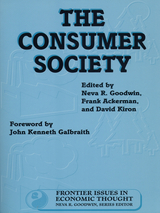 The Consumer Society
Edited by Neva R. Goodwin, Frank Ackerman, and David Kiron
Island Press, 1997 The developed countries, particularly the United States, consume a disproportionate share of the world's resources, yet high and rising levels of consumption do not necessarily lead to greater satisfaction, security, or well-being, even for affluent consumers. The Consumer Society provides brief summaries of the most important and influential writings on the environmental, moral, and social implications of a consumer society and consumer lifestyles. Each section consists of ten to twelve summaries of critical writings in a specific area, with an introductory essay that outlines the state of knowledge in that area and indicates where further research is needed. Sections cover: - Scope and Definition
- Consumption in the Affluent Society
- Family, Gender, and Socialization
- The History of Consumerism
- Foundations of Economic Theories of Consumption
- Critiques and Alternatives in Economic Theory
- Perpetuating Consumer Culture: Media, Advertising, and Wants Creation
- Consumption and the Environment
- Globalization and Consumer Culture
- Visions of an Alternative
This book is the second volume in the Frontier Issues in Economic Thought series, which provides surveys of the most significant writings in emergent areas of economics -- an invaluable aid in fast-growing fields where genuine new ground is being broken. The series brings together economists, sociologists, psychologists, and philosophers to develop analyses that challenge and enrich the dominant neoclassical paradigm. The Consumer Society is an essential guide to and summary of the literature of consumption and will be of interest to anyone concerned with the deeper economic, social, and ethical implications of consumerism.
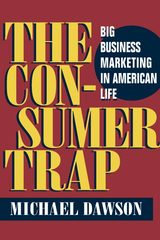 The Consumer Trap: BIG BUSINESS MARKETING IN AMERICAN LIFE
Michael Dawson
University of Illinois Press, 2003 The Consumer Trap blows the lid off the trillion-dollar-a-year business marketing industry, explaining how it continues to soak up economic and environmental resources and dominate the personal lives of citizens. Flouting conventional mainstream and radical thinking about consumer culture, Michael Dawson reveals how corporate marketing embodies and extends into personal life the scientific management principles famously enunciated by Frederick Winslow Taylor, whose earliest disciples predicted the big business marketing revolution. After revealing why corporate capitalism fuels an ever-increasing marketing race, Dawson provides a step-by-step account of how this behemoth works and expands. Using firsthand evidence, he explains in detail how big business marketing campaigns penetrate and profoundly affect the lives of ordinary Americans. Dawson argues that if people are to escape the costly consumer trap set by the overclass, they will need to renew class struggle from below, inventing new institutions for democratically governing and implementing major economic decisions. A blueprint for reinventing the study and debate of the sociocultural effects of corporate marketing practices, The Consumer Trap makes big business marketing a target of direct historical and sociological scrutiny.
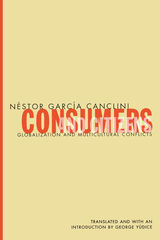 Consumers And Citizens: Globalization and Multicultural Conflicts
Nestor Garcia Canclini
University of Minnesota Press, 2001 An essential analysis of the ways consumerism and globalization intersect with political power. In Consumers and Citizens, Néstor García Canclini, the best-known and most innovative cultural studies scholar in Latin America, maps the critical effects of urban sprawl and global media and commodity markets on citizens-and shows at the same time that the complex results mean not only a shrinkage of certain traditional rights (particularly those of the welfare or client state) but also new openings for expanding citizenship. García Canclini focuses on the diverse ways in which democratic societies recognize markets of citizen opinions, however heterogeneous and dissonant, as in the fashion and entertainment industries. He shows how identity issues, brought to the fore by the aligning of citizenship and consumption, can no longer be understood strictly within the purview of territory or nation. Rather, the postmodern citizen-consumer inhabits a transterritorial and multilingual space, structured more along the lines of markets than states. Defining this space, García Canclini seeks to formulate a participatory and critical approach to consumption in which national culture, far from being extinguished, is reconstituted in transnational, cultural interactions.
 Consumers’ Cooperatives in the North Central States
Leonard Kercher
University of Minnesota Press, 1941
Consumers’ Cooperatives in the North Central States was first published in 1941. Minnesota Archive Editions uses digital technology to make long-unavailable books once again accessible, and are published unaltered from the original University of Minnesota Press editions.“Comprehensive, up-to-date analysis of the region having the longest history of successful consumer cooperation.”“Detailed case histories to 1940 of typical retail units and leading wholesale organizations.”“Practical recommendations and thoughtful criticism, useful to cooperatives and cooperators everywhere.”No other book on this subject is so rich in reliable facts, objective reporting, and comprehensive treatment as this study. It is based on extensive first-hand investigation by trained research men, with figures brought down to 1940.Case histories of the 3 leading wholesales and 15 local societies typical of some 800 in the region are included. Each discusses the origin, growth, membership, trends of operation, buying methods, price levels, advertising, financial organization, personnel, patronage returns, ratio of annual earnings to total assets and net worth, relations with other cooperatives in districts and regional federations for education, recreation, insurance, credit, etc. Every phase of operation of these carefully selected cases is expertly analyzed and described. Many are summarized with recommendations for future action.Of special value are the discussions of types of cooperatives, the analyses of basic community factors involved in successful cooperation, the suggested solutions for problems of organization and management, and the long-range view of possibilities for price regulation and customer satisfaction.
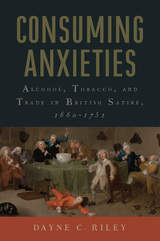 Consuming Anxieties: Alcohol, Tobacco, and Trade in British Satire, 1660-1751
Dayne C. Riley
Bucknell University Press, 2024 Writers of the late seventeenth and early eighteenth centuries—a period of vast economic change—recognized that the global trade in alcohol and tobacco promised a brighter financial future for England, even as overindulgence at home posed serious moral pitfalls. This engaging and original study explores how literary satirists represented these consumables—and related anxieties about the changing nature of Britishness—in their work. Riley traces the satirical treatment of wine, beer, ale, gin, pipe tobacco, and snuff from the beginning of Charles II’s reign, through the boom in tobacco’s popularity, to the end of the Gin Craze in libertine poems and plays, anonymous verse, ballad operas, and the satire of canonical writers such as Gay, Pope, and Swift. Focusing on social concerns about class, race, and gender, Consuming Anxieties examines how satirists championed Britain’s economic strength on the world stage while critiquing the effects of consumable luxuries on the British body and consciousness.
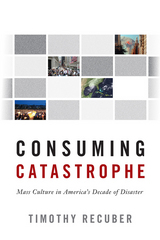 Consuming Catastrophe: Mass Culture in America's Decade of Disaster
Timothy Recuber
Temple University Press, 2016 Horrified, saddened, and angered: That was the American people’s reaction to the 9/11 attacks, Hurricane Katrina, the Virginia Tech shootings, and the 2008 financial crisis. In Consuming Catastrophe, Timothy Recuber presents a unique and provocative look at how these four very different disasters took a similar path through public consciousness. He explores the myriad ways we engage with and negotiate our feelings about disasters and tragedies—from omnipresent media broadcasts to relief fund efforts and promises to “Never Forget.” Recuber explains how a specific and “real” kind of emotional connection to the victims becomes a crucial element in the creation, use, and consumption of mass mediation of disasters. He links this to the concept of “empathetic hedonism,” or the desire to understand or feel the suffering of others. The ineffability of disasters makes them a spectacular and emotional force in contemporary American culture. Consuming Catastrophe provides a lively analysis of the themes and meanings of tragedy and the emotions it engenders in the representation, mediation and consumption of disasters.
 Consuming Desires: Consumption, Culture, and the Pursuit of Happiness
Edited by Roger Rosenblatt
Island Press, 1999 Consider this paradox: Ecologists estimate that it would take three planets Earth to provide an American standard of living to the entire world. Yet it is that standard of living to which the whole world aspires. In Consuming Desires, award-winning writer and social commentator Roger Rosenblatt brings together a brilliant collection of thinkers and writers to shed light on the triumphs and tragedies of that disturbing paradox. The book represents a captivating salon, offering a rich and varied dialogue on the underlying roots of consumer culture and its pervasive impact on ourselves and the world around us. Each author offers a unique perspective, their layers of thoughts and insights building together to create a striking, multifaceted picture of our society and culture. Jane Smiley probes the roots of consumerism in the emancipation of women from household drudgery afforded by labor-saving devices and technological innovation; Alex Kotlowitz describes the mutual reinforcement of fashion trends as poor inner-city kids and rich suburban kids strive to imitate each other; Bill McKibben discusses the significance, and the irony, of defining yourself not by what you buy, but by what you don't buy. The essays range widely, but two ideas are central to nearly all of them: that consumption is driven by yearning and desire -- often unspoken, seemingly insatiable -- and that what prevents us from keeping our consumptive impulse in check is the western concept of self, the solitary and restless self, entitled to all it can pay for. As Rosenblatt explains in his insightful introduction: "Individualism and desire are what makes us great and what makes us small. Freedom is our dream and our enemy. The essays touch on these paradoxes, and while all are too nuanced and graceful to preach easy reform, they give an idea of what reform means, where it is possible, and, in some cases, where it may not be as desirable as it appears."
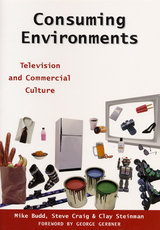 Consuming Environments: Television and Commercial Culture
Michael Budd
Rutgers University Press, 1999 Whether we love it, hate it, or use it just to pass the time, most adults in the United States are watching more television than ever, up to four hours a day by some estimates. Our devotion to commercial television gives it unprecedented power in our lives. Advertisers and television executives want us to spend as much time as we can in front of our sets, for it is access to our brains that they buy and sell. Yet the most important effect of television may be one that no one intends-accelerated destruction of the natural environment. Consuming Environments explores how, with its portrayals of a world of simulated abundance, television has nurtured a culture of consumerism and overconsumption. The average person in the U.S. consumes more than twice the grain and ten times the oil of a citizen of Brazil or Indonesia. And people in less industrialized countries suffer while their resources are commandeered to support comfortable lifestyles in richer nations. Using detailed examples illustrated with images from actual commercials, news broadcasts, and television shows, the authors demonstrate how ads and programs are put together in complex ways to manipulate viewers, and they offer specific ways to counteract the effects of TV and overconsumption's assault on the environment.
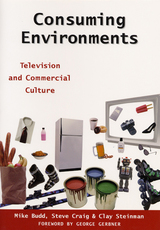 Consuming Environments: Television and Commercial Culture
Craig, Steve
Rutgers University Press, 1999 Whether we love it, hate it, or use it just to pass the time, most adults in the United States are watching more television than ever, up to four hours a day by some estimates. Or devotion to commercial television gives it unprecedented power in our lives.
Advertisers and television executives want us to spend as much time as we can in front of our sets, for it is access to our brains that they buy and sell. Yet the most important effect of television may be one that no one intends--accelerated destruction of the natural environment.
Consuming Environments explores how, with its portrayals of a world of simulated abundance, television has nurtured a culture of consumerism and overconsumption. The average person in the U.S. consumes more than twice the grain and ten times the oil of a citizen in Brazil or Indonesia. And people in less industrialized countries suffer while their resources are commandeered to support comfortable lifestyles in richer nations. Using detailed examples illustrated with images from actual commercials, news broadcasts, and television shows, the authors demonstrate how ads and programs are put together in complex ways to manipulate viewers, and they offer specific ways to counteract the effects of TV and overconsumption's assault on the environment.
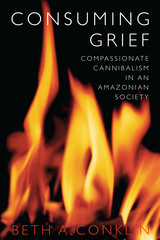 Consuming Grief: Compassionate Cannibalism in an Amazonian Society
By Beth A. Conklin
University of Texas Press, 2001 Mourning the death of loved ones and recovering from their loss are universal human experiences, yet the grieving process is as different between cultures as it is among individuals. As late as the 1960s, the Wari' Indians of the western Amazonian rainforest ate the roasted flesh of their dead as an expression of compassion for the deceased and for his or her close relatives. By removing and transforming the corpse, which embodied ties between the living and the dead and was a focus of grief for the family of the deceased, Wari' death rites helped the bereaved kin accept their loss and go on with their lives. Drawing on the recollections of Wari' elders who participated in consuming the dead, this book presents one of the richest, most authoritative ethnographic accounts of funerary cannibalism ever recorded. Beth Conklin explores Wari' conceptions of person, body, and spirit, as well as indigenous understandings of memory and emotion, to explain why the Wari' felt that corpses must be destroyed and why they preferred cannibalism over cremation. Her findings challenge many commonly held beliefs about cannibalism and show why, in Wari' terms, it was considered the most honorable and compassionate way of treating the dead.
Consuming Life in Post-Bubble Japan: A Transdisciplinary Perspective
Edited by Katarzyna J. Cwiertka and Ewa Machotka
Amsterdam University Press, 2018 This multidisciplinary book analyses the contradictory coexistence of consumerism and environmentalism in contemporary Japan. It focuses on the dilemma that the diffusion of the concepts of sustainability and recycling has posed for everyday consumption practices, and on how these concepts have affected, and were affected by, the production and consumption of art. Special attention is paid to the changes in consumption practices and environmental consciousness among the Japanese public that have occurred since the 1990s and in the aftermath of the earthquake, tsunami, and nuclear disasters of March 2011.
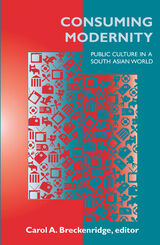 Consuming Modernity: Public Culture in a South Asian World
Carol A. Breckenridge
University of Minnesota Press, 1995 Consuming Modernity illustrates that what is distinctive of any particular society is not the fact of its modernity, but rather its own unique debates about modernity. Behind the embattled arena of culture in India, for example, lie particular social and political interests such as the growing middle class; the entrepreneurs and commercial institutions; and the state. The contributors address the roles of these various intertwined interests in the making of India's public culture, each examining different sites of consumption. The sites they explore include cinema, radio, cricket, restaurants, and tourism. Consuming Modernity also makes clear the differences among public, mass, and popular culture.Contributors include Arjun Appadurai, University of Chicago; Frank F. Conlon, University of Washington; Sara Dickey, Bowdoin College; Paul Greenough, University of Iowa; David Lelyveld, Columbia University; Barbara N. Ramusack, University of Cincinnati; Rosie Thomas, University of Westminster; and Phillip B. Zarrilli, University of Wisconsin, Madison.
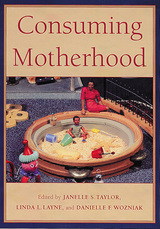 Consuming Motherhood
Taylor, Janelle S
Rutgers University Press, 2004 Consuming Motherhood addresses the provocative question of how motherhood and consumption—as ideologies and as patterns of social action—mutually shape and constitute each other in contemporary North American and European social life. Ideologically, motherhood and consumption are often constructed in opposition to each other, with motherhood standing in as a naturalized social relation that is thought to be uniquely free of the calculating instrumentality that dominates commercial relations. Yet, in social life, motherhood and consumption are inseparable. Whether shopping for children’s clothing or childbirth services, or making decisions about adopting children, becoming a mother (and maternal practice more generally) is deeply influenced by consumption. How can the relationship between motherhood and consumption be revealed, and critically analyzed? Consuming Motherhood brings together a group of sociologists, anthropologists, and religious studies scholars to address this question through carefully grounded ethnographic studies. This insightful book reveals how mothers negotiate the contradictory forces that position them as both immune from and the target of consumerist tendencies in contemporary global society.
 The Consuming Myth: The Work of James Merrill
Stephen Yenser
Harvard University Press, 1987 James Merrill is now widely recognized as one of the essential poets of our time, one of those whose achievement will define postwar American literature. The Consuming Myth is a discerning account of his work that will well serve amateur and initiate alike. Stephen Yenser ranges over all of Merrill’s writing to date, from a precocious book printed when its author was fifteen to his most recent publication, a verse play. He writes about both of the poet’s novels and pays particular attention to the epic poem The Changing Light at Sandover. His close readings shed light on Merrill’s boldly and subtly original techniques, his kinship with Mallarmé, Proust, Yeats, Stevens, and others, and the network of connections among his diverse undertakings.
Yenser suggests that Merrill’s special power springs in part from transactions between evidently opposing perceptions. On the one hand—as the result of some poetic version of what physicists call “pair production”—whatever Merrill looks at hard yields its contraries. All about him, and within him too, he discovers duality and division. On the other hand, he is profoundly aware of the interconnectedness of things, whether they be his life and his art (which we might think of as aspects of his work), or humanity and nature, or good and evil. It is out of quarrels with ourselves that we make poetry, Yeats observed; and it is in striving to accommodate intuitions of both difference and identity that Merrill has fashioned his distinctive manner.
Consuming Religion
Kathryn Lofton
University of Chicago Press, 2017 What are you drawn to like, to watch, or even to binge? What are you free to consume, and what do you become through consumption? These questions of desire and value, Kathryn Lofton argues, are questions for the study of religion. In eleven essays exploring soap and office cubicles, Britney Spears and the Kardashians, corporate culture and Goldman Sachs, Lofton shows the conceptual levers of religion in thinking about social modes of encounter, use, and longing. Wherever we see people articulate their dreams of and for the world, wherever we see those dreams organized into protocols, images, manuals, and contracts, we glimpse what the word “religion” allows us to describe and understand. With great style and analytical acumen, Lofton offers the ultimate guide to religion and consumption in our capitalizing times.
Consuming Religion
Kathryn Lofton
University of Chicago Press, 2017 This is an auto-narrated audiobook edition of this book.
What are you drawn to like, to watch, or even to binge? What are you free to consume, and what do you become through consumption? These questions of desire and value, Kathryn Lofton argues, are questions for the study of religion. In eleven essays exploring soap and office cubicles, Britney Spears and the Kardashians, corporate culture and Goldman Sachs, Lofton shows the conceptual levers of religion in thinking about social modes of encounter, use, and longing. Wherever we see people articulate their dreams of and for the world, wherever we see those dreams organized into protocols, images, manuals, and contracts, we glimpse what the word “religion” allows us to describe and understand.
With great style and analytical acumen, Lofton offers the ultimate guide to religion and consumption in our capitalizing times.
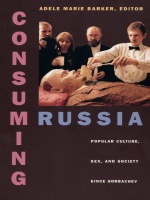 Consuming Russia: Popular Culture, Sex, and Society since Gorbachev
Adele Marie Barker, ed.
Duke University Press, 1999 With the collapse of the Soviet empire in the late 1980s, the Russian social landscape has undergone its most dramatic changes since the Bolshevik Revolution in 1917, turning the once bland and monolithic state-run marketplace into a virtual maze of specialty shops—from sushi bars to discotheques and tattoo parlors. In Consuming Russia editor Adele Marie Barker presents the first book-length volume to explore the sweeping cultural transformation taking place in the new Russia.
The contributors examine how the people of Russia reconcile prerevolutionary elite culture—as well as the communist legacy—with the influx of popular influences from the West to build a society that no longer relies on a single dominant discourse and embraces the multiplicities of both public and private Russian life. Barker brings together Russian and American scholars from anthropology, history, literature, political science, sociology, and cultural studies. These experts fuse theoretical analysis with ethnographic research to analyze the rise of popular culture, covering topics as varied as post-Soviet rave culture, rock music, children and advertising, pyramid schemes, tattooing, pets, and spectator sports. They consider detective novels, anecdotes, issues of feminism and queer sexuality, nostalgia, the Russian cinema, and graffiti. Discussions of pornography, religious cults, and the deployment of Soviet ideological symbols as post-Soviet kitsch also help to demonstrate how the rebuilding of Russia’s political and economic infrastructure has been influenced by its citizens’ cultural production and consumption.
This volume will appeal to those engaged with post-Soviet studies, to anyone interested in the state of Russian society, and to readers more generally involved with the study of popular culture.
Contributors. Adele Marie Barker, Eliot Borenstein, Svetlana Boym, John Bushnell, Nancy Condee, Robert Edelman, Laurie Essig, Julia P. Friedman, Paul W. Goldschmidt, Judith Deutsch Kornblatt, Anna Krylova, Susan Larsen, Catharine Theimer Nepomnyaschy, Theresa Sabonis-Chafee, Tim Scholl, Adam Weiner, Alexei Yurchak, Elizabeth Kristofovich Zelensky
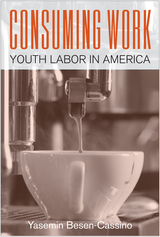 Consuming Work: Youth Labor in America
Yasemin Besen-Cassino
Temple University Press, 2014 Youth labor is an important element in our modern economy, but as students’ consumption habits have changed, so too have their reasons for working. In Consuming Work, Yasemin Besen-Cassino reveals that many American high school and college students work for social reasons, not monetary gain. Most are affluent, suburban, white youth employed in part-time jobs at places like the Coffee Bean so they can be associated with a cool brand, hangout with their friends, and get discounts. Consuming Work offers a fascinating picture of youth at work and how jobs are marketed to these students. Besen-Cassino also shows how the roots of gender and class inequality in the labor force have their beginnings in this critical labor sector. Exploring the social meaning of youth at work, and providing critical insights into labor and the youth workforce, Consuming Work contributes a deeper understanding of the changing nature of American labor.
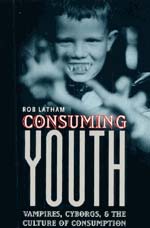 Consuming Youth: Vampires, Cyborgs, and the Culture of Consumption
Robert Latham
University of Chicago Press, 2002 From the novels of Anne Rice to The Lost Boys, from The Terminator to cyberpunk science fiction, vampires and cyborgs have become strikingly visible figures within American popular culture, especially youth culture. In Consuming Youth, Rob Latham explains why, showing how fiction, film, and other media deploy these ambiguous monsters to embody and work through the implications of a capitalist system in which youth both consume and are consumed.
Inspired by Marx's use of the cyborg vampire as a metaphor for the objectification of physical labor in the factory, Latham shows how contemporary images of vampires and cyborgs illuminate the contradictory processes of empowerment and exploitation that characterize the youth-consumer system. While the vampire is a voracious consumer driven by a hunger for perpetual youth, the cyborg has incorporated the machineries of consumption into its own flesh. Powerful fusions of technology and desire, these paired images symbolize the forms of labor and leisure that American society has staked out for contemporary youth.
A startling look at youth in our time, Consuming Youth will interest anyone concerned with film, television, and popular culture.
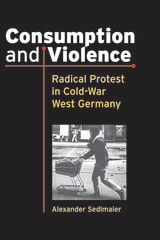 Consumption and Violence: Radical Protest in Cold-War West Germany
Alexander Sedlmaier
University of Michigan Press, 2014 Combining the tools of political, social, cultural, and intellectual history, Consumption and Violence: Radical Protest in Cold-War West Germany explores strategies of legitimization developed by advocates of militant resistance to certain manifestations of consumer capitalism. The book contributes to a more sober evaluation of West German protest movements, not just terrorism, as it refrains from emotional and moral judgments, but takes the protesters’ approaches seriously, which, regarding consumer society, had a rational core. Political violence is not presented as the result of individual shortcomings, but emerges in relation to major societal changes, i.e., the unprecedented growth of consumption. This new perspective sheds important light on violence and radical protest in post-war Germany, as previous books have failed to examine to what extent these forms of resistance should be regarded as reactions to changing regimes of provision. Continuing the recently growing interest in the interdependence of countercultures and consumer society, the focus on violence gives the argument a unique twist, making the book thought-provoking and engaging.
 Consumption Behavior and the Effects of Government Fiscal Policies
Randall P. Mariger
Harvard University Press, 1986 In Consumption Behavior and the Effects of Government Fiscal Policies, Randall Mariger explores how people make decisions about how much to consume and save over their lifetimes. An understanding of these issues illuminates not only individual behavior but important properties of the macro economy as well. The most popular framework for analyzing consumption has been the life-cycle theory. Mariger tests two fundamental, and controversial, assumptions underlying the theory—that there are no planned bequests and that human capital is marketable. To do this, he fits a structural consumption model that incorporates endogenous liquidity constraints (non-marketability of human capital), but no planned bequests, to data on a cross-section of U. S. families. This estimated model, in conjunction with estimates of alternative models, enables him to make inferences about the respective effects of liquidity constraints and social security wealth on consumption. This latter effect yields indirect evidence concerning planned bequests. Mariger also presents direct evidence concerning bequest behavior.
Among his findings are that the model fits the data very well in spite of its tight theoretical structure; that liquidity constraints are prevalent and have important effects on consumption behavior; that planned bequests appear not to be common among families in the lower 99.1% of the wealth distribution; and that families in the upper 0.9% of the wealth distribution appear to plan substantial bequests. Mariger devotes the latter part of his book to studying the implications of his estimated consumption model for the effects of government fiscal policies. More specifically, he simulates the model to infer the effects of government tax/debt policy, as well as those of the social security system, on aggregate savings.
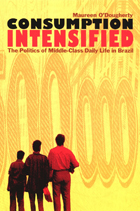 Consumption Intensified: The Politics of Middle-Class Daily Life in Brazil
Maureen O'Dougherty
Duke University Press, 2002 Consumption Intensified examines how self-identified middle class Brazilians in São Paulo redefined their class during Brazil’s economic crisis of 1981–1994. With inflation soaring to an astounding 2700 percent, their consumption practices intensified, not only in relation to the national crisis but also to the expanding global consumer culture. Drawing on her observations of everyday practices and on representations of the middle class in popular culture, anthropologist Maureen O’Dougherty explores both the logic and incoherence of middle- to upper-middle-class Brazilian life.
With the supports of middle-class living threatened—job security, quality education, home ownership, savings, ease of consumption—the means and meaning of “middle class” were thrown into question. The sector thus redefined itself through both class- and race-based claims of moral and cultural superiority and through privileged consumption, a definition the media underscored by continually addressing middle-class Brazilians as consumers—or rather, as consumers denied. In these times, adults became more flexible in employment, and put stakes in their children’s expensive private education. They engaged in elaborate comparison shopping, stockpiling of goods, and financial strategizing. Ongoing desire for distinction and “first- world” modernity prompted these Brazilians to buy foreign goods through contraband, thereby defying state protectionist policy. Discontented with the constraints of the national economy, they welcomed neoliberalism.
By uncovering connections between culture and politics, O’Dougherty complicates understandings of the middle class as a social group and category. Illuminating the intricate relation between identity and local and global consumption, her work will be welcomed by students and scholars in anthropology and Latin American studies, and those interested in consumption, popular culture, politics, and globalization.
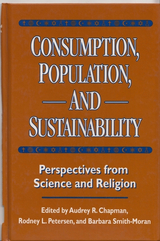 Consumption, Population, and Sustainability: Perspectives From Science And Religion
Edited by Audrey R. Chapman, Rodney L. Petersen, and Barbara Smith-Moran
Island Press, 1999 The combined contributions of science and religion to resolving environmental problems are far greater than each could offer working in isolation. Scientific findings are central to understanding the impact of human populations on the environment, but a more ecologically sustainable future will require radical changes in values, lifestyle choices, and consumption patterns -- a revolution that falls squarely within the domain of the religious community. Consumption, Population, and Sustainability is an outgrowth of a conference sponsored jointly by the Boston Theological Institute and the American Association for the Advancement of Science that brought together more than 250 scientists and people of religious faith to discuss the environmental impact of consumption patterns and population trends, and to consider alternative and more equitable value systems, economic arrangements, and technologies that will be necessary for achieving a more sustainable future. The book: - provides a brief history of the dialogue between science and religion on environmental issues
- outlines potential contributions of the religious community to the debate about global sustainability
- offers a science-based assessment of issues such as carrying capacity, sustainability indicators, and the environmental impacts of consumer-based lifestyles
- considers religious and theological perspectives on consumption and population from a variety of viewpoints including Roman Catholic, Jewish, Greek Orthodox, and Islamic
- examines the ethical and policy dimensions of reorienting today's consumer society to one more focused on values, spiritual growth, and relationships.
Both the scientific and religious communities can make important contributions to understanding and responding to the impact of population growth and consumption patterns on environmental sustainability. This volume represents a significant step in establishing an ongoing dialogue between the communities, and provides a thought-provoking overview of the issues for scientists, theologians, and anyone concerned with the future of global sustainability.
Contact: Mountain Climbing And Environmental Thinking
Jeffrey Mccarthy
University of Nevada Press, 2008 Contact collects new and classic first-person climbing stories from North America’s best-known climbers and writers. Mountain climbers are important but overlooked commentators on the environment, and this collection of alpine adventures demonstrates the relationship between climbers and nature both for a popular audience and for academics working in the field of environmental literature. Contributors include Gary Snyder, John Daniel, Chris McNamara, and Greg Child.
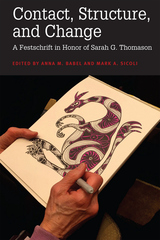 Contact, Structure, and Change: A Festschrift in Honor of Sarah G. Thomason
Edited by Anna M. Babel and Mark A. Sicoli
Michigan Publishing, 2021 Contact, Structure, and Change addresses the classic problem of how and why languages change over time through the lens of two uniquely productive and challenging perspectives: the study of language contact and the study of Indigenous American languages. Each chapter in the volume draws from a distinct theoretical positioning, ranging from documentation and description, to theoretical syntax, to creole languages and sociolinguistics. This volume acts as a Festschrift honoring Sarah G. Thomason, a long-time professor at the University of Michigan, whose career spans the disciplines of historical linguistics, contact linguistics, and Native American studies. This conversation among distinguished scholars who have been influenced by Thomason extends and in some cases refracts the questions her work addresses through a collection of studies that speak to the enduring puzzles of language change.
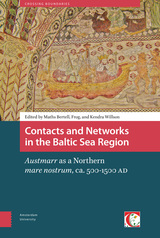 Contacts and Networks in the Baltic Sea Region: Austmarr as a northern mare nostrum, ca. 500-1500 AD
Edited by Maths Bertell, Frog, and Kendra Willson
Amsterdam University Press, 2019 Since prehistoric times, the Baltic Sea has functioned as a northern mare nostrum — a crucial nexus that has shaped the languages, folklore, religions, literature, technology, and identities of the Germanic, Finnic, Sámi, Baltic, and Slavic peoples. This anthology explores the networks among those peoples. The contributions to Contacts and Networks in the Baltic Sea Region: Austmarr as a Northern mare nostrum, ca. 500-1500 ad address different aspects of cultural contacts around and across the Baltic from the perspectives of history, archaeology, linguistics, literary studies, religious studies, and folklore. The introduction offers a general overview of crosscultural contacts in the Baltic Sea region as a framework for contextualizing the volume’s twelve chapters, organized in four sections. The first section concerns geographical conceptions as revealed in Old Norse and in classical texts through place names, terms of direction, and geographical descriptions. The second section discusses the movement of cultural goods and persons in connection with elite mobility, the slave trade, and rune-carving practice. The third section turns to the history of language contacts and influences, using examples of Finnic names in runic inscriptions and Low German loanwords in Finnish. The final section analyzes intercultural connections related to mythology and religion spanning Baltic, Finnic, Germanic, and Sámi cultures. Together these diverse articles present a dynamic picture of this distinctive part of the world.
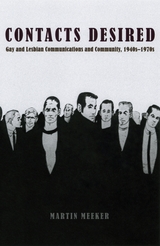 Contacts Desired: Gay and Lesbian Communications and Community, 1940s-1970s
Martin Meeker
University of Chicago Press, 2006 Whether one thinks homosexuals are born or made, they generally are not born into gay families, nor are they socialized to be gay by their peers or schools. How then do people become aware of homosexuality and, in some cases, integrate into gay communities? The making of homosexual identity is the result of a communicative process that entails searching, listening, looking, reading, and finding. Contacts Desired proposes that this communicative process has a history, and it sets out to tell that story.
Martin Meeker here argues that over the course of the twentieth century, a series of important innovations occurred in the networks that linked individuals to a larger social knowledge of homosexuality. He points to three key innovations in particular: the emergence of the homophile movement in the 1950s; the mass media treatments of homosexuals in the late 1950s and early 1960s; and the popularization of do-it-yourself publishing from the late 1940s to the 1970s, which offered bar guides, handmade magazines, and other materials that gay men and lesbians could use to seek one another out. In the process, Meeker unearths a treasure trove of archival materials that reveals how homosexuals played a crucial role in transforming the very structure of communications and urban communities since the postwar era. "Contacts Desired is a valuable and enduring work of scholarship, surely the best book in gay and lesbian history this year."--Gay and Lesbian Review
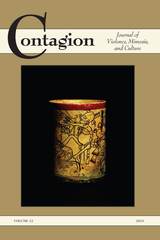 Contagion 22
William A. Johnsen
Michigan State University Press Journals, 2015 IN THIS ISSUE
From the Editor
Articles
René Girard, "Rupture and Literary Creation in Jean-Paul Sartre [1968]"
Andrew McKenna, "Girard and Derrida: Philosophy for Laughs"
Jeremiah L. Alberg, "Mimesis as Scandal: Rousseau and Derrida"
Iwona Janicka, "Queering Girard—De-Freuding Butler: A Theoretical Encounter between Judith Butler’s Gender Performativity and René Girard’s Mimetic Theory"
António Machuco Rosa, "Spencer-Brown, Peirce, Girard, and the Origin of Logic"
Mathias Moosbrugger, "The Future of (Post-)Modernity—Silver Linings or Heart of Darkness?: René Girard’s Apocalyptic Thinking Revisited"
Emanuele Antonelli, "Little Red Riding Hood: Victimage in Folktales and Cinema—A Case Study"
Scott Cowdell, "Sport and the Sacred Victim: René Girard and the Death of Phillip Hughes"
Tadd Ruetenik, "Violence, Sacrifice, and Flesh Eating in Judeo-Christian Tradition"
Nidesh Lawtoo, "Dueling to the End/Ending “The Duel”: Girard avec Conrad"
Markus Wierschem, “'Some witless paraclete beleaguered with all limbo’s clamor': On Violent Contagion and Apocalyptic Logic in Cormac McCarthy’s Outer Dark"
Peter John Barber, "The Role of the Androgyne in the Biblical Subversion of the Mytho-Sacrificial World: Exploring the Early Messianic Lineage as a Series of New Adams"
Dom Elias Carr, "Raymund Schwager, SJ, in Fourvière and Fribourg"
Contagion 23
William A. Johnsen
Michigan State University Press Journals, 2016 IN THIS ISSUE
From the Editor
Articles
René Girard, "Belonging"
Benoit Chantre, "René Girard in France"
Chelsea Jordan King, "Girard Reclaimed: Finding Common Ground between Sarah Coakley and René Girard on Sacrifice"
Per Bjørnar Grande, "Desire in Madame Bovary"
Berry Vorstenbosch, "Derrida, Girard, and the Involvement of Personal Life in Theory"
Hans Abdiel Harmakaputra, "Between Transcendence and Violence: Gianni Vattimo and René Girard on Violence in a Secular Age"
Maud Chia-Rousseau, "Lolita and Mimetic Desire"
Jorge Márquez Muñoz, "Ivan Illich and René Girard: The Dream of Modernity Ends"
Andrea Grazioli, Mattia Di Pierro, "The Contagion Principle versus Rights: The Mob Justice Phenomenon as Anthro-Poietic Struggle"
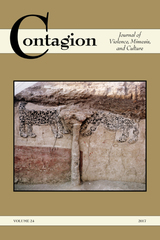 Contagion 24
William A. Johnsen
Michigan State University Press Journals, 2017 In This Issue
From the Editor
Articles
Eric Gans, "Introduction to 'Toward a Triangular Aesthetics'"
Eric Gans, "Toward a Triangular Aesthetics"
Christopher J. Knüsel and Bonnie Glencross, "Çatalhöyük, Archaeology, Violence"
Bruce A. Stevens and Scott Cowdell, "Mimetic Euphemism and Mythology: Group Therapy, Scapegoating, and the Displacement of Disquiet"
Desiderio Parrilla Martínez, "Mimesis, Ritual Sacrifice, and Ceremony of Proskynesis"
Brian D. Robinette, "Contemplative Practice and the Therapy of Mimetic Desire"
Wolfgang Palaver, "War and Politics: Clausewitz and Schmitt in the Light of Girard’s Mimetic Theory"
Anthony W. Bartlett, "After Sacrifice Ontology: The Shared Revelatory Dynamic of Heidegger and Girard"
Paul Lynch, "Rescuing Rhetoric: Kenneth Burke, René Girard, and Forms of Conversion"
Anthony R. Lusvardi, SJ, "Girard and the 'Sacrifice of the Mass': Mimetic Theory and Eucharistic Theology"
Chris Haw, "Human Evolution and the Single Victim Mechanism: Locating Girard’s Hominization Hypothesis through Literature Survey"
Joshua Hren, "Acquisitive Imitation and the Gift-Economy: Escaping Reciprocity in J. R. R. Tolkien’s The Hobbit"
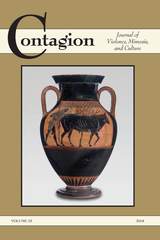 Contagion 25
William A. Johnsen
Michigan State University Press Journals, 2018 IN THIS ISSUE
Editor's Note
Articles
Maria Stella Barberi, “'The enemy is the external form of our own question': Four Notes on the Mimetic Roots of Political Identities"
Matthew J. Packer, “'More American than America': Mimetic Theory and the East Asia–United States Rivalries"
Nathan W. O’Halloran, SJ, "The Pre-Human Biological and Cultural Transmission of the Effects of Originating Sin"
Ralph Hage, "Protecting Identity: Violence and Its Representations in France, 1815–1830"
Otto von Busch, "Mimesis, Clothed in Violence"
Hanna Mäkelä, "The Reception of René Girard’s Thought in Finland and Scandinavia: From the 1980s to the Present"
Michael S. Koppisch, "Mohsin Hamid’s The Reluctant Fundamentalist: Mimetic Desire in a Geopolitical Context"
Ángel J. Barahona Plaza, "Spain (1975/2017) from a Girardian Perspective"
Nidesh Lawtoo, "Violence and the Mimetic Unconscious (Part One): The Cathartic Hypothesis: Aristotle, Freud, Girard"
Giuseppe Fornari, "Ecstatico-Objectual Mediation: A New Approach to the Enigma of Human Culture"
Brian Harding, "Tauromachia as Counter-Sacrificial Ritual: Insights from Mimetic Theory"
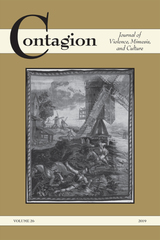 Contagion 26
William A. Johnsen
Michigan State University Press Journals, 2019 In This Issue
From the Editor
Special Section: René Girard and Psychoanalysis
Pierpaolo Antonello and Alessandra Diazzi, "Introduction: Intersubjectivity, Desire, and Mimetic Theory: René Girard and Psychoanalysis"
Scott R. Garrels and Joy M. Bustrum, "From Mimetic Rivalry to Mutual Recognition: Girardian Theory and Contemporary Psychoanalysis"
Kathryn M. Frost, "Exploring Girard’s Concerns about Human Proximity: Attachment and Mimetic Theory in Conversation"
Martha J. Reineke, "The Broken Thread: Cervantes, Don Quijote, and War Trauma"
Alessandra Diazzi, "Notes on Elvio Fachinelli and René Girard: The Psychoanalysis of Dissent Meets Mimetic Theory"
Nidesh Lawtoo, "Violence and the Mimetic Unconscious (Part Two): The Contagious Hypothesis: Plato, Affect, Mirror Neurons"
Iwona Janicka, "New Way to Suffer: Girard, Rancière, and Political Subjectification"
Elisabetta Brighi, "Sentiments of Resentment: Desiring Others, Desiring Justice"
Articles
Cesáreo Bandera and Adam Ericksen, "René Girard, Friendship, and Battling to the End: A Conversation with Cesáreo Bandera"
John Choo, "A Mimetic Theoretical Approach to Multiculturalism: Normalizing the Singaporean Exception"
Lyle Enright, "“Divine but Not Sacred”: A Girardian Answer to Agamben’s The Kingdom and the Glory"
Pierre Santoni, "The French Revolution, Archives, and Mimetic Theory"
Nathan Lefler, "Two Kinds of Unanimity: St. Benedict, René Girard, and Modern Democratic Governance"
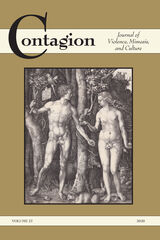 Contagion 27
William A. Johnsen
Michigan State University Press Journals, 2020 In This Issue
William A. Johnsen, From the Editor
Paul Dumouchel, "After-Truth"
Duncan John Morrow, "No End of (Mimetic) Crises? Reflections on Mimetic Escalation, Order, and the Nature of Peacemaking in the Shadow of Brexit"
Wiel Eggen, "A Monadic Prelate without Divine Rival: On Girard’s Bifurcated Focus"
D. Vincent Riordan, "The Stones That the Builders Rejected: The Scapegoat Mechanism and Evolutionary Psychiatry"
Stéphanie Hage, "Joyous Sacrifice: On the Scapegoat as Voluntary Victim in 'Song of Myself' and 'Howl'"
Paul L. Lynch, "Recovering Rhetoric: René Girard as Theorhetor"
Ralph Hage, "Necessary Victims: William Shakespeare’s Tragic Ethics of Identity"
Norrec Nieh, “'Approved Flesh': The Sacrificial Foundations of Modernity in Peter Shaffer’s Equus"
Jordan Joseph Wale, "The Satanic and the Theomimetic: Differentiating 'Sacrifice' in René Girard and Gregory the Great"
Ryan Gerard Duns, "Desire and Conversion in The Death of Ivan Ilyich"
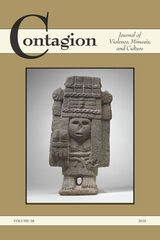 Contagion 28
William A. Johnsen
Michigan State University Press Journals, 2021 In This Issue
From the Editor
Julia Robinson Moore, "The Frontier of Race in Mimetic Theory: American Lynchings and Racial Violence"
Anders Olsson, "Green-Eye and Mimetic Desire in Strindberg"
James N. F. Alison, "René Girard’s Observations on 'Homosexuality' in His Major Writings: Some Critical Clarifications"
Margherita Geniale, "Sacrifice and Evolutionary Incentive: Epigenetic Applications of the Ritual"
Paul Dumouchel, "Desiring Machines: Machines That Are Desired and Machines That Desire"
Colby Dickinson, "Locating Love Amid the Violence: Girard, Vattimo, and the Radicality of Love"
Hyeon Joon Shin, "A Girardian Interpretation of the Market Mechanism in Neo-Classical Economics"
David García-Ramos Gallego and David Atienza de Frutos, "'Pacific' Ethno-National Identities: Victims, Persecutors, and the Quest for Identity"
Duncan Reyburn, "Kindly Scandal: A Mimetic Theory of Humor"
Simeon Theojaya, "Strangers in Paradise: Reenacting Proximity in Time of Pandemic"
Shakir Muhammad Usman, "Yazidis: A Tale of a Lost, Found, and Misunderstood Legacy in the Light of Mimetic Theory"
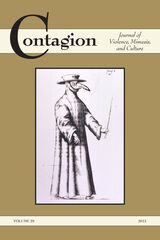 Contagion 29
William A. Johnsen
Michigan State University Press Journals, 2022 Volume 29 Articles
The Philosophic Foundations of Mimetic Theory and Cognitive Science: (Including Artificial Intelligence)
Jean-Pierre Dupuy
Cancel Culture and the Trope of the Scapegoat: A Girardian Defense of the Importance of Contemplative Reading
Joakim Wrethed
Faulkner’s Novels Past and Present
Andrew J. McKenna
Killing Our Way Out of Violence: Engaging Wrangham’s The Goodness Paradox
Chris Haw
The Denial of Peter: René Girard, Mimetic Desire, and Conversion
William E. Cain
The Touching Test: AI and the Future of Human Intimacy
Martha J. Reineke
Theory of the Apophantic Judgment According to René Girard
Desiderio Parrilla Martínez
A Hypothesis on the Origin of Trade: The Exchange of Lives for Sacrifice and Sex
Pablo Díaz-Morlán
Mensonge Mélodramatique: Triangular Desire in Sense and Sensibility
Matthew Taylor
Collective Violence and Birthday Parties: A Girardian Analysis of the Piñata
Dominic Pigneri
The Reception of René Girard’s Works in China
Xianghui Liao
 Contagion 30
William A. Johnsen
Michigan State University Press Journals, 2023 Editor’s Introduction
The View from Pȏle Nord: Sartre, Beauvoir, and Girard on Mimesis, Embodiment, and Desire
Martha J. Reineke
Rebellion and the Sacred: Sacrifice in Camus’s Rebel
Brian Harding
“Even now, now, very now”: Mimesis’s and Imitation’s Temporalities
João Cezar de Castro Rocha
Sacrificial “As-If” and Avuncular Hilarity: Living by Méconnaissance
Wiel Eggen
The Mimetic Sacred: Girard and Bataille Transcending Desire
Jeffrey D. McNeil
Sophie, Greta, Cuiyuan, and Feminist Desire: Stories by Ding Ling, Alice Munro, and Eileen Chang
Yuhui Bao and Ian Dennis
Men Becoming Gods in “Style”: Gioia and Girard on Divinized Desire
Joshua Hren
Escalation to Academic Extremes? Revisiting Academic Rivalry in the Möhler/Baur Debate
Grant Kaplan
The Myrmidon vs. the Abbess: How Contrasting Mechanisms to Resolve Mimetic Contagion in Shakespeare’s Troilus and Cressida and Comedy of Errors Stand as a Warning Against the Rejection of Christianity in Favor of Resurgent Homeric Ethos
Brian P. Quaranta
Séduire, C’est Tout: Francis Bacon, Lucian Freud, and the Struggle of Influence
Paul Sharma
Imitation, Violence, and Exchange: Girard and Mauss
Per Bjørnar Grande
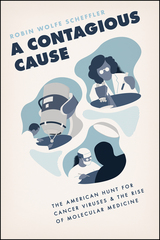 A Contagious Cause: The American Hunt for Cancer Viruses and the Rise of Molecular Medicine
Robin Wolfe Scheffler
University of Chicago Press, 2019 Is cancer a contagious disease? In the late nineteenth century this idea, and attending efforts to identify a cancer “germ,” inspired fear and ignited controversy. Yet speculation that cancer might be contagious also contained a kernel of hope that the strategies used against infectious diseases, especially vaccination, might be able to subdue this dread disease. Today, nearly one in six cancers are thought to have an infectious cause, but the path to that understanding was twisting and turbulent.
A Contagious Cause is the first book to trace the century-long hunt for a human cancer virus in America, an effort whose scale exceeded that of the Human Genome Project. The government’s campaign merged the worlds of molecular biology, public health, and military planning in the name of translating laboratory discoveries into useful medical therapies. However, its expansion into biomedical research sparked fierce conflict. Many biologists dismissed the suggestion that research should be planned and the idea of curing cancer by a vaccine or any other means as unrealistic, if not dangerous. Although the American hunt was ultimately fruitless, this effort nonetheless profoundly shaped our understanding of life at its most fundamental levels. A Contagious Cause links laboratory and legislature as has rarely been done before, creating a new chapter in the histories of science and American politics.
 Contagious: Cultures, Carriers, and the Outbreak Narrative
Priscilla Wald
Duke University Press, 2008 How should we understand the fear and fascination elicited by the accounts of communicable disease outbreaks that proliferated, following the emergence of HIV, in scientific publications and the mainstream media? The repetition of particular characters, images, and story lines—of Patients Zero and superspreaders, hot zones and tenacious microbes—produced a formulaic narrative as they circulated through the media and were amplified in popular fiction and film. The “outbreak narrative” begins with the identification of an emerging infection, follows it through the global networks of contact and contagion, and ends with the epidemiological work that contains it. Priscilla Wald argues that we need to understand the appeal and persistence of the outbreak narrative because the stories we tell about disease emergence have consequences. As they disseminate information, they affect survival rates and contagion routes. They upset economies. They promote or mitigate the stigmatizing of individuals, groups, locales, behaviors, and lifestyles. Wald traces how changing ideas about disease emergence and social interaction coalesced in the outbreak narrative. She returns to the early years of microbiology—to the identification of microbes and “Typhoid Mary,” the first known healthy human carrier of typhoid in the United States—to highlight the intertwined production of sociological theories of group formation (“social contagion”) and medical theories of bacteriological infection at the turn of the twentieth century. Following the evolution of these ideas, Wald shows how they were affected by—or reflected in—the advent of virology, Cold War ideas about “alien” infiltration, science-fiction stories of brainwashing and body snatchers, and the HIV/AIDS pandemic. Contagious is a cautionary tale about how the stories we tell circumscribe our thinking about global health and human interactions as the world imagines—or refuses to imagine—the next Great Plague.
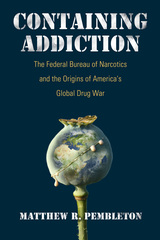 Containing Addiction: The Federal Bureau of Narcotics and the Origins of America's Global Drug War
Matthew R. Pembleton
University of Massachusetts Press, 2017 The story of America's “War on Drugs” usually begins with Richard Nixon or Ronald Reagan. In Containing Addiction, Matthew R. Pembleton argues that its origins instead lie in the years following World War II, when the Federal Bureau of Narcotics—the country's first drug control agency, established in 1930—began to depict drug control as a paramilitary conflict and
sent agents abroad to disrupt the flow of drugs to American shores.
U.S. policymakers had long viewed addiction and organized crime as profound domestic and trans-national threats. Yet World War II presented new opportunities to implement drug control on a global scale. Skeptical of public health efforts to address demand, the Federal Bureau of Narcotics believed that reducing the global supply of drugs was the only way to contain the spread of addiction. In effect, America applied a foreign policy solution to a domestic social crisis, demonstrating how consistently policymakers have assumed that security at home can only be achieved through hegemony abroad. The result is a drug war that persists into the present day.
 Containing Health Care Costs in Japan
Naoki Ikegami and John Creighton Campbell, Editors
University of Michigan Press, 1996 The Japanese health care system provides universal coverage to a healthy but aging population. Its costs are among the lowest in the world and have remained nearly constant as a share of the economy for more than a decade. Americans concerned about runaway medical spending need to know about the successes that Japan has experienced and the problems the country has encountered in its effort to control costs while maintaining quality of care. Offered here is an analysis of the key issues of cost-containment by specialists followed by reactions from some of America's best-known experts on health care delivery and finance. Topics include the macro-and microeconomics of health care, technology and costs, institutions and costs, attitudinal and behavioral aspects, and the politics of health care. This collection provides an authoritative study of successful cost-containment in the Japanese health care system---a chronicle of success that is neither a statistical illusion nor a result of sociocultural factors. Detailed here is information on the key mechanism of cost constraint: a fee schedule that covers virtually all medical services and rewards inexpensive services while making expensive services unprofitable. This system has resulted in the provision of quality health care to the entire population at roughly half the cost of American health care. Is it a single-payer system? Would the United States have to introduce a dramatically altered health care structure to benefit from the Japanese experience? No. Japan relies mainly on fee-for-service medicine financed by multiple insurers---a system familiar to Americans and one from which many lessons may be learned. Based on conferences held in Washington, D.C., and Izu, Japan, this volume collects original chapters on the overall cost structure, how the negotiated mandatory fee schedule works, specific mechanisms for cost control, the politics of health care financing, and the impact of cost cutting on quality, among other topics. These pathbreaking studies will be a significant resource for policymakers and scholars interested in comparative health care systems as well as those interested in health care reform in the United States.
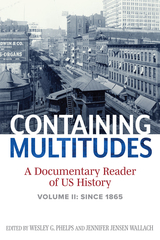 Containing Multitudes: A Documentary Reader of US History since 1865
Wesley Phelps
University of Arkansas Press, 2022 A collection of interpreted primary source documents designed to complement textbooks used in US history survey courses, Containing Multitudes: A Documentary Reader of the American Past is a collaboration with the Department of History at the University of North Texas that supports the learning experience by providing a curated selection of letters, literature, journalism, art, and other documents, with analysis and instructional support from the university’s teacher-historians.
This two-volume work includes nearly two hundred primary documents and images that narrate many aspects of United States history from the period before European contact and colonization through the twenty-first century. The sources assembled capture the voices of Americans of varied age, race, ethnicity, and gender, historical actors who represent not only diverse subject positions but also a wide variety of belief systems and varied circumstances. Combined with interpretive headnotes and discussion questions, the layered approaches of the contributors deliver an unusually complex and rich portrait of the American past while also offering readers glimpses of the many dimensions of the historians’ craft.
Containing Multitudes: A Documentary Reader of US History to 1877
Wesley Phelps
University of Arkansas Press, 2022 Containing Multitudes: A Documentary Reader of US History provides nearly two hundred primary documents that narrate aspects of US history from the period before European contact through the twenty-first century. Presented in two volumes, this curated selection—including letters, literature, journalism, and visual art—provides access to historical voices from a wide range of subject positions and belief systems. Designed for US history survey courses, this reader provides both analysis and instructional support in the form of brief introductory essays and questions to promote student discussion and reflection. Containing Multitudes not only conveys a rich and complex portrait of the American past but also offers readers valuable insight into the many dimensions of the historian’s craft.
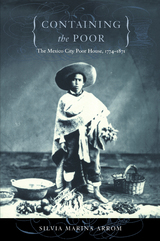 Containing the Poor: The Mexico City Poor House, 1774-1871
Silvia Marina Arrom
Duke University Press, 2001 In 1774 Mexico City leaders created the Mexico City Poor House—the centerpiece of a bold experiment intended to eliminate poverty and impose a new work ethic on former beggars by establishing a forcible internment policy for some and putting others to work. In Containing the Poor Silvia Marina Arrom tells the saga of this ill-fated plan, showing how the asylum functioned primarily to educate white orphans instead of suppressing mendicancy and exerting control over the multiracial community for whom it was designed.
For a nation that had traditionally regarded the needy as having the undisputed right to receive alms and whose affluent citizens felt duty-bound to dispense them, the experiment was doomed from the start, explains Arrom. She uses deep archival research to reveal that—much to policymakers’ dismay—the Poor House became an orphanage largely because the government had underestimated the embeddedness of this moral economy of begging. While tracing the course of an eventful century that also saw colonialism give way to republicanism in Mexico, Arrom links the Poor House’s transformation with other societal factors as well, such as Mexican women’s increasing impact on social welfare policies.
With poverty, begging, and homelessness still rampant in much of Latin America today, this study of changing approaches to social welfare will be particularly valuable to student and scholars of Mexican and Latin American society and history, as well as those engaged in the study of social and welfare policy.
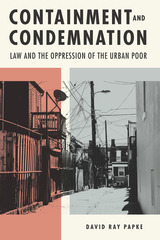 Containment and Condemnation: Law and the Oppression of the Urban Poor
David Ray Papke
Michigan State University Press, 2019 The populations of American cities have always included poor people, but the predicament of the urban poor has worsened over time. Their social capital, that is, the connections and organizations that traditionally enabled them to form communities, has shredded. Economically comfortable Americans have come to increasingly care less about the plight of the urban poor and to think of them in terms of “us and them.” Considered lazy paupers in the early nineteenth century, the urban poor came to be seen as a violent criminal “underclass” by the end of the twentieth. Living primarily in the nation’s deindustrialized inner cities and making up nearly 15 percent of the population, today’s urban poor are oppressed people living in the midst of American affluence. This book examines how law works for, against, and with regard to the urban poor, with “law” being understood broadly to include not only laws but also legal proceedings and institutions. Law is too complicated and variable to be seen as simply a club used to beat down the urban poor, but it does work largely in negative ways for them. An essential text for both law students and those drawn to areas of social justice, Containment and Condemnation shows how law helps create, expand, and perpetuate contemporary urban poverty.
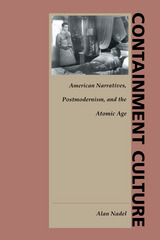 Containment Culture: American Narratives, Postmodernism, and the Atomic Age
Alan Nadel
Duke University Press, 1995 Alan Nadel provides a unique analysis of the rise of American postmodernism by viewing it as a breakdown in Cold War cultural narratives of containment. These narratives, which embodied an American postwar foreign policy charged with checking the spread of Communism, also operated, Nadel argues, within a wide spectrum of cultural life in the United States to contain atomic secrets, sexual license, gender roles, nuclear energy, and artistic expression. Because these narratives were deployed in films, books, and magazines at a time when American culture was for the first time able to dominate global entertainment and capitalize on global production, containment became one of the most widely disseminated and highly privileged national narratives in history.
Examining a broad sweep of American culture, from the work of George Kennan to Playboy Magazine, from the movies of Doris Day and Walt Disney to those of Cecil B. DeMille and Alfred Hitchcock, from James Bond to Holden Caulfield, Nadel discloses the remarkable pervasiveness of the containment narrative. Drawing subtly on insights provided by contemporary theorists, including Baudrillard, Foucault, Jameson, Sedgwick, Certeau, and Hayden White, he situates the rhetoric of the Cold War within a gendered narrative powered by the unspoken potency of the atom. He then traces the breakdown of this discourse of containment through such events as the Bay of Pigs invasion and the Free Speech Movement at Berkeley, and ties its collapse to the onset of American postmodernism, typified by works such as Catch–22 and The Man Who Shot Liberty Valence.
An important work of cultural criticism, Containment Culture links atomic power with postmodernism and postwar politics, and shows how a multifarious national policy can become part of a nation’s cultural agenda and a source of meaning for its citizenry.
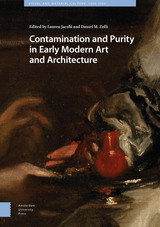 Contamination and Purity in Early Modern Art and Architecture
Lauren Jacobi
Amsterdam University Press, 2021 The concepts of purity and contamination preoccupied early modern Europeans fundamentally, structuring virtually every aspect of their lives, not least how they created and experienced works of art and the built environment. In an era that saw a great number of objects and people in motion, the meteoric rise of new artistic and building technologies, and religious upheaval exert new pressures on art and its institutions, anxieties about the pure and the contaminated – distinctions between the clean and unclean, sameness and difference, self and other, organization and its absence – took on heightened importance. In this series of geographically and methodologically wide-ranging essays, thirteen leading historians of art and architecture grapple with the complex ways that early modern actors negotiated these concerns, covering topics as diverse as Michelangelo’s unfinished sculptures, Venetian plague hospitals, Spanish-Muslim tapestries, and emergency currency. The resulting volume offers surprising new insights into the period and into the modern disciplinary routines of art and architectural history.
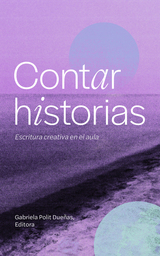 Contar historias: Escritura creativa en el aula
Gabriela Polit Dueñas, Editora
University of Texas Press, 2023 A collection of essays and stories written in Spanish by students for students.
Contar Historias: Escritura creativa en el aula es una colección de ensayos e historias de no ficción escritas por estudiantes de grado y pregrado que tomaron cursos y/o asistieron a talleres de escritura impartidos el Departamento de Español y Portugués en la Universidad de Texas en Austin. El libro es una muestra del trabajo creativo de estudiantes que hablan español en casa pero que nunca escribieron un texto creativo en esta lengua; estudiantes para quienes el español es su segunda, tercera e incluso cuarta lengua, y estudiantes para quienes es su lengua materna. La diversidad de voces y la amplia raigambre cultural, lingüística y geográfica de la que emergen se juntan en este volumen que refleja la multiplicidad de maneras en que el español apela a las nuevas generaciones de estudiantes, no solo en UT sino en todo el país.
Contar historias: Escritura creativa en el aula (Telling Stories: Creative Writing in the Classroom) is a remarkable collection of topical essays and poignant stories written by undergraduate and graduate students who took courses and/or writing workshops offered by the Spanish Creative Writing Initiative in the Department of Spanish and Portuguese at the University of Texas at Austin. The book showcases an abundance of amazingly creative work and includes heritage speakers who have never before written a creative work in Spanish; students for whom Spanish is a second, third, and even fourth language; and native speakers. The diversity of voices from an array of cultural, linguistic, and geographical backgrounds collected in this volume reflects the multiplicity of ways in which Spanish appeals to students, not just at UT, but everywhere. The stories include—but are not limited to—intimate tales of attending college; personal testimonials on the effects of climate change, experiences navigating the US health system, and accounts of many beautiful memories from childhood. They reveal the moving and diverse ways of communicating in Spanish and are themselves potent arguments for the importance of using creativity, working collaboratively, and telling stories in the classroom.
 Contemplating Music: Challenges to Musicology
Joseph Kerman
Harvard University Press, 1985 With this book, Joseph Kerman establishes the place of music study firmly in the mainstream of modern intellectual history. He treats not only the study of the history of Western art music—with which musicology is traditionally equated—but also sometimes vexed relations between music history and other fields: music theory and analysis, ethnomusicology, and music criticism.
Kerman sees and applauds a change in the study of music toward a critical orientation. As examples, he presents fascinating vignettes of Bach research in the 1950s and Beethoven studies in the 1960s. He sketches the work of prominent scholars and theorists: Thurston Dart, Charles Rosen, Leonard B. Meyer, Heinrich Schenker, Milton Babbit, and many others. And he comments on such various subjects as the amazing absorption of Stephen Foster’s songs into the canons of “black” music, the new intensity of Verdi research, controversies about performance on historical instruments, and the merits and demerits of The New Grove Dictionary of Music and Musicians.
Contemplating Music is filled with wisdom and trenchant commentary. It will spark controversy among musicologists of all stripes and will give many musicians and amateurs an entirely new perspective on the world of music.
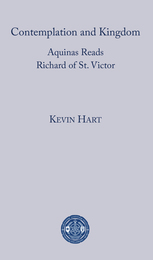 Contemplation and Kingdom
Kevin Hart
St. Augustine's Press, 2020 This book rises out of Dr. Kevin Hart’s 2020 Aquinas Lecture at the University of Dallas. Contemplation and Kingdom seeks to retrieve aspects of Richard of St. Victor's treatment of contemplation, principally in De arca mystica, and does so by weighing Thomas Aquinas's reservations about this treatment in the Summa theologiæ. Is Aquinas right to object, as Augustine does in De Doctrina Christiana, that our contemplation should go directly to God and not be stalled in the consideration of the natural world? What relation is there between Jesus's preaching of the Kingdom and the contemplation of God? Is the contemplative life consistent with Jesus's injunction to love both God and neighbor? These are the principal questions considered in the book.
This book is vintage Hart, erudite, well written, a treat for a wide readership. It is an example of how theology ought to be done, with a clarity and depth unsurpassed in today’s scholarly world. Its blend of anglo-saxon elegance and continental insights will be praised in the Academy and outside. – Jean-Yves Lacoste, Clare Hall, Cambridge
In the light of great contemporary interest in contemplation, this brilliant and erudite work is a stunning example. The focus on Richard of St. Victor and Thomas Aquinas is especially appropriate. Theologians and philosophers will be especially thankful for Kevin Hart’s work on the actuality of contemplation. – David Tracy, University of Chicago
Kevin Hart holds the Edwin B. Kyle Chair of Christian Theology at the University of Virginia where he is also Courtesy Professor of English and Courtesy Professor of French. In 2020 he was awarded the Aquinas Medal by the Department of Philosophy at the University of Dallas. His 2020 Étienne Gilson Lectures, given at L'Institut Catholique de Paris, offer a fresh approach to the theology of the imago dei in Augustine. His 2020 Gifford Lectures, given at Glasgow University, examine various questions to do with the theology of contemplation and propose a new "hermeneutics of contemplation." His most recent scholarly publications include Kingdoms of God and Poetry and Revelation, and his most recent collections of poetry are Wild Track: New and Selected Poems and Barefoot.
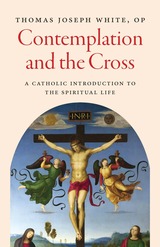 Contemplation and the Cross: A Catholic Introduction to the Spiritual Life
Thomas Joseph White, OP
Catholic University of America Press, 2025 What are the aims of the Christian spiritual life and how can we deepen our life in Christ? What is the Catholic form of the spiritual life and what are its causes? This book serves as an introduction to Catholic spirituality by examining the mystery of Jesus Christ- His Crucifixion, and His Resurrection- as the center of our spiritual life. The central argument of the book is that the life, death, and resurrection of Jesus present us with the form or essence of the Christian spiritual life and orient us toward union with the Trinity as the final end or aim of human existence. The means of union with God through sacraments, the interior life of the theological virtues (faith, hope, and charity), and the virtue of religion are considered as vehicles by which we rejoin God in Christ. The effects of the Cross are considered in our life by a study of the spiritual and corporal works of mercy. The Virgin Mary is considered as a model of the spiritual life. What results is a Christ-centered spirituality that is sacramental and Marian, and that depicts the life of the Church living in contemplative charity as the basic expression of Catholic spirituality.
 The Contemplative Self after Michel Henry: A Phenomenological Theology
Joseph Rivera
University of Notre Dame Press, 2015 In The Contemplative Self after Michel Henry: A Phenomenological Theology, Joseph Rivera provides a close and critical reconstruction of the philosophical anthropology of Michel Henry (1922-2002) while also addressing the question of how theology contributes to Henry’s phenomenology. In conversation with other French figures such as Derrida, Marion, Lacoste, and Barbaras, Rivera undertakes a global thematic study of Henry’s work. He shows how, for Henry, the theological debate is shifted onto a phenomenological problem, with a coincident will to pursue the epistemological efforts of Husserl and Heidegger.
The chapters tackle some of the most pressing debates in contemporary Continental philosophy, such as the “modern ego,” the nature and experience of temporality, and the constitution of the body and otherness, and how a theological discourse may illumine those anthropological structures. The book expands on the modern narrative of the self from Descartes to Nietzsche, opens up the particular lines of inquiry Henry advances in dialogue with those figures and phenomenology in particular, and highlights the surprising theological turns in Henry’s late work on Christianity.
Because Henry’s work is difficult, it is often misunderstood; Rivera’s own vision of the self, one that is shaped by Henry but not in full agreement with him, advances insights internal to Henry but also brings into sharp focus many problematic points in Henry’s phenomenological theology. An array of classical theological voices appear in the final chapters, such as St. Augustine, Tertullian, Irenaeus, Pseudo-Dionysius, and Gregory of Nyssa, all of whom are set in dialogue with Henry. A fresh and creative articulation of contemplation and selfhood, the volume is a valuable addition to the continuing conversation that seeks to build bridges between phenomenology and theology.
"English-language scholarship on Michel Henry is growing rapidly but still nascent. Joseph Rivera's book is well positioned to be one of the early classics in the field; it does not merely introduce Henry but builds on what comparatively little has been written about his work. Rivera uses his introduction to Henry's thinking as a platform for his own truly critical and constructive project." —Jeffrey Allan Hanson, Faculty of Theology and Philosophy, Australian Catholic University
"The Contemplative Self after Michel Henry presents an original and creative approach to the interpretation of the issue of what theology contributes to Michel Henry's phenomenology. The authors Joseph Rivera calls upon, such as Jean-Luc Marion, Jean-Yves Lacoste, Jean-Louis Chrétien, Derrida, MacIntyre, Ricoeur, Didier Franck, Husserl, and Merleau-Ponty, are intelligently evoked and quoted. Rivera looks to anthropological questions since, for Henry, theological questioning brings about consequences in terms of corporeality and ethics. Rivera's reading is both stimulating and true to Henry's work." —Jean Leclercq, Université Catholique de Louvain
"Far more than a summary and synthesis, Joseph Rivera conducts a sustained dialogue and impassioned debate with Michel Henry, along with other major figures in phenomenology, in an effort to construct a rich account of the contemplative self that moves beyond the long shadow cast by Descartes—one that gives primacy to embodiment, worldliness, and eschatological hope. Equally at home with philosophical and theological sources, and indebted to Augustine in its constructive aims, this work marks the impressive debut of a scholar whose instincts are to retrieve and freshly reimagine the seminal insights of the Christian tradition." —Brian D. Robinette, Boston College
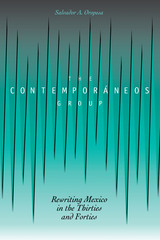 The Contemporáneos Group: Rewriting Mexico in the Thirties and Forties
By Salvador A. Oropesa
University of Texas Press, 2003 In the years following the Mexican Revolution, a nationalist and masculinist image of Mexico emerged through the novels of the Revolution, the murals of Diego Rivera, and the movies of Golden Age cinema. Challenging this image were the Contemporáneos, a group of writers whose status as outsiders (sophisticated urbanites, gay men, women) gave them not just a different perspective, but a different gaze, a new way of viewing the diverse Mexicos that exist within Mexican society. In this book, Salvador Oropesa offers original readings of the works of five Contemporáneos—Salvador Novo, Xavier Villaurrutia, Agustín Lazo, Guadalupe Marín, and Jorge Cuesta—and their efforts to create a Mexican literature that was international, attuned to the realities of modern Mexico, and flexible enough to speak to the masses as well as the elites. Oropesa discusses Novo and Villaurrutia in relation to neo-baroque literature and satiric poetry, showing how these inherently subversive genres provided the means of expressing difference and otherness that they needed as gay men. He explores the theatrical works of Lazo, Villaurrutia's partner, who offered new representations of the closet and of Mexican history from an emerging middle-class viewpoint. Oropesa also looks at women's participation in the Contemporáneos through Guadalupe Marín, the sometime wife of Diego Rivera and Jorge Cuesta, whose novels present women's struggles to have a view and a voice of their own. He concludes the book with Novo's self-transformation from intellectual into celebrity, which fulfilled the Contemporáneos' desire to merge high and popular culture and create a space where those on the margins could move to the center.
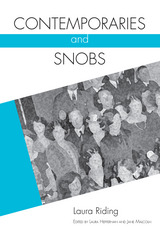 Contemporaries and Snobs
Laura Riding
University of Alabama Press, 2014 This new edition of Contemporaries and Snobs, a landmark collection of essays by Laura Riding, offers a counter-history of high modernist poetics.
Laura Riding’s Contemporaries and Snobs (1928) was the first volume of essays to engage critically with high modernist poetics from the position of the outsider. For readers today, it offers a compelling account—by turns personal, by turns historical—of how the institutionalization of modernism denuded experimental poetry. Most importantly, Contemporaries and Snobs offers a counter-history of the idiosyncratic, of what the institution of modernism left (and leaves) behind. With Gertrude Stein as its figurehead, the book champions the noncanonical, the “barbaric,” and the undertheorized.
Riding’s nuanced defense of a poetics of the person in Contemporaries and Snobs represents a forgotten but essential first attempt to identify and foster what is now a well-defined poetic lineage that leads from Stein to the contemporary experimental avant-garde. In these essays, Riding takes her readers on a remarkably thorough tour through the critical scene of the 1920s. Among other influential treatises, she considers T. S. Eliot’s The Sacred Wood and his editorial essays in The Criterion, Allen Tate’s “Poetry and the Absolute,” John Crowe Ransom’s essays on the modernist poet, Edgell Rickword’s essays in The Calendar of Modern Letters, and Herbert Read’s posthumous publication of T. E. Hulme’s essays. All of this criticism, Riding notes, gave modern poets a sheen of seriousness and professionalism, but was it good for poetry? Her decisive answer is “no.” This new edition includes an introduction by Laura Heffernan and Jane Malcolm that makes legible the many connections between Contemporaries and Snobs and the critical debates and poetic experiments of the 1920s, as well as explanatory notes, a chronological bibliography of Riding’s work, and an index of proper names.
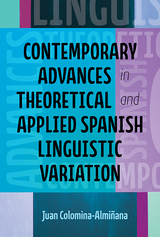 Contemporary Advances in Theoretical and Applied Spanish Linguistic Variation
Juan J. Colomina-Almiñana
Ohio State University Press, 2017 Contemporary Advances in Theoretical and Applied Spanish Linguistic Variation by Juan J. Colomina-Almiñana, reframes the understanding of language variation and change as an intimate interplay between both linguistic features and social factors always occurring in unison in the same historical process. Its ten chapters, divided into four parts, provide both a synchronic and a diachronic view of Hispanic sociolinguistics, focusing not only on the historical development of Spanish as a Romance language, but also analyzing certain idiosyncratic elements of non-standard Spanish varieties across multiple regions, nations, and diasporas. In addition, the volume offers an enchronic perspective of this phenomenon by analyzing how certain sustained cultural practices may drive concrete linguistic developments.
This volume makes three major contributions to Hispanic sociolinguistics. First, it covers variation in less commonly studied varieties, which are new areas of interest in a broader world where certain minorities and their languages are crucial. Second, it offers recent and innovative approaches to variation coming from formal theories in order to spark a debate about methodology that is more comprehensive of the diverse approaches to variation currently practiced in the field. Finally, it includes chapters that combine quantitative and qualitative analysis of different linguistic variables.
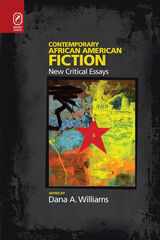 Contemporary African American Fiction: New Critical Essays
Edited by Dana A. Williams
Ohio State University Press, 2009 In Contemporary African American Fiction: New Critical Essays, edited by Dana A. Williams, eight contributors examine trends and ideas which characterize African American fiction since 1970. They investigate many of the key inquiries which inform discussions about the condition of contemporary African American fiction. The range of queries is wide and varied. How does African American fiction represent the changing times in America and the world? How are these changes reflected in narrative strategies or in narrative content? How do contemporary fictionists engage diasporic Africanisms, or how do they renegotiate Americanism? What is the impact of cultural production, gender, sexuality, nationality, and ethnicity on this fiction? How does contemporary African American fiction reconstruct or rewrite earlier “classic” African American, American, or world literature? Authors under study include Ernest J. Gaines, Ishmael Reed, Edwidge Danticat, Octavia E. Butler, Olympia Vernon, Toni Morrison, and Reginald McKnight, among others. These essays remind us that the African American literary tradition is about survival and liberation. The tradition is similarly about probing, challenging, changing, and redirecting accepted ways of thinking to ensure the wellness and the freedom of its community cohorts. The essays identify new ways contemporary African American fiction continues the tradition’s liberatory inclinations—they interrogate the ways in which antecedent texts and traditions influence contemporary texts to create new traditions.
The Contemporary African American Novel: Its Folk Roots and Modern Literary Branches
Bernard W. Bell
University of Massachusetts Press, 2004 In 1987 Bernard W. Bell published The Afro-American Novel and Its Tradition, a comprehensive history of more than 150 novels written by African Americans from 1853 to 1983. The book won the Distinguished Scholarship Award of the College Language Association and was reprinted five times. Now Bell has produced a new volume that serves as a sequel and companion to the earlier work, expanding the coverage to 2001 and examining the writings and traditions of a remarkably wide array of black novelists.
Contemporary African Cinema
Olivier Barlet
Michigan State University Press, 2016 African and notably sub-Saharan African film’s relative eclipse on the international scene in the early twenty-first century does not transcend the growth within the African genre. This time period has seen African cinema forging a new relationship with the real and implementing new aesthetic strategies, as well as the emergence of a post-colonial popular cinema.
Drawing on more than 1,500 articles, reviews, and interviews written over the past fifteen years, Olivier Barlet identifies the critical questions brought about by the evolution of African cinema. In the process, he offers us a personal and passionate vision, making this book an indispensable sum of thought that challenges preconceived ideas and enriches an approach to cinema as a critical art.
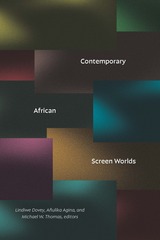 Contemporary African Screen Worlds
Lindiwe Dovey, Añulika Agina, and Michael W. Thomas, editors
Duke University Press, 2025 Contemporary African Screen Worlds brings together a new generation of African screen media scholars who explore and theorize the dynamic, interactive screen worlds that have arisen in contemporary Africa due to dramatic global changes in technology. Drawing on long-term fieldwork, extensive interviews, and specific case studies, the contributors bring to life the complex materialities and entanglements of film spectatorship, fandom, production, and circulation in Africa. They particularly attend to the interfaces among film audiences, actors, makers, platforms, and screens both small and large. Engaging with more than a dozen national contexts across the continent, the book reveals the diversity of African screen media practices and the creativity and agency of the people who passionately generate them, from film craftworkers in Nigeria and film students in Ghana to film fans in Rwanda and Burkina Faso. By focusing on the work of powerful platforms (such as Netflix and MTVShuga) and ordinary people (such as domestic workers watching Nollywood films in rural Kenya), this volume grapples with the effects and affects of digitization, mobile screens, media convergence, and the televisual turn in Africa.
Contributors. Moradewun Adejunmobi, Añulika Agina, Alexander Bud, Lindiwe Dovey, Femi Eromosele, Pier Paolo Frassinelli, Alexandra Grieve, Jonathan Haynes, Joe Jackson, Alessandro Jedlowski, Dennis-Brook Prince Lotsu, Alison MacAulay, Elastus Mambwe, Asteway M. Woldemichael, Nedine Moonsamy, Elizabeth Olayiwola, Temitayo Olofinlua, Rashida Resario, Estrella Sendra, Robin Steedman, Michael W. Thomas, Stefanie Van de Peer, Solomon Waliaula
 Contemporary Afro-Brazilian Short Fiction
Edited by Ana Cláudia Suriani da Silva, Julio Ludemir, and Maria Aparecida Andrade Salgueiro
University College London, 2024 A unique collection of Afro-Brazilian literature from both rising and well-known authors.
Besides Africa, Brazil is the largest Afro-descendant country, however, literature produced by Black Brazilians is predominantly unknown in Brazil and abroad. Contemporary Afro-Brazilian Short Fiction emerges from a collaborative translation project, bringing Afro-Brazilian literature to a global audience demanding Afro-diasporic literature, as well as decolonial practices and content. This unique bilingual compilation of twenty-one short stories includes both established and emerging Afro-Brazilian voices, fostering cross-cultural understanding and affirming the legitimacy of Black Portuguese, pretoguês, as a literary language. The editors each provide introductions that contextualize the works, while also engaging in theoretical debates, shedding light on the role of literary translation in language teaching and the impact of the Literary Festival of the Peripheries in forming a new generation of Black Brazilian writers.
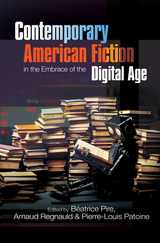 Contemporary American Fiction in the Embrace of the Digital Age
Edited by Beatrice Pire
Sussex Academic Press, 2022 This collection aims to examine the relationship between American fiction and innovations that marked the first decades of the 21st century: the Internet, social media, smart objects and environments, artificial intelligence, nanotechnologies, genetic engineering and other biotechnologies, transhumanism. These technological innovations redefine the way we live in and imagine our world, interact with each other, and understand the human being in his or her ever closer relationship to the machine—a human being no longer, as in the past, cared for or repaired, but now enhanced or replaced. What about our artistic and cultural practices? Are these recent advances changing language and literature? How is fiction transformed by technological progress and what representations of progress can it oppose? Can fiction offer a critique of the new media and the upheavals they precipitate? How does the temporality of literature respond to a technical time subjected to the imperative of efficiency, where the present is a slave to the future? Do virtual worlds challenge the primacy of literary fiction as a privileged mode of escape from daily life? In a context where software can generate literary works, can the force of poetical advent still oppose algorithmic logics? What becomes of the body in a world in which its technical extensions increase the externalization of its cognitive functions in media artifacts and digital networks? In order to explore these questions, scholars here investigate the American fiction of Russel Banks, Don DeLillo, David Foster Wallace, Jonathan Lethem, Tao Lin, Richard Powers, Kenneth Goldsmith, Jennifer Egan or Jonathan Franzen, as well as the Cyberpunk genre and the Neuronovel.
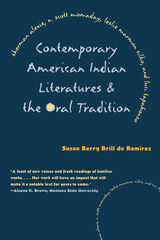 Contemporary American Indian Literatures and the Oral Tradition
Susan Berry Brill de Ramírez
University of Arizona Press, 1999 Because American Indian literatures are largely informed by their respective oral storytelling traditions, they may be more difficult to understand or interpret than the more text-based literatures with which most readers are familiar. In this insightful new book, Susan Berry Brill de Ramírez addresses the limitations of contemporary criticism and theory in opening up the worlds of story within American Indian literatures, proposing instead a conversive approach for reading and understanding these works. In order to fully understand American Indian literatures, Brill de Ramírez explains that the reader must become a listener-reader, an active participant in the written stories
. To demonstrate this point, she explores literary works both by established Native writers such as Sherman Alexie, N. Scott Momaday, Leslie Marmon Silko, and Luci Tapahonso and by less-well-known writers such as Anna Lee Walters, Della Frank, Lee Maracle, and Louis Owens. Through her literary engagements with many poems, novels, and short stories, she demonstrates a new way to read and understand the diverse body of American Indian literatures. Brill de Ramírez's conversive approach interweaves two interconnected processes: co-creating the stories by participating in them as listener-readers and recognizing orally informed elements in the stories such as verbal minimalism and episodic narrative structures.
Because this methodology is rooted in American Indian oral storytelling traditions, Native voices from these literary works are able to more directly inform the scholarly process than is the case in more textually based critical strategies. Through this innovative approach, Brill de Ramírez shows that literature is not a static text but an interactive and potentially transforming conversation between listener-readers, storyteller-writers, and the story characters as well. Her book furthers the discussion of how to read American Indian and other orally informed literatures with greater sensitivity to their respective cultural traditions and shows that the immediacy of the relationship between teller, story, and listener can also be experienced in the relationships between writers, literary works, and their listener-readers.
The Contemporary Arab Reader on Political Islam
Edited by Ibrahim M. Abu-Rabi' and Tere Vaden
Pluto Press, 2010 The Contemporary Arab Reader on Political Islam brings together the writings of highly influential figures in the field of Islamism in the contemporary Arab world, many of whose writings have never been available before in English.
Addressing the key issues such as human rights, civil society, secularism, globalisation and ummah, and the impact of the West on the modern Arab world, this is the perfect starting point for students and academics looking to understand 'Political Islam' in contemporary Arab and Muslim societies.
The contributors include such important Islamist thinkers and activists as Abdullah Azzam, central to the spread of Islamism in Afghanistan, Sayyid Muhammad Hussain Fadlallah, a major Shiite figure in contemporary Lebanon and Ahmad Bin Yousuf, a political advisor to Akram Haniyya in Gaza.
 Contemporary Arab Thought: Studies in Post-1967 Arab Intellectual History
Ibrahim M. Abu-Rabi'
Pluto Press, 2003 Contemporary Arab Thought is a complex term, encompassing a constellation of social, political, religious and ideological ideas that have evolved over the past two hundred years — ideas that represent the leading positions of the social classes in modern and contemporary Arab societies.
Distinguished Islamic scholar Ibrahim Abu-Rabi‘ addresses such questions as the Shari‘ah, human rights, civil society, secularism and globalization. This is complimented by a focused discussion on the writings of key Arab thinkers who represent established trends of thought in the Arab world, including Muhammad ‘Abid al-Jabiri, Adallah Laroui, Muhammad al-Ghazali, Rashid al-Ghannoushi, Qutatnine Zurayk, Mahdi ‘Amil and many others.
Before 1967, some Arab countries launched hopeful programmes of modernisation. After the 1967 defeat with Israel, many of these hopes were dashed. This book retraces the Arab world’s aborted modernity of recent decades. Abu-Rabi‘ explores the development of contemporary Arab thought against the historical background of the rise of modern Islamism, and the impact of the West on the modern Arab world.
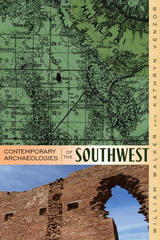 Contemporary Archaeologies of the Southwest
William Walker
University Press of Colorado, 2011 Organized by the theme of place and place-making in the Southwest, Contemporary Archaeologies of the Southwest emphasizes the method and theory for the study of radical changes in religion, settlement patterns, and material culture associated with population migration, colonialism, and climate change during the last 1,000 years. Chapters address place-making in Chaco Canyon, recent trends in landscape archaeology, the formation of identities, landscape boundaries, and the movement associated with these aspects of place-making. They address how interaction of peoples with objects brings landscapes to life. Representing a diverse cross section of Southwestern archaeologists, the authors of this volume push the boundaries of archaeological method and theory, building a strong foundation for future Southwest studies. This book will be of interest to professional and academic archaeologists, as well as students working in the American Southwest.
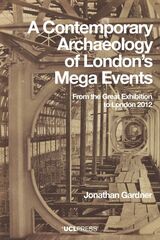 A Contemporary Archaeology of London's Mega Events: From the Great Exhibition to London 2012
Jonathan Gardner
University College London, 2022 The contemporary archaeology of urban mega-events.
This book explores the traces of London’s most significant modern “mega events”: the Great Exhibition of 1851, the 1951 Festival of Britain’s South Bank Exhibition, and the 2012 Olympic and Paralympic Games. Though only open for a few weeks or months, mega events permanently and disruptively reshape their host cities and societies: they demolish and rebuild whole districts, they draw in materials and participants from around the globe, and their organizers self-consciously seek to leave a “legacy” that will endure for decades or more. The book argues that these spectacles must thus be seen as long-lived and persistent, rather than simply transient or short-term phenomena. It explores the long-term history of each event through contemporary archaeology, examining the contents and building materials of the Great Exhibition’s Crystal Palace and their extraordinary afterlife at Sydenham, South London; how the Festival of Britain’s South Bank Exhibition employed displays of ancient history to construct a new postwar British identity; and how London 2012 dealt with competing visions of the past as archaeology, waste, and heritage in creating a vision of the future.
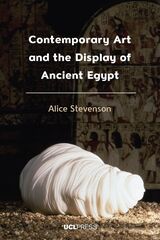 Contemporary Art and the Display of Ancient Egypt
Alice Stevenson
University College London, 2025 Beyond the illusion of dialogue—how contemporary art in Egyptian galleries is curated and controlled.
Contemporary art installations in Egyptian galleries are often framed as dialogues between past and present—but what if they are, instead, shaped by the museum itself? Contemporary Art and the Display of Ancient Egypt argues that both contemporary and ancient works are mediated through the structures and ideologies of the museum space. In this seminal work, Alice Stevenson examines how artists’ work influences museum discourse and public engagement with ancient artifacts.
Drawing on case studies from the British Museum, the Egyptian Museum in Turin, and the State Museum of Egyptian Art in Munich, this book assesses the motivations behind these interventions and their lasting impact. Through an evidence-based approach, Stevenson offers new insights into how curators, scholars, and artists can collaborate to create more meaningful and politically engaged museum experiences. Of particular interest to Egyptologists, museum professionals, and contemporary art scholars, this work redefines the role of artistic intervention in shaping our understanding of ancient cultures.
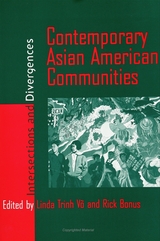 Contemporary Asian American Communities: Intersections And Divergences
edited by Linda Trinh Võ and Rick Bonus
Temple University Press, 2002 Once thought of in terms of geographically bounded spaces, Asian America has undergone profound changes as a result of post-1965 immigration as well as the growth and reshaping of established communities. This collection of original essays demonstrates that conventional notions of community, of ethnic enclaves determined by exclusion and ghettoization, now have limited use in explaining the dynamic processes of contemporary community formation.Writing from a variety of perspectives, these contributors expand the concept of community to include sites not necessarily bounded by space; formations around gender, class, sexuality, and generation reveal new processes as well as the demographic diversity of today's Asian American population. The case studies gathered here speak to the fluidity of these communities and to the need for new analytic approaches to account for the similarities and differences between them. Taken together, these essays forcefully argue that it is time to replace the outworn concept of a monolithic Asian America.
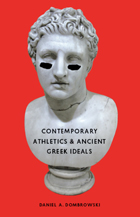 Contemporary Athletics and Ancient Greek Ideals
Daniel A. Dombrowski
University of Chicago Press, 2009 Despite their influence in our culture, sports inspire dramatically less philosophical consideration than such ostensibly weightier topics as religion, politics, or science. Arguing that athletic playfulness coexists with serious underpinnings, and that both demand more substantive attention, Daniel Dombrowski harnesses the insights of ancient Greek thinkers to illuminate contemporary athletics. Dombrowski contends that the ideas of Plato, Aristotle, and Plotinus shed important light on issues—such as the pursuit of excellence, the concept of play, and the power of accepting physical limitations while also improving one’s body—that remain just as relevant in our sports-obsessed age as they were in ancient Greece. Bringing these concepts to bear on contemporary concerns, Dombrowski considers such questions as whether athletic competition can be a moral substitute for war, whether it necessarily constitutes war by other means, and whether it encourages fascist tendencies or ethical virtue. The first volume to philosophically explore twenty-first-century sport in the context of its ancient predecessor, Contemporary Athletics and Ancient Greek Ideals reveals that their relationship has great and previously untapped potential to inform our understanding of human nature.
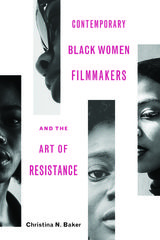 Contemporary Black Women Filmmakers and the Art of Resistance
Christina N. Baker
Ohio State University Press, 2018 Christina N. Baker’s Contemporary Black Women Filmmakers and the Art of Resistance is the first book-length analysis of representations of Black femaleness in the feature films of Black women filmmakers. These filmmakers resist dominant ideologies about Black womanhood, deliberately and creatively reconstructing meanings of Blackness that draw from their personal experiences and create new symbolic meaning of Black femaleness within mainstream culture. Addressing social issues such as the exploitation of Black women in the entertainment industry, the impact of mass incarceration on Black women, political activism, and violence, these films also engage with personal issues as complex as love, motherhood, and sexual identity. Baker argues that their counter-hegemonic representations have the potential to transform the narratives surrounding Black femaleness. At the intersection of Black feminism and womanism, Baker develops a “womanist artistic standpoint” theory, drawing from the work of Alice Walker, Patricia Hill Collins, bell hooks, Audre Lorde, and Kimberlé Crenshaw.
Analyzing the cultural texts of filmmakers such as Ava DuVernay, Tanya Hamilton, Kasi Lemmons, Gina Prince-Bythewood, and Dee Rees—and including interviews she conducted with three of the filmmakers—Baker emphasizes the importance of applying an intersectional perspective that centers on the shared experiences of Black women and the role of film as a form of artistic expression and a tool of social resistance.
 Contemporary British and Italian Sound Docudrama: Traditions and Innovations
Sabina Macchiavelli
Intellect Books, 2023 Explores the last thirty years of radio docufiction in Italy and the United Kingdom.
Located at the crossroads of fact and invention, docudrama constitutes a rich field of investigation for media studies. Despite the hybrid nature of this subject and a recent boom in podcasting, scholars have mainly concentrated on film rather than audio docufiction. Sabina Macchiavelli remedies this with an analysis of Italian and British docudramas that explores the ambiguities of this form, looking at their structure and form, as well as the type of understanding they convey. She investigates the ways that sound effects, music, recorded events, voices, and silence can work to fictionalize audio productions that sit somewhere between journalism and fully dramatized readings or plays. This interplay between fact, fiction, and sound subverts accepted knowledge and produces an alternative view of personal and historical matters, one that may complement or complicate the accepted version of the truth. Macchiavelli builds her case with studies from the British Broadcasting Corporation and the Radio Audizioni Italiane, tracing parallels and divergences within their programming to dig into the docudrama’s paradoxical nature and the ambiguities it yields.
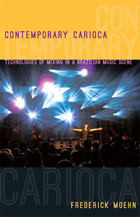 Contemporary Carioca: Technologies of Mixing in a Brazilian Music Scene
Frederick Moehn
Duke University Press, 2012 Brazilian popular music is widely celebrated for its inventive amalgams of styles and sounds. Cariocas, native residents of Rio de Janeiro, think of their city as particularly conducive to musical mixture, given its history as a hub of Brazilian media and culture. In Contemporary Carioca, the ethnomusicologist Frederick Moehn introduces a generation of Rio-based musicians who collaboratively have reinvigorated Brazilian genres, such as samba and maracatu, through juxtaposition with international influences, including rock, techno, and funk. Moehn highlights the creativity of individual artists, including Marcos Suzano, Lenine, Pedro Luís, Fernanda Abreu, and Paulinho Moska. He describes how these artists manage their careers, having reclaimed some control from record labels. Examining the specific meanings that their fusions have in the Carioca scene, he explains that musical mixture is not only intertwined with nationalist discourses of miscegenation, but also with the experience of being middle-class in a country confronting neoliberal models of globalization. At the same time, he illuminates the inseparability of race, gender, class, place, national identity, technology, and expressive practice in Carioca music and its making. Moehn offers vivid depictions of Rio musicians as they creatively combine and reconcile local realities with global trends and exigencies.
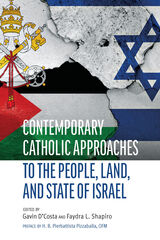 Contemporary Catholic Approaches to the People, State, and Land of Israel
Gavin D'Costa
Catholic University of America Press, 2021 After Vatican II, the Roman Catholic Church began a process of stripping away anti-Jewish sentiments within its theological culture. One question that has arisen and received very scant attention regards the theological significance of the founding of the state of Israel in 1948 – and the attendant nakba, the plight of the Palestinian people. Some American evangelical Christians have developed a theology around the state of Israel, associating themselves with Zionism. Some Christian groups have developed a theology around the suffering of the Palestinian people and demand resistance to Zionism.
This unique collection of essays from leading Catholic theologians from the United States, Germany, France, Italy, Switzerland, England, and the Middle East reflect on the theological status of the land of Israel. These essays represent an exhaustive range of views. None avoid the new Catholic theology regarding the Jewish people. Some contributors see this as leading towards a positive theological affirmation of the state of Israel, while distancing themselves from Christian Zionists. All contributors are committed to rights of the Palestinian people. Some affirm the need for strong diplomatic and political support for Israel along with equal support for Palestinians, arguing that this is as far as the Church can go. Others argue that the Church’s emerging theology represents the guilt conscience of Europe at the cost of the Palestinian people. None deny the right of Jews to live in the land.
Two Jewish scholars respond to the essays creating an atmosphere of genuine interfaith dialogue which serves Catholics to think further through these issues.
 Contemporary Catholic Health Care Ethics
David F. Kelly
Georgetown University Press, 2004 As David Kelly writes, "Catholic moral theology has not been completely constant over the centuries; it has learned and developed." In Contemporary Catholic Health Care Ethics he demonstrates how Catholic health care ethics can—and should—evolve similarly in response to the lightning speed of modern medical advances. Kelly draws on and analyzes the Catholic tradition of medical ethics—but he does not shy away from criticizing it as well, giving health care professionals, hospital ethics committees, and students a fresh treatment of Catholic health care ethics emphasizing theology, methodology, and application. First discussing the Catholic understanding of the human person, Kelly proposes a Catholic Christian approach to the meaning of human life as it applies specifically to health care. He includes a brief history of the relationship between religion and medicine, and makes strong claims about how theology ought and ought not to be applied in health care ethics. Drawing from the terminology and approaches used by secular bioethics, he suggests how a Catholic perspective on health care can utilize certain secular moral-philosophical positions, even as they apply to the issues of birth control, and end-of life concerns. As practitioners, patients, and families face the difficult decision to continue or stop treatment for dying patients, Kelly compassionately, but practically, explores their concerns in light of American law and ethics. Finally, he provides measured insight on pain management, hospital ethics committees, stem cell research, genetic engineering, and allocation of health care resources. Contemporary Catholic Health Care Ethics is informed, challenging, articulate, and bold—bringing to the extremely important field of Catholic health care ethics a much-needed and welcome voice, unafraid to speak to the most difficult issues of the 21st century.
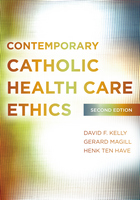 Contemporary Catholic Health Care Ethics: Second Edition
David F. Kelly, Gerard Magill, and Henk ten Have
Georgetown University Press, 2015 Contemporary Catholic Health Care Ethics, Second Edition, integrates theology, methodology, and practical application into a detailed and practical examination of the bioethical issues that confront students, scholars, and practitioners. Noted bioethicists Gerard Magill, Henk ten Have, and David F. Kelly contribute diverse backgrounds and experience that inform the richness of new material covered in this second edition. The book is organized into three sections: theology (basic issues underlying Catholic thought), methodology (how Catholic theology approaches moral issues, including birth control), and applications to current issues. New chapters discuss controversial end-of-life issues such as forgoing treatment, killing versus allowing patients to die, ways to handle decisions for incompetent patients, advance directives, and physician-assisted suicide. Unlike anthologies, the coherent text offers a consistent method in order to provide students, scholars, and practitioners with an understanding of ethical dilemmas as well as concrete examples to assist in the difficult decisions they must make on an everyday basis.
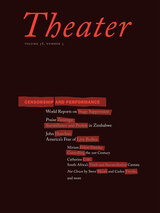 Contemporary Censorship and Performance, Volume 38
Miriam Felton-Dansky and Tom Sellar, eds.
Duke University Press This special issue of Theater explores the political, cultural, and economic factors that have led to controversies surrounding live performance around the world. Recent global political shifts have resulted in renewed interest in questions of censorship and free expression and have demonstrated that theater has become a cultural third rail, igniting controversy and provoking attempts at suppression. Contributors explore manifestations of theater censorship—from New York to Birmingham (England) to Beirut to Tashkent (Uzbekistan)—and address both direct, state-sponsored suppression as well as the disparate cultural pressures that hamper theatrical expression, such as financial pressures and political, ethnic, and religious sensitivities. The collection includes an essay that explores the function of live performance in recent freedom-of-expression debates, such as those featuring Janet Jackson and Don Imus, and persistent national anxieties about performers’ bodies. The issue also features an international censorship forum that brings together reports of incidents from Burma, Singapore, Germany, Italy, and the United States. A special report from Zimbabwe provides an in-depth look at the repression of oppositional theater by one of Africa’s most dictatorial regimes while another article looks at REwind: A Cantata for Voice, Tape and Testimony, a new musical composition that takes once-silenced voices recorded for South Africa’s Truth and Reconciliation Commission and transforms them into a hymn for a postapartheid nation. The issue also includes the first publication of an inventive new play that is a satirical as well as chilling look at suppression and dissent in post-9/11 America. Contributors: Howard Barker, Reverend Billy, Catherine Cole, Mike Daisey, Dean Damjanovski, Miriam Felton-Dansky, Jacob Gallagher-Ross, John Houchin, Rabih Mroué, Freddie Rokem, Tom Sellar, Fadi Toufiq, Praise Zenenga
Contemporary Challenges in Securing Human Rights
Edited by Corinne Lennox
University of London Press, 2015 To celebrate the 20th anniversary of the MA in Understanding and Securing Human Rights offered at the School of Advanced Study, University of London, we are pleased to publish a commemorative edited volume on human rights themes authored by distinguished alumni and faculty. The chapters reflect on cutting-edge challenges in the field of human rights. Topics include refugee protection, women’s human rights, business and human rights, the role of national and international legal mechanisms and emerging themes such as tax justice, rights in the digital age, theories of change, and poetry. It is a credit to the MA programme that the chapters are rich with critical analysis, diverse expertise and innovative approaches.This book will be essential reading for students of human rights and practitioners who can benefit from the insights into theory and practice offered here.
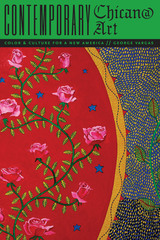 Contemporary Chican@ Art: Color and Culture for a New America
By George Vargas
University of Texas Press, 2010 From its inception in the 1960s to its present form, contemporary Mexican American or Chicano art has developed as an art of identity, asserting the uniqueness of Chicanos and their dual Mexican and U.S. American cultural backgrounds. Because it emerged as a social phenomenon, however, many people outside the Chicano community have perceived Chicano art as merely protest art or social commentary, and Mexican American artists have been largely ignored in mainstream museums and absent in art history texts on American art. Yet more than ever before, Chicano art is diverse in medium, style, technique, and content—the cutting edge of a bold attempt to redefine and advance the American experience through new ideas of who we are as Americans and what American art is. Contemporary Chican@ Art is a general introduction and guide to one of the most exciting and meaningful expressions in contemporary American art. Intended for the casual reader as well as for art history scholars and students, the book provides an overview of work created from the 1960s to the present. George Vargas follows the dramatic evolution of Chicano art within the broader context of American cultural history. He shows that while identity politics was and still is a prevailing force in Chicano expression, Chicano art has undergone a remarkable transformation, shifting from a strict Chicano perspective to a more universal one, while still remaining a people's art. In the concluding chapter, Vargas takes an in-depth look at selected Chicano artists who share their thoughts about the Chicano artistic enterprise and their own work.
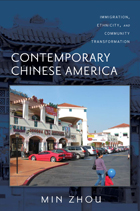 Contemporary Chinese America: Immigration, Ethnicity, and Community Transformation
Min Zhou, foreword by Alejandro Portes
Temple University Press, 2009 Contemporary Chinese America is the most comprehensive sociological investigation of the experiences of Chinese immigrants to the United States—and of their offspring—in the late twentieth and early twenty-first centuries. The author, Min Zhou, is a well-known sociologist of the Chinese American experience. In this volume, she collects her original research on a range of subjects, including the causes and consequences of emigration from China, demographic trends of Chinese Americans, patterns of residential mobility in the U.S., Chinese American "ethnoburbs," immigrant entrepreneurship, ethnic enclave economies, gender and work, Chinese language media, Chinese schools, and intergenerational relations. The concluding chapter, "Rethinking Assimilation," ponders the future for Chinese Americans. Also included are an extensive bibliography and a list of recommended documentary films. While the book is particularly well-suited for college courses in Chinese American studies, ethnic studies, Asian studies, and immigration studies, it will interest anyone who wants to more fully understand the lived experience of contemporary Chinese Americans.
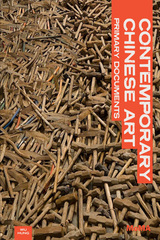 Contemporary Chinese Art: Primary Documents
Wu Hung, editor
Duke University Press, 2010 Despite the liveliness and creativity of avant-garde Chinese art in the post-Mao era and its prominence in the world of international contemporary art, until now there has been no systematic introduction to this important work in any Western language. Moreover, most of the relevant primary documents have existed only in Chinese, scattered in hard-to-find publications. Contemporary Chinese Art remedies this situation by bringing together carefully selected primary texts in English translation. Arranged in chronological order, the texts guide readers through the development of avant-garde Chinese art from 1976 until 2006. Because experimental Chinese art emerged as a domestic phenomenon in the 1970s and 1980s and its subsequent development has been closely related to China’s social and economical transformation, this volume focuses on art from mainland China. At the same time, it encompasses the activities of mainland artists residing overseas, since artists who emigrated in the 1980s and 1990s were often key participants in the early avant-garde movements and have continued to interact with the mainland art world. The primary documents include the manifestos of avant-garde groups, prefaces to important exhibitions, writings by representative artists, important critical and analytical essays, and even some official documents. Each chapter and section begins with a concise preface explaining the significance of the texts and providing the necessary historical background; the volume includes a timeline summarizing important art phenomena and related political events. Publication of the Museum of Modern Art
|
|
